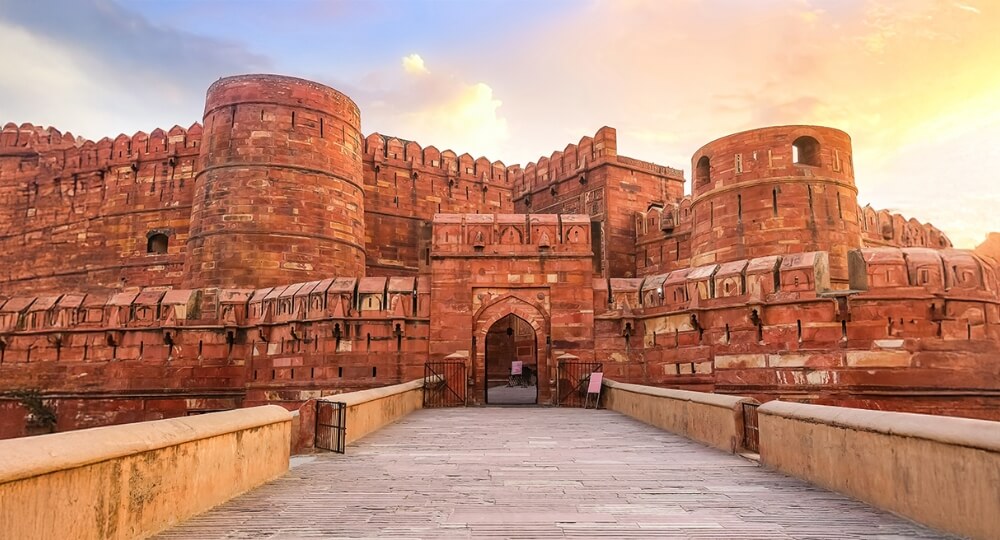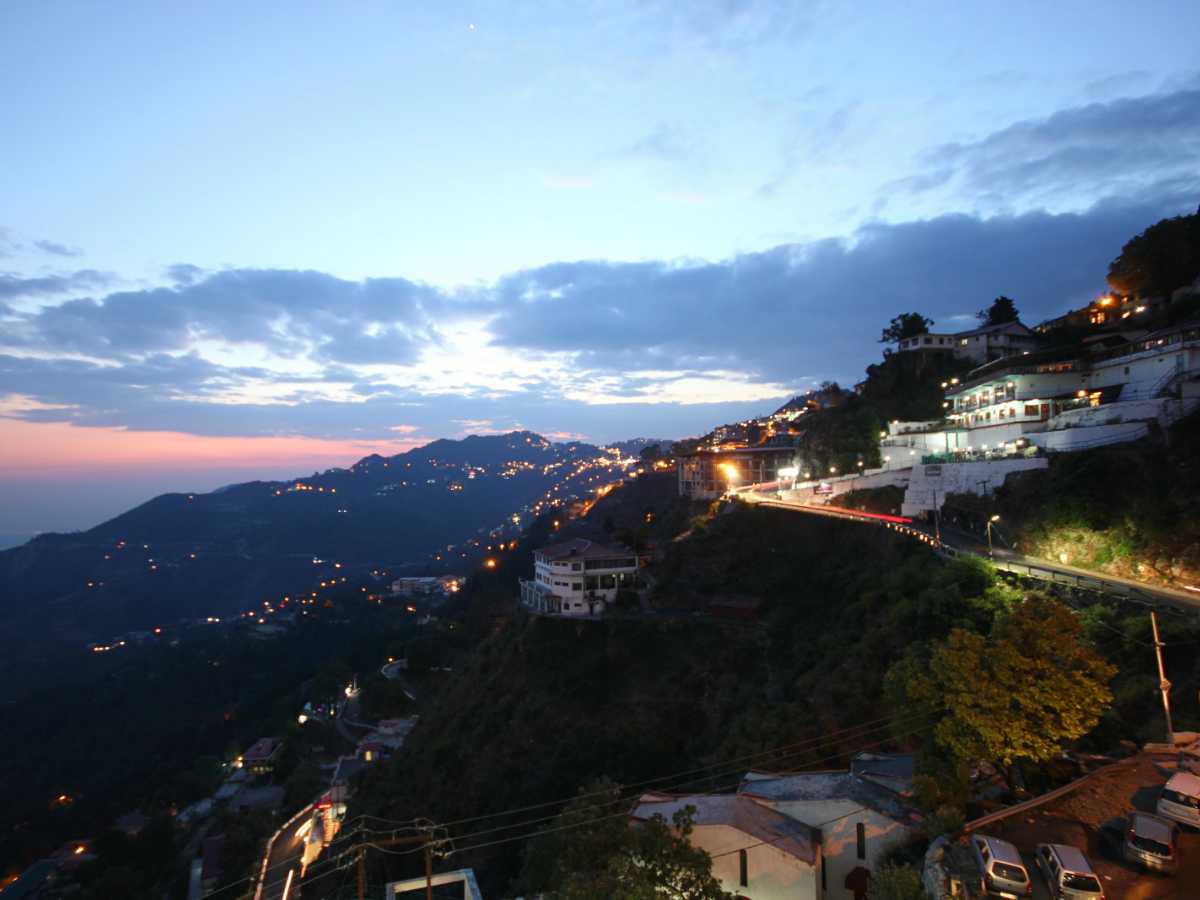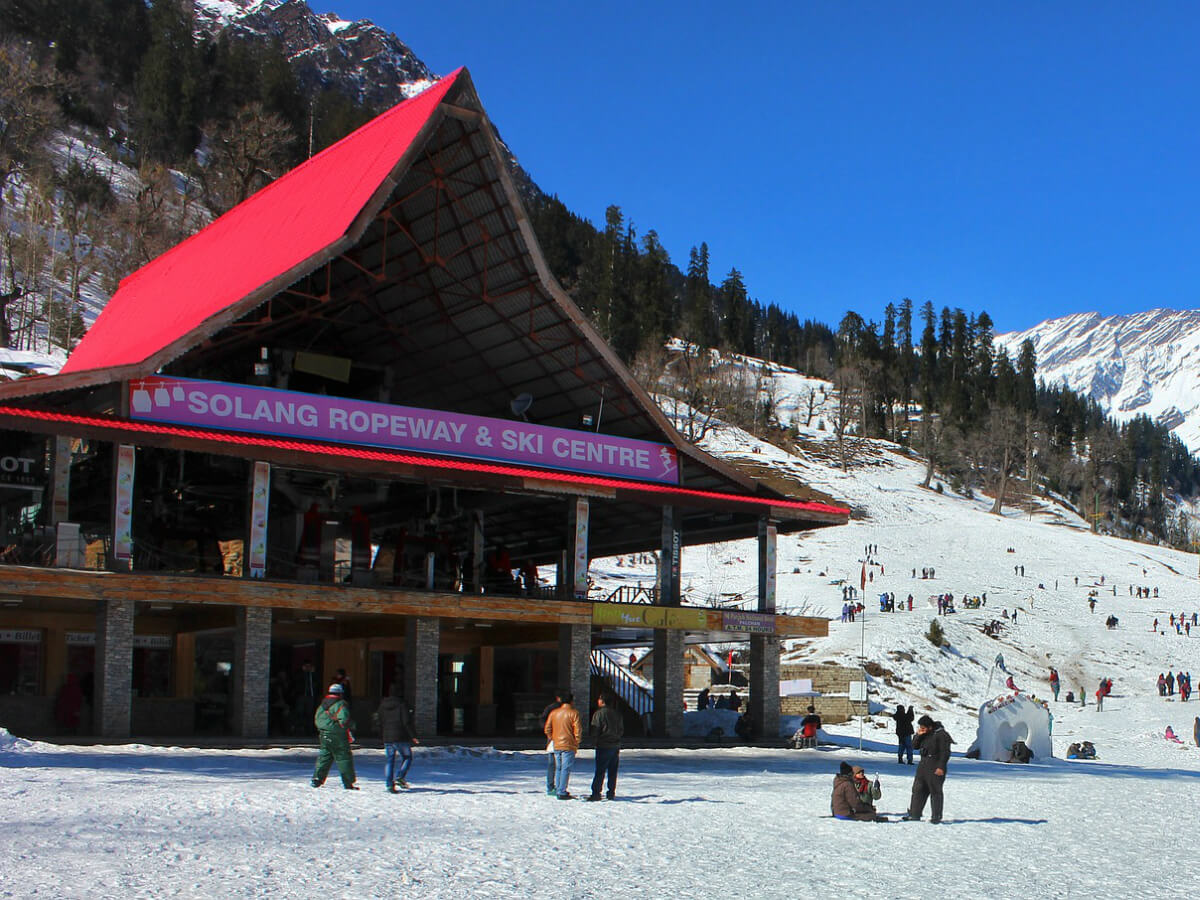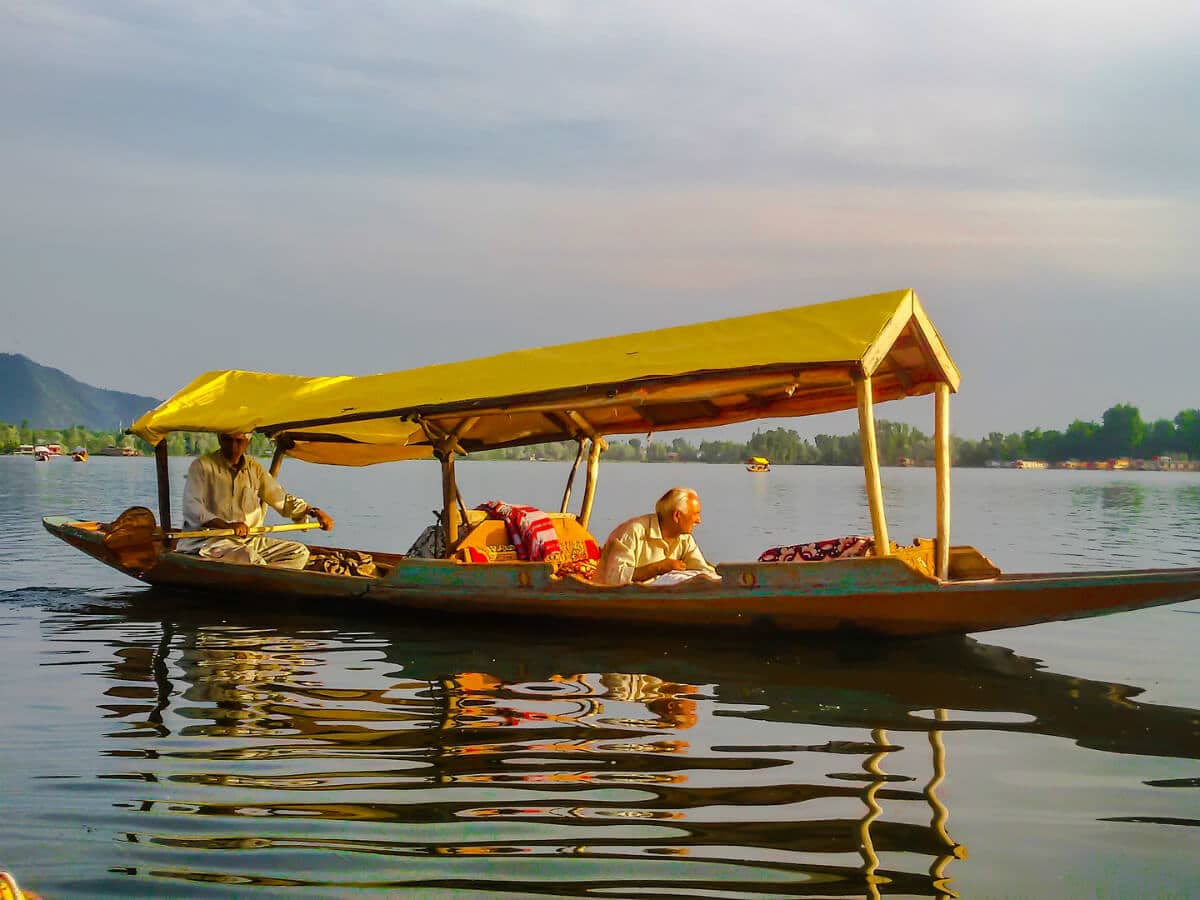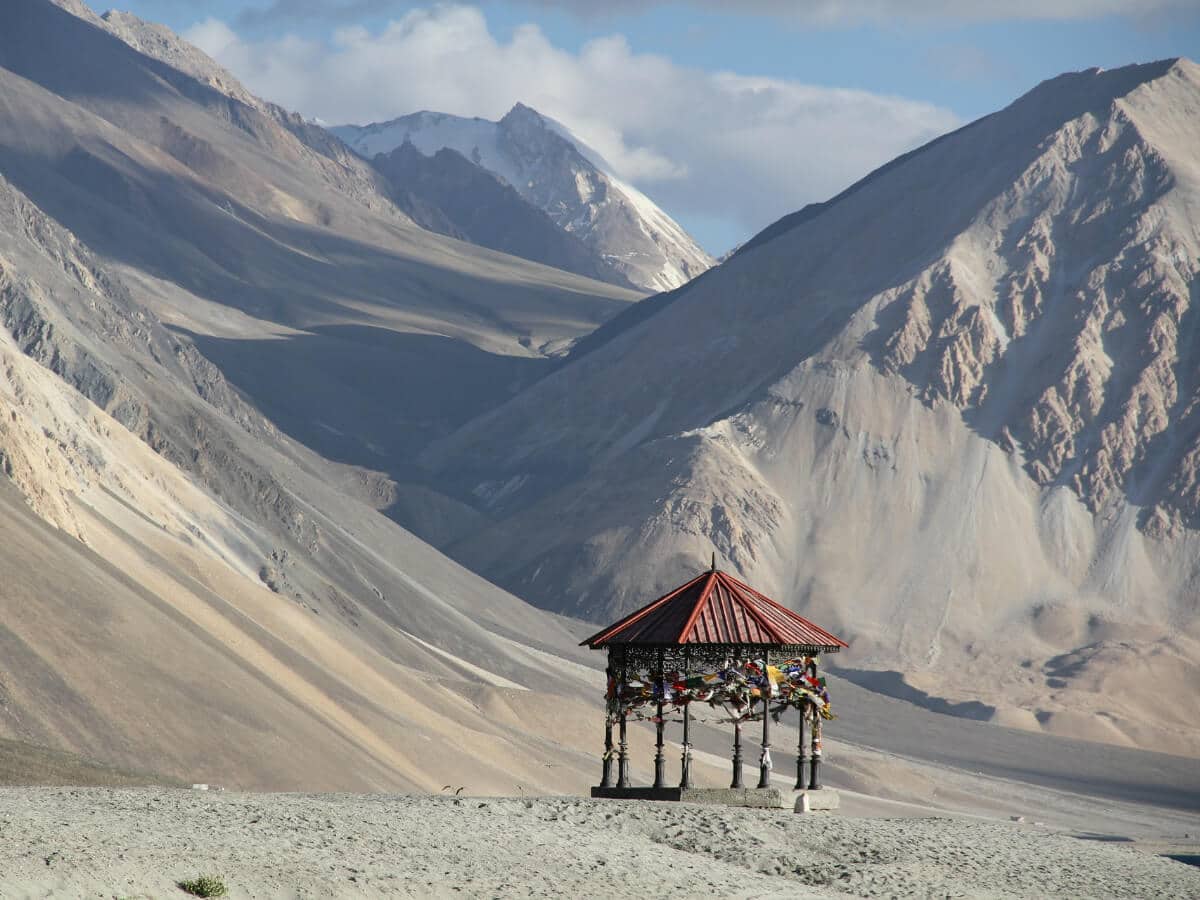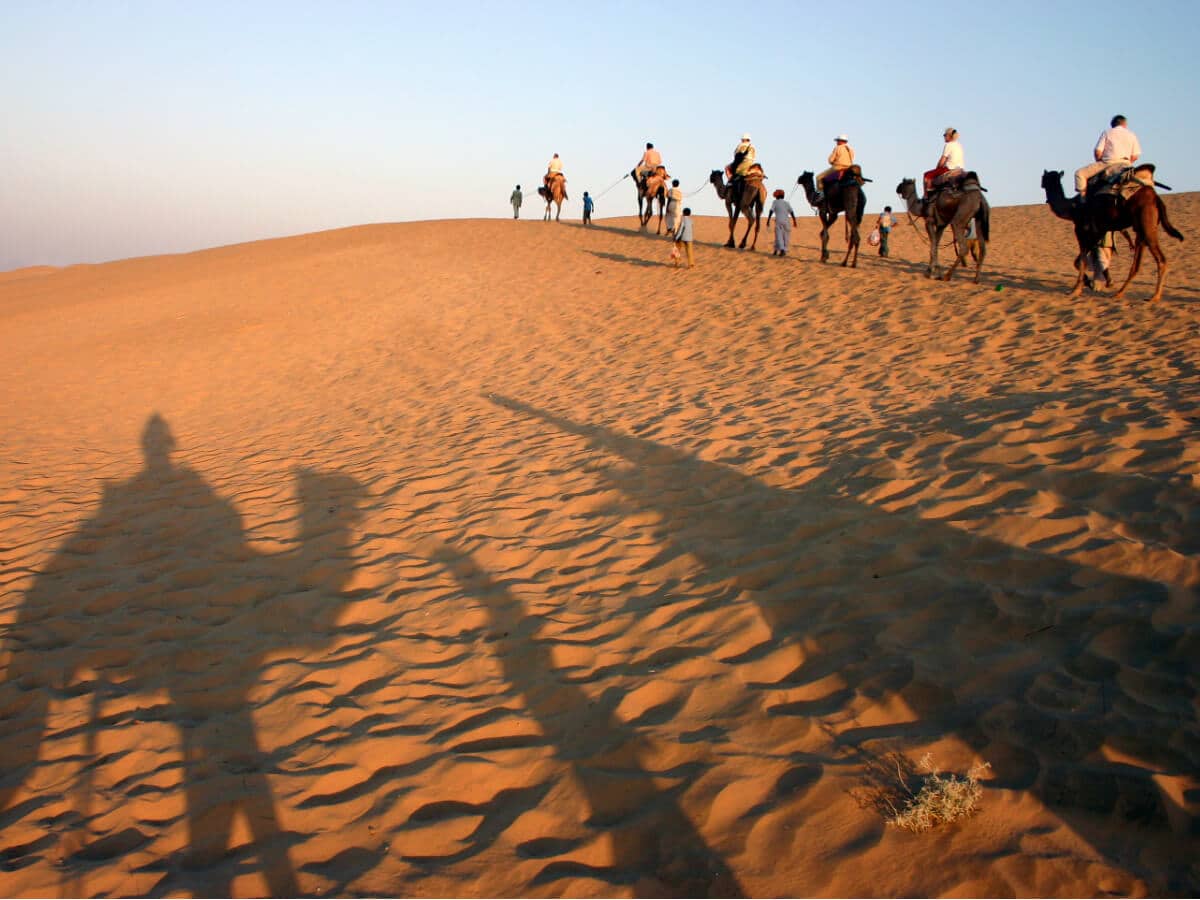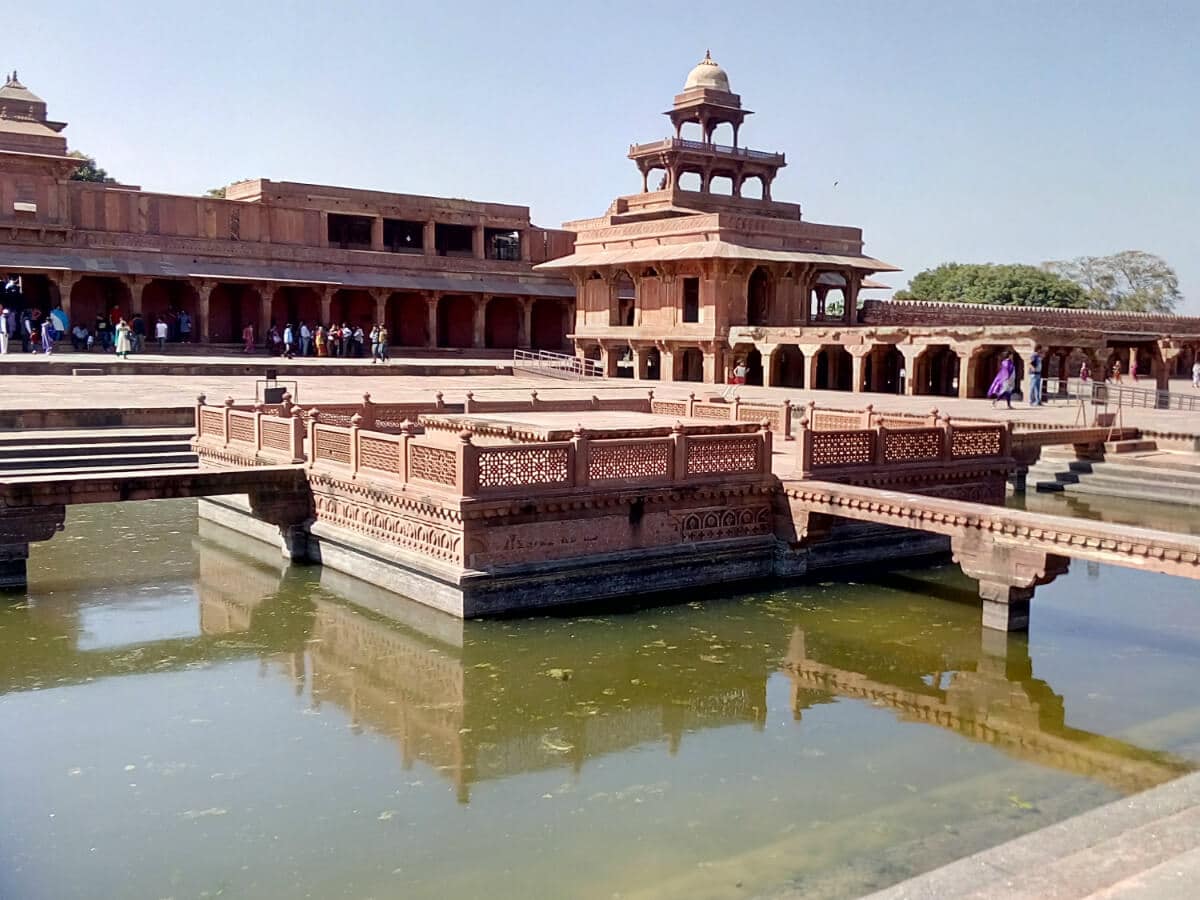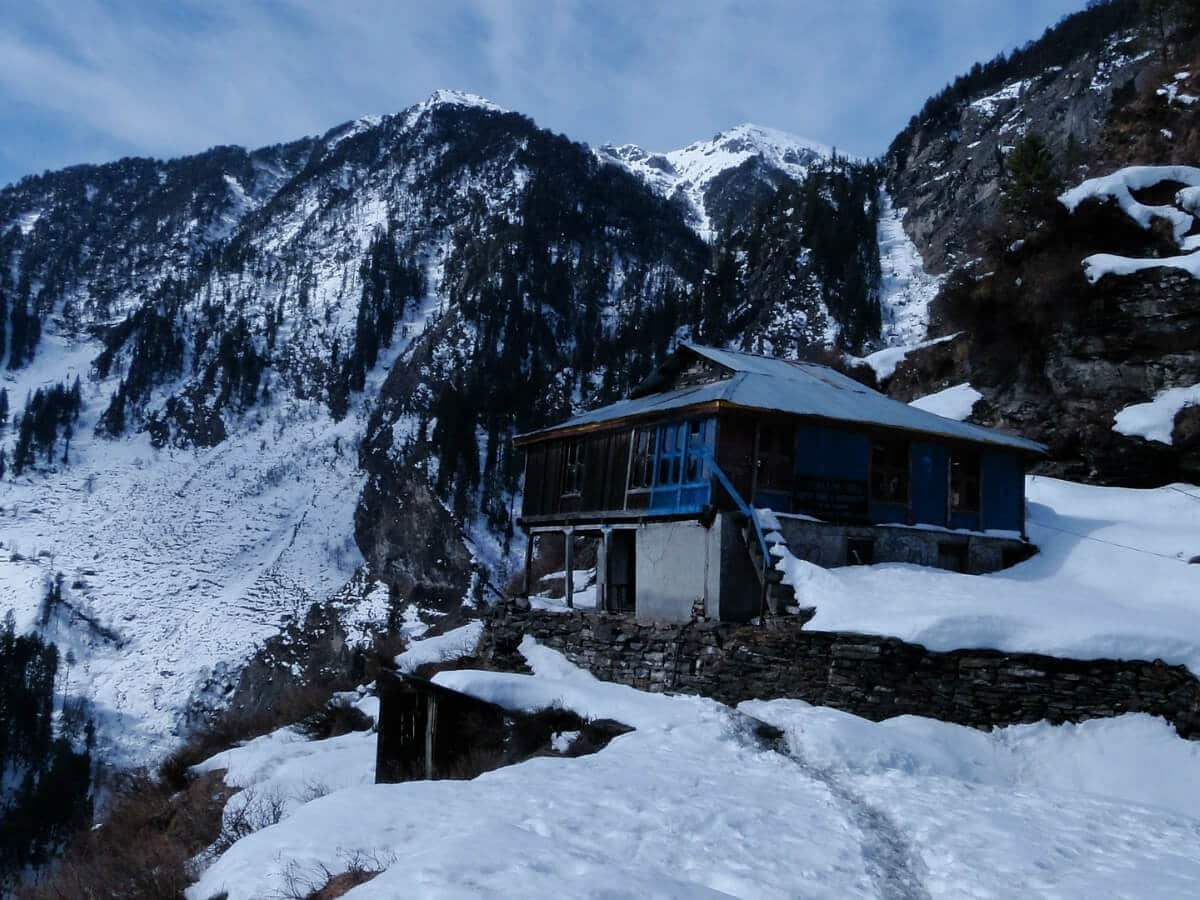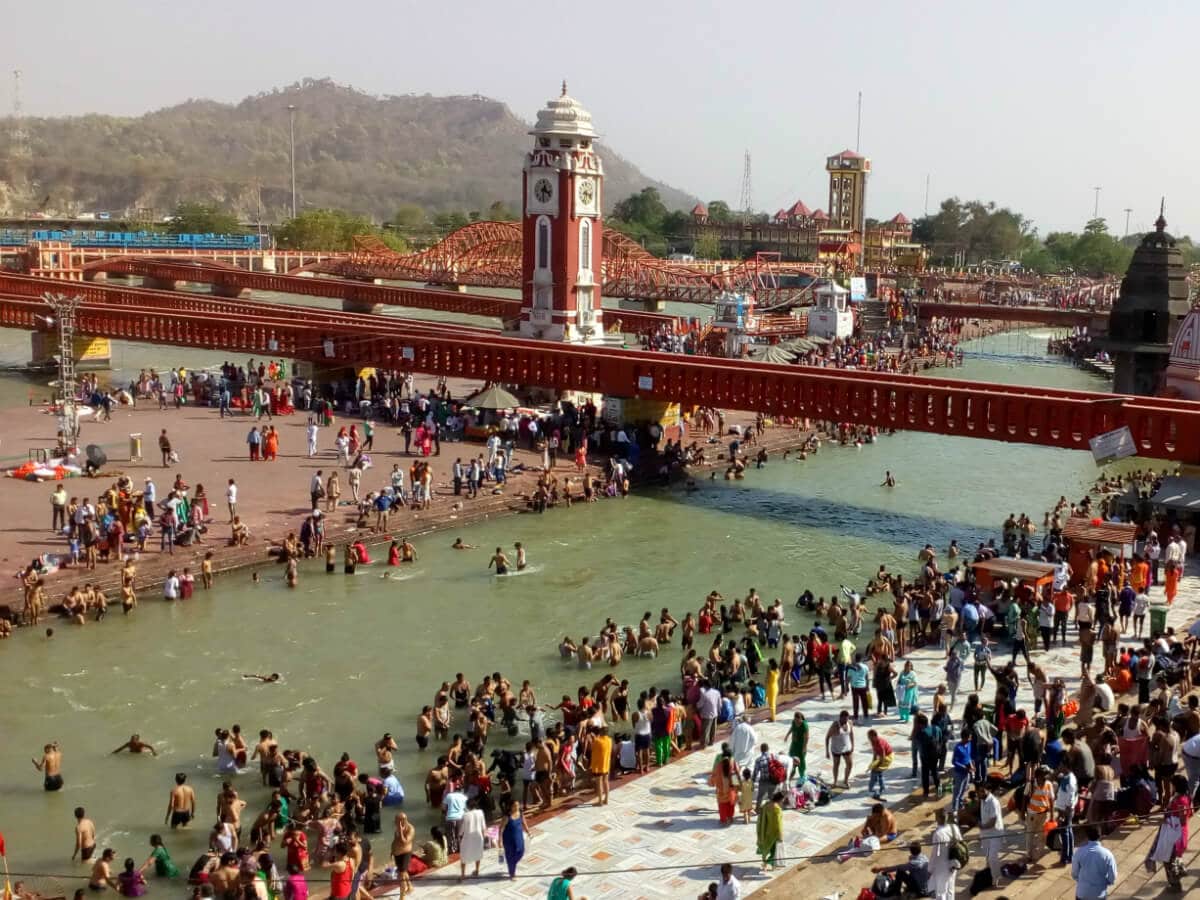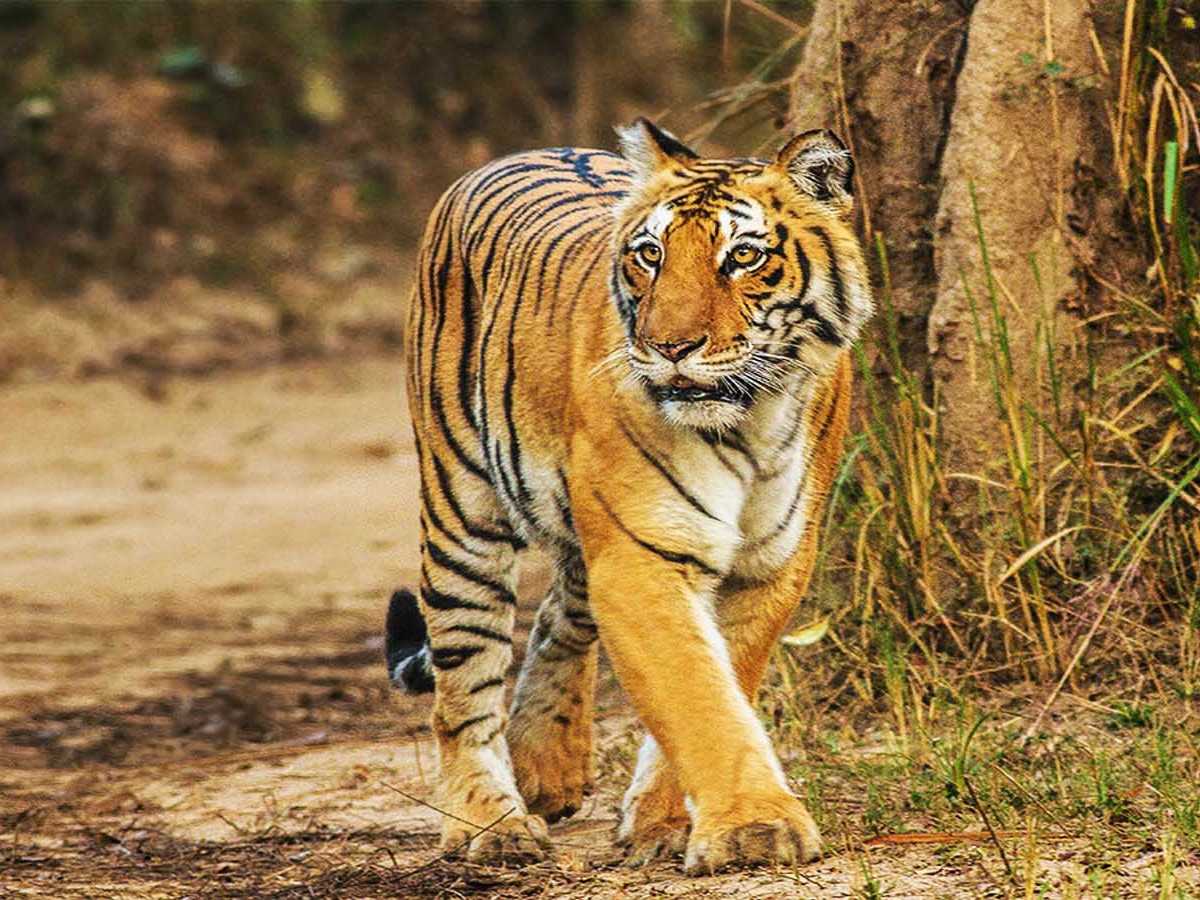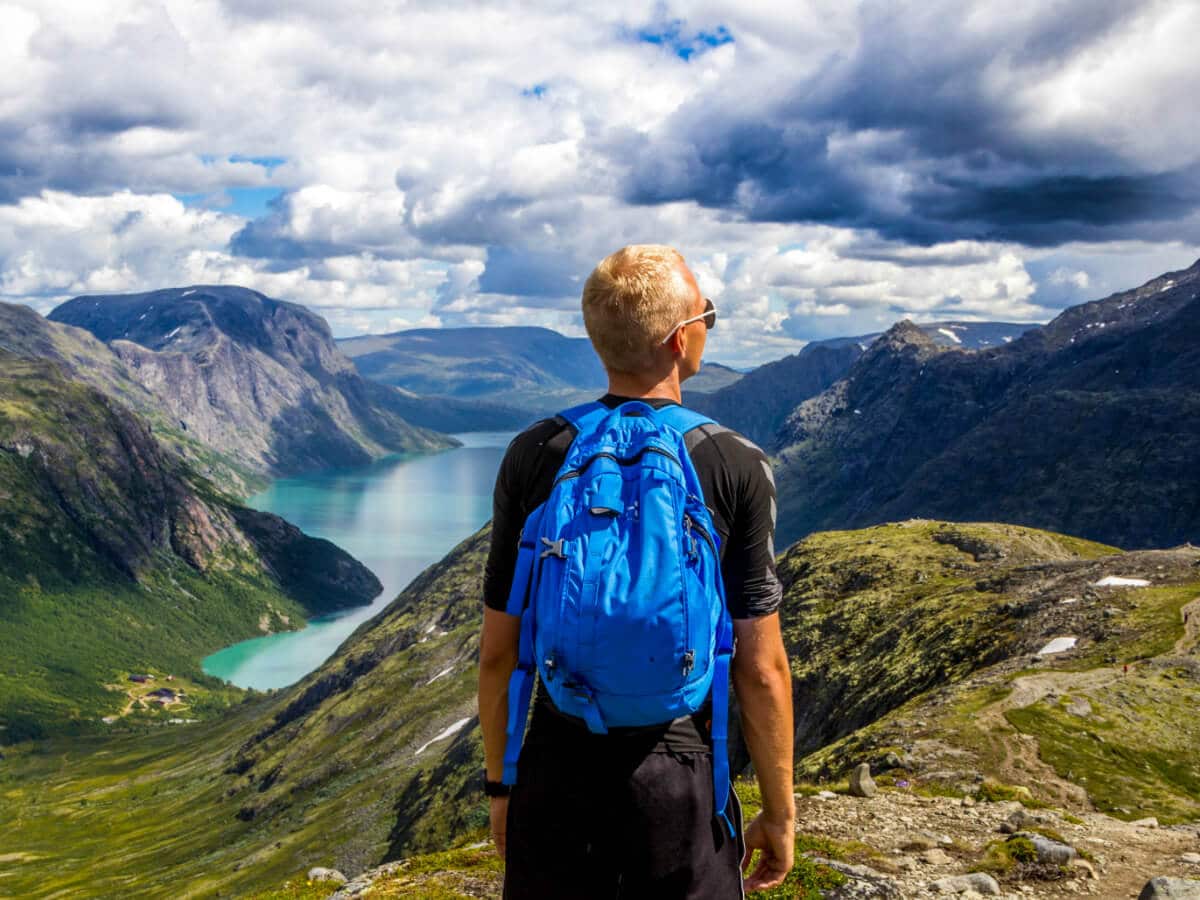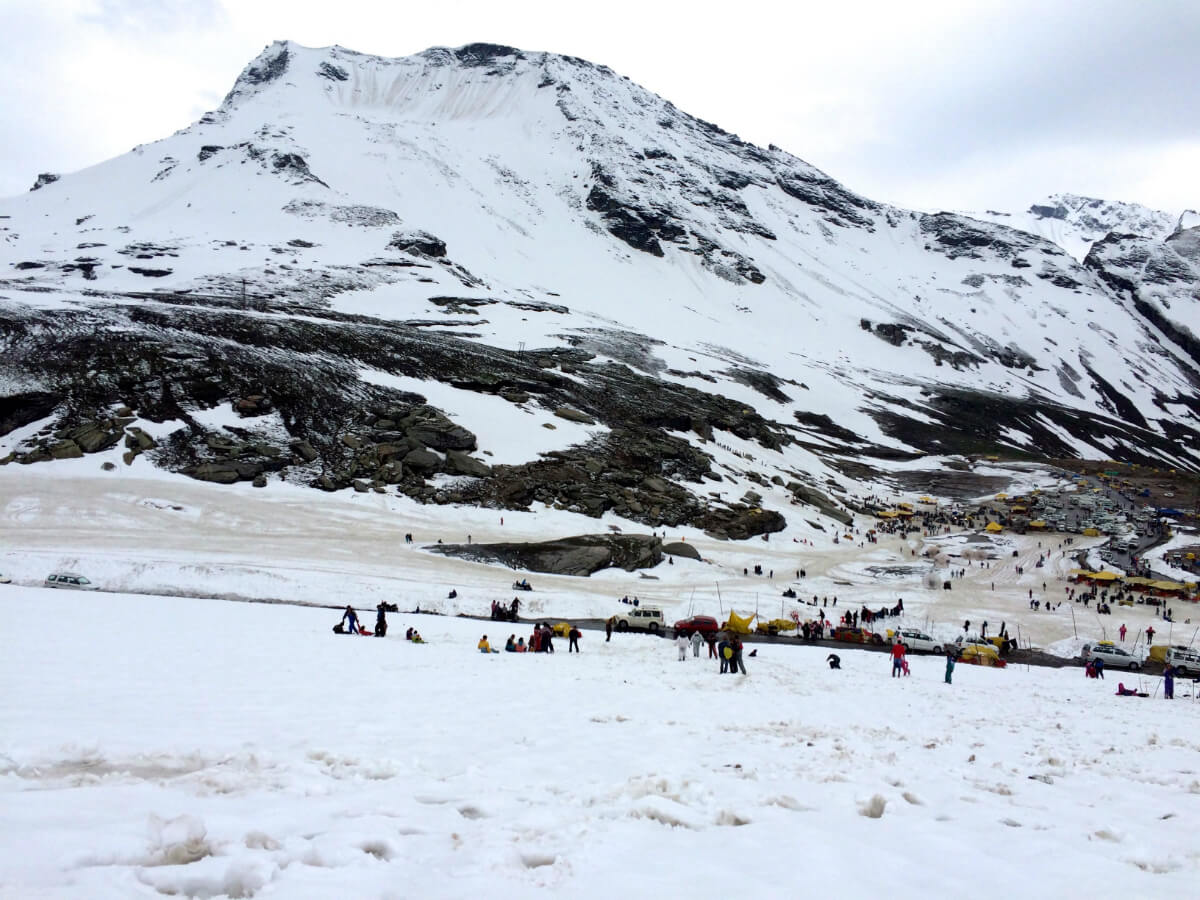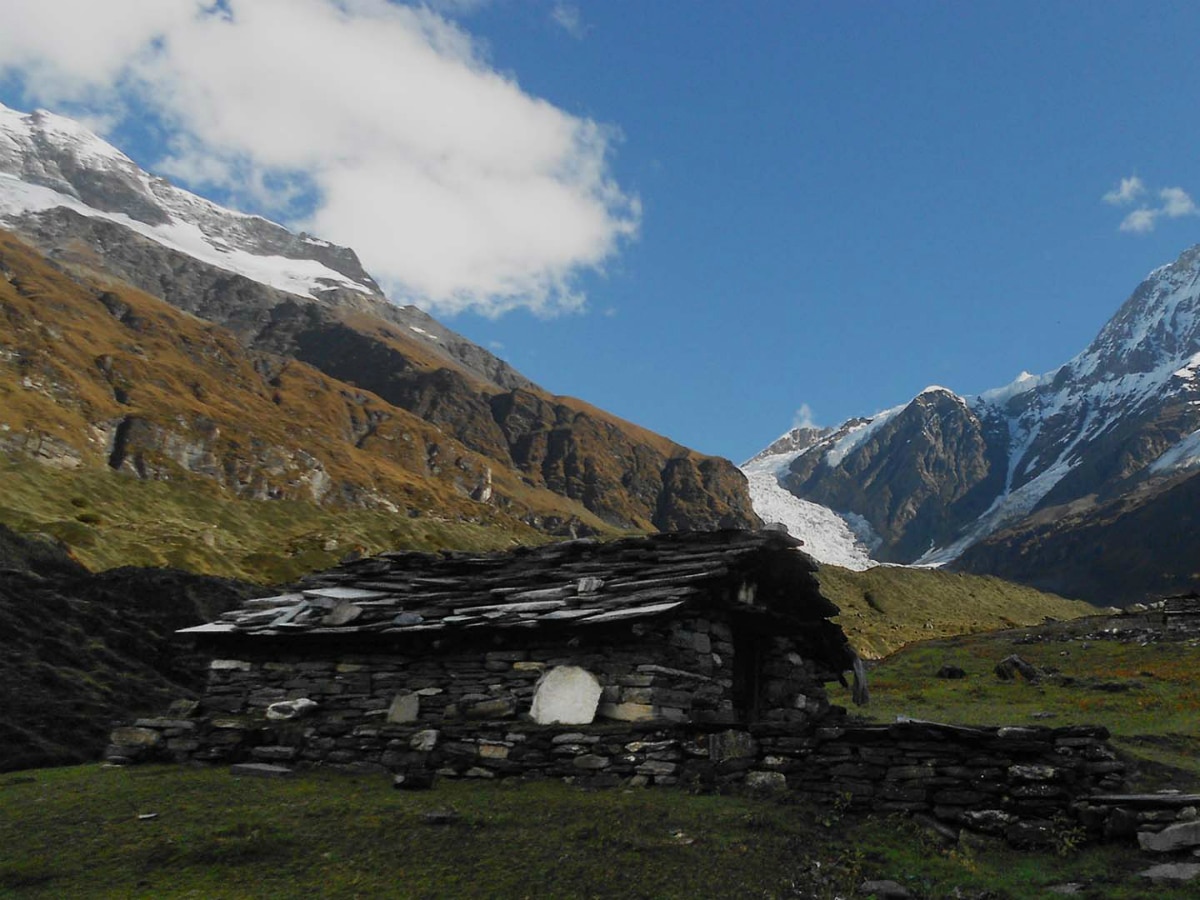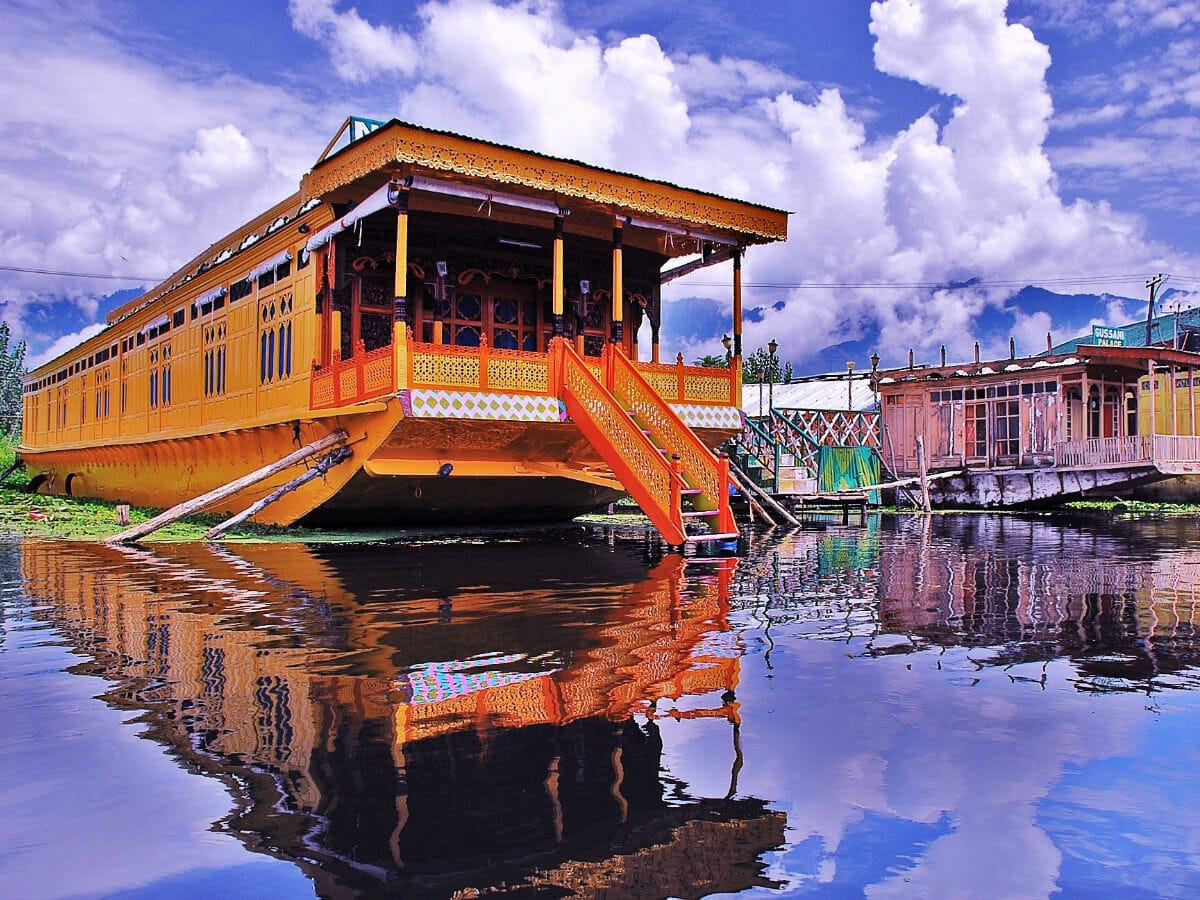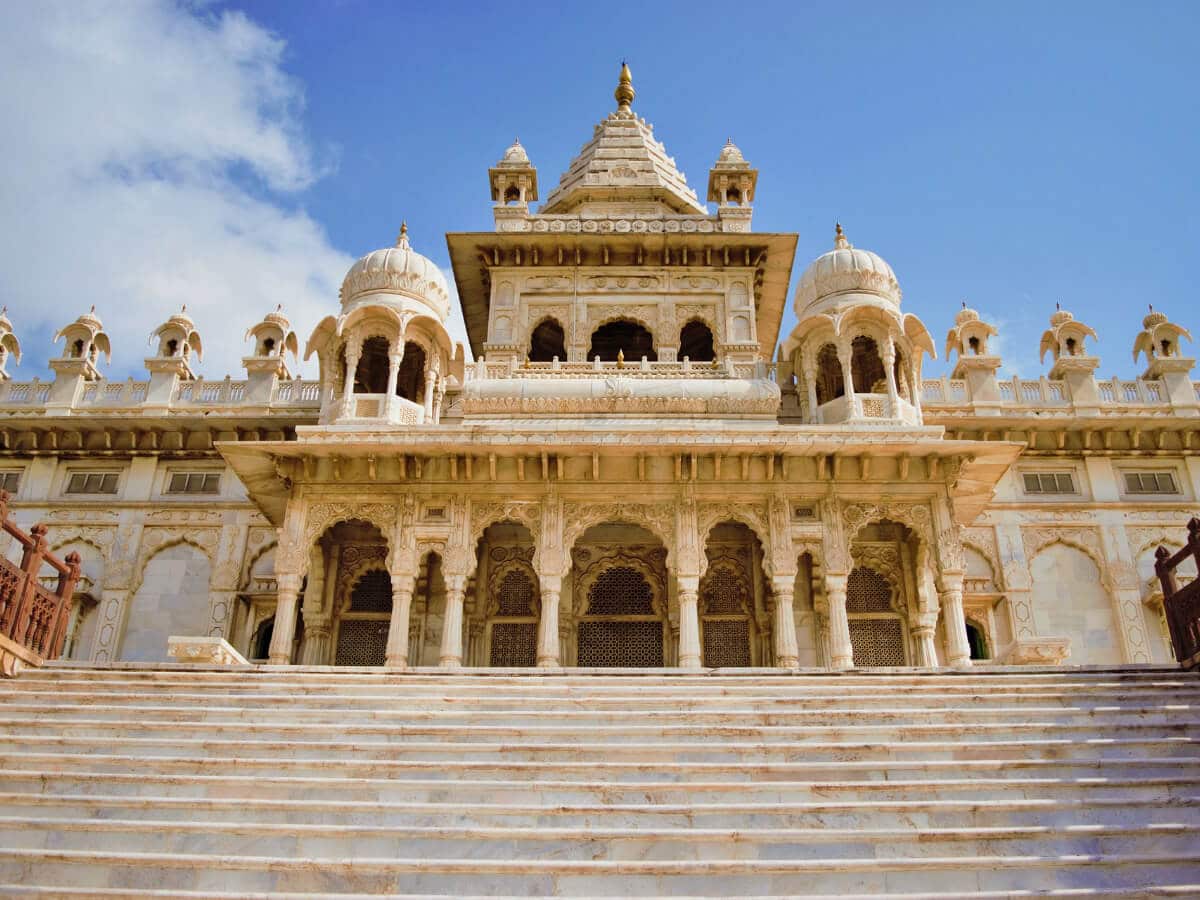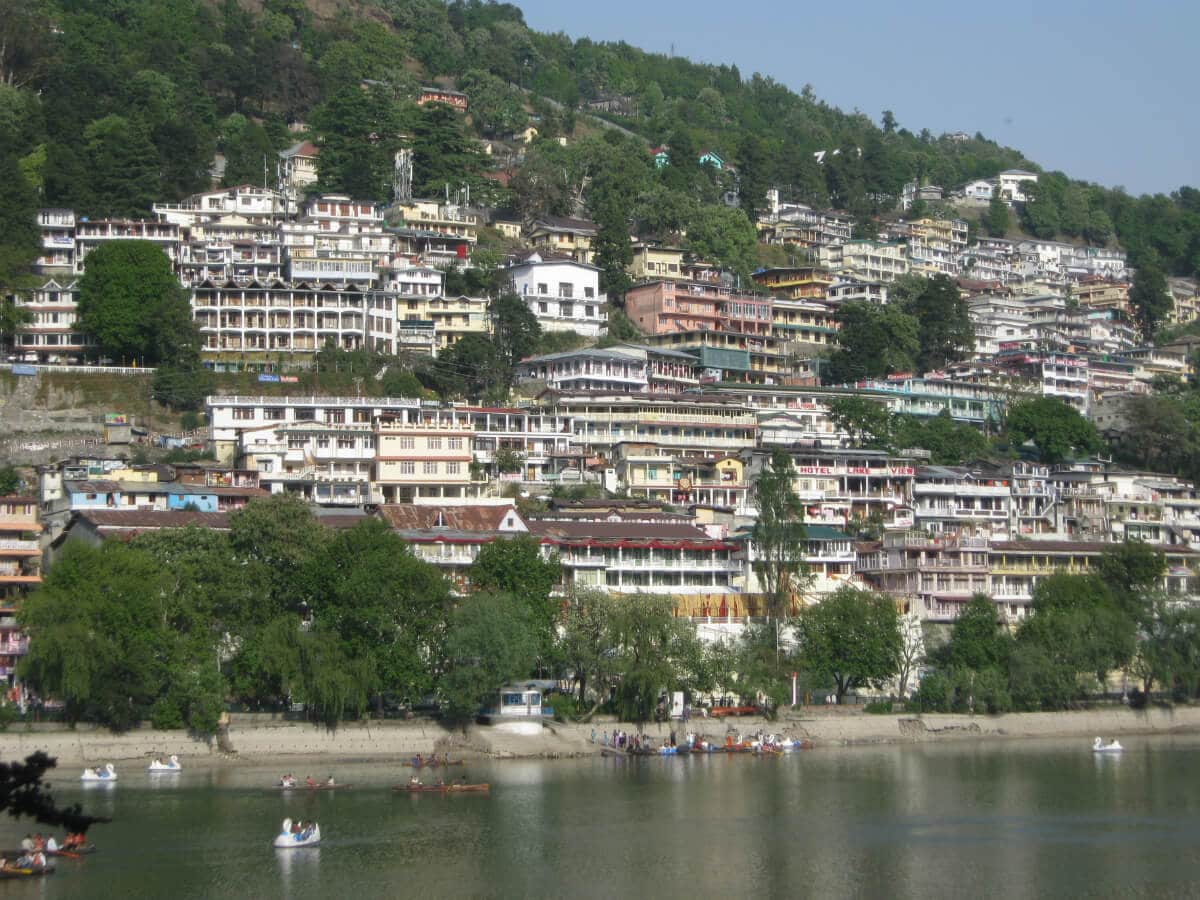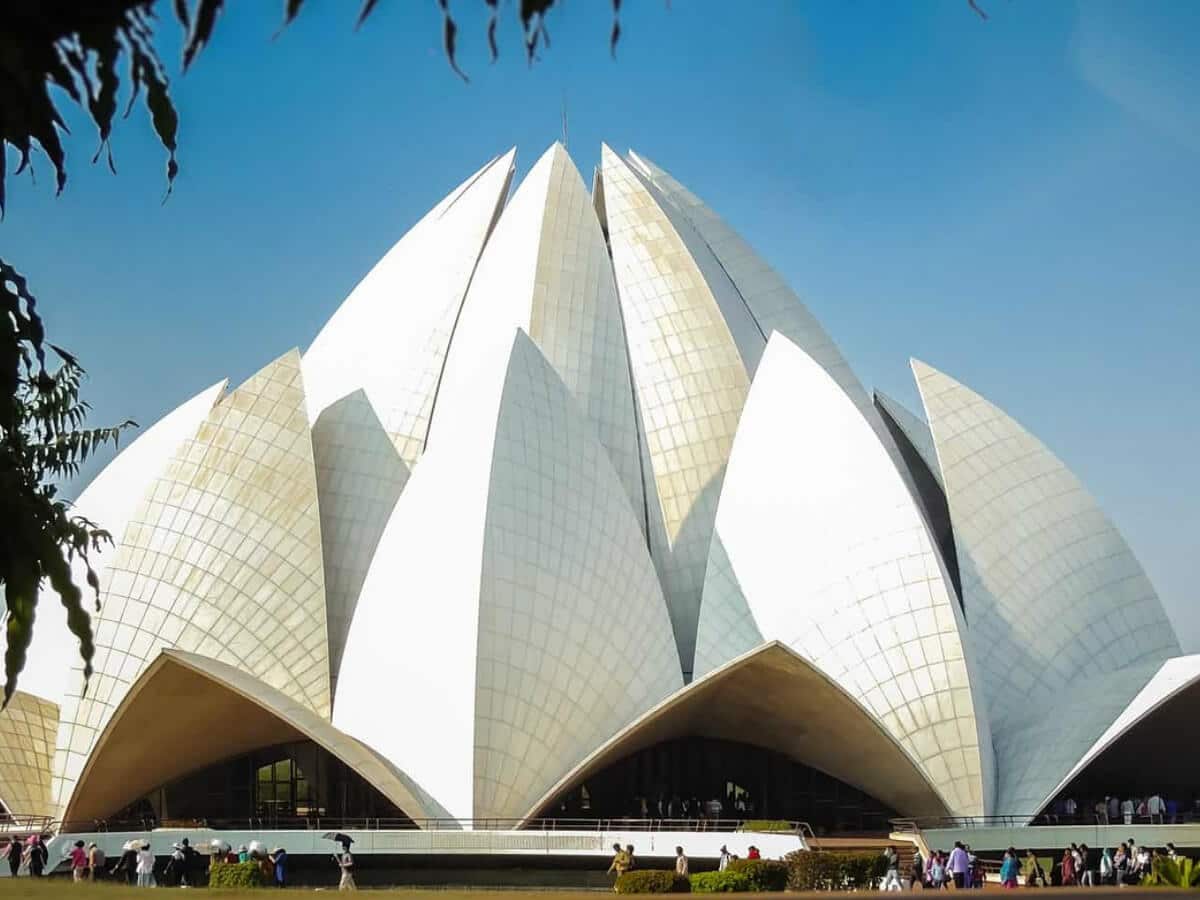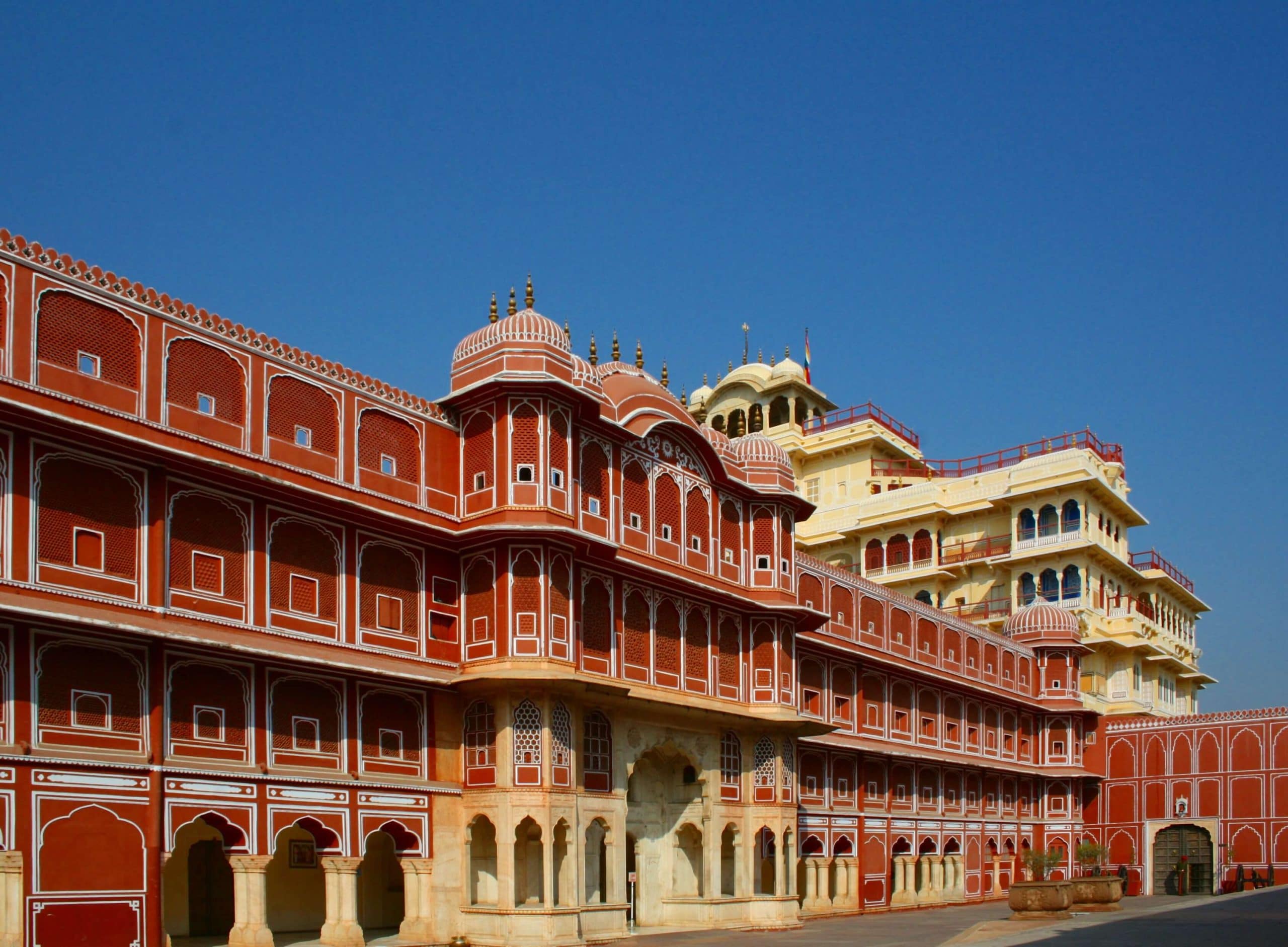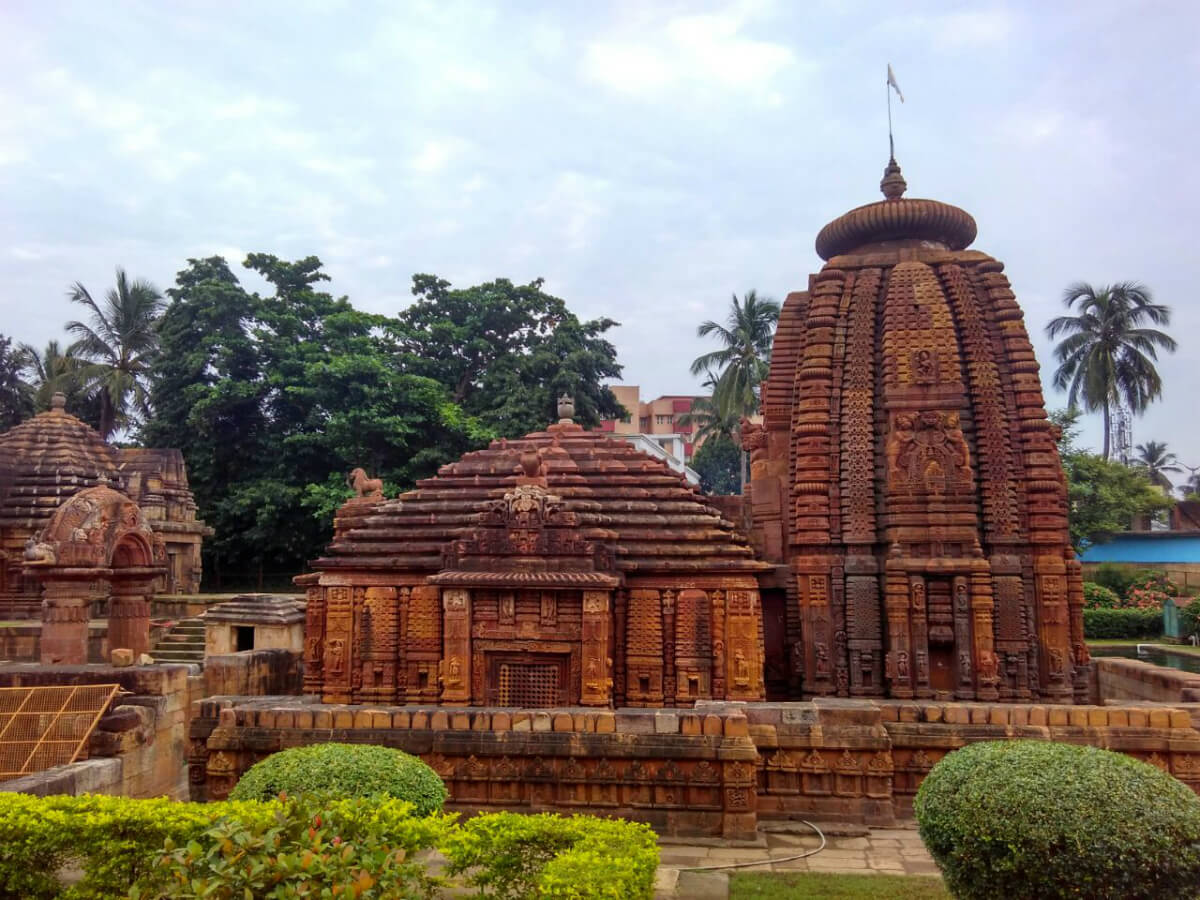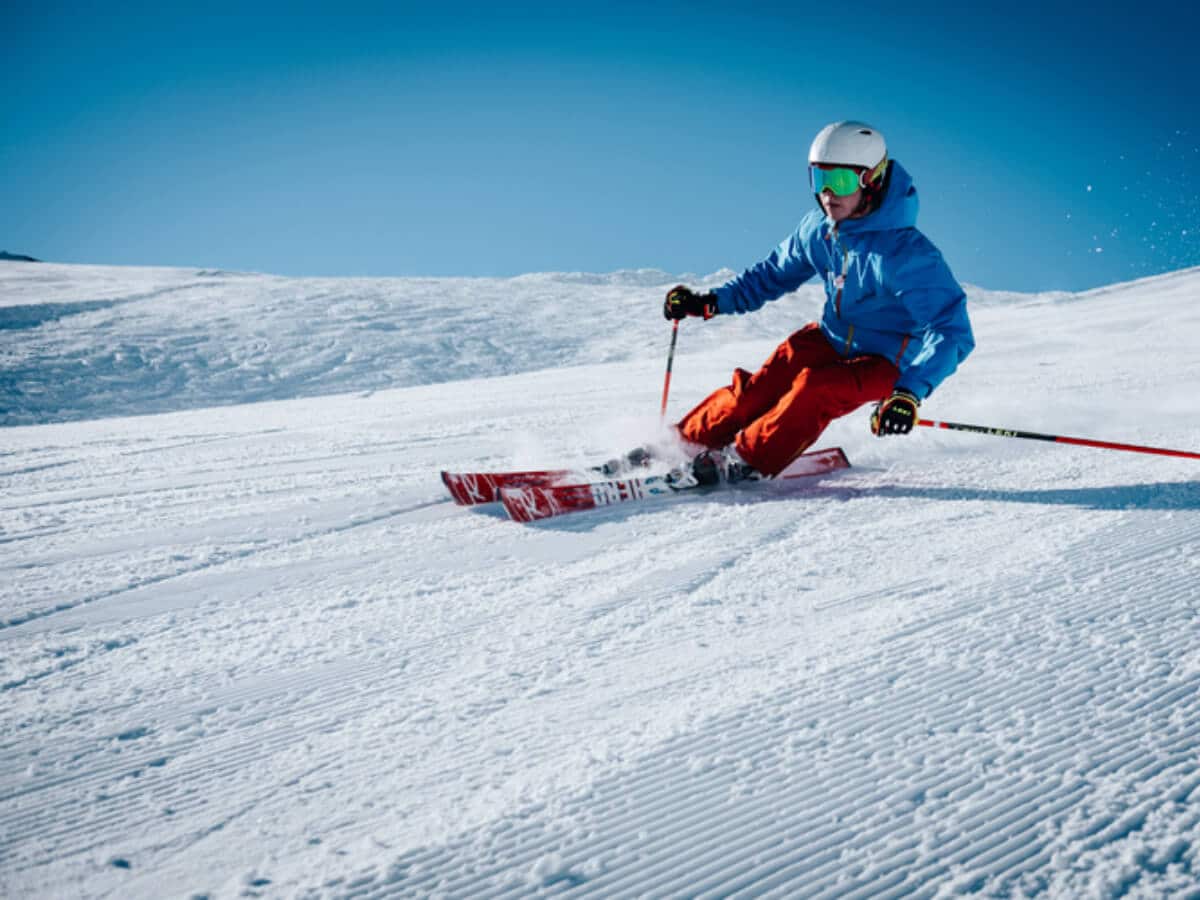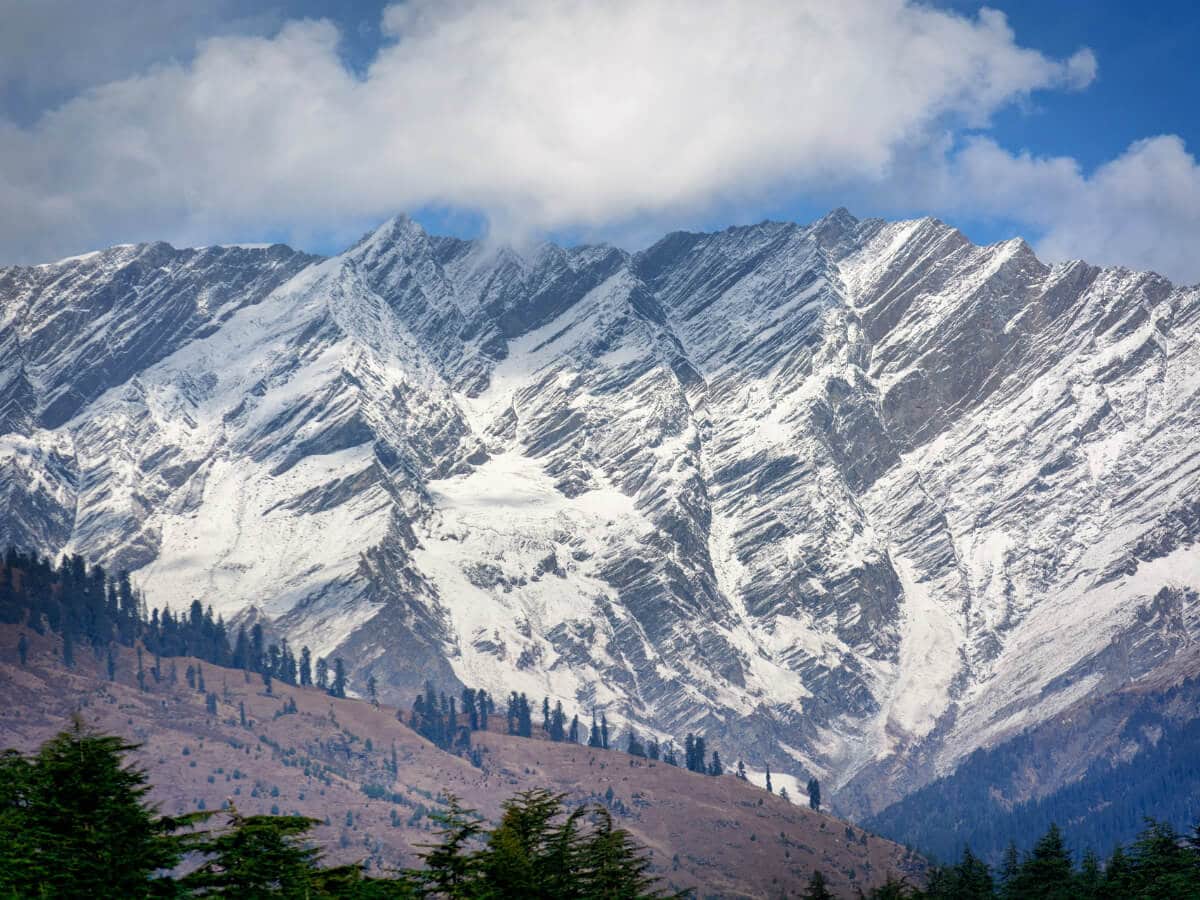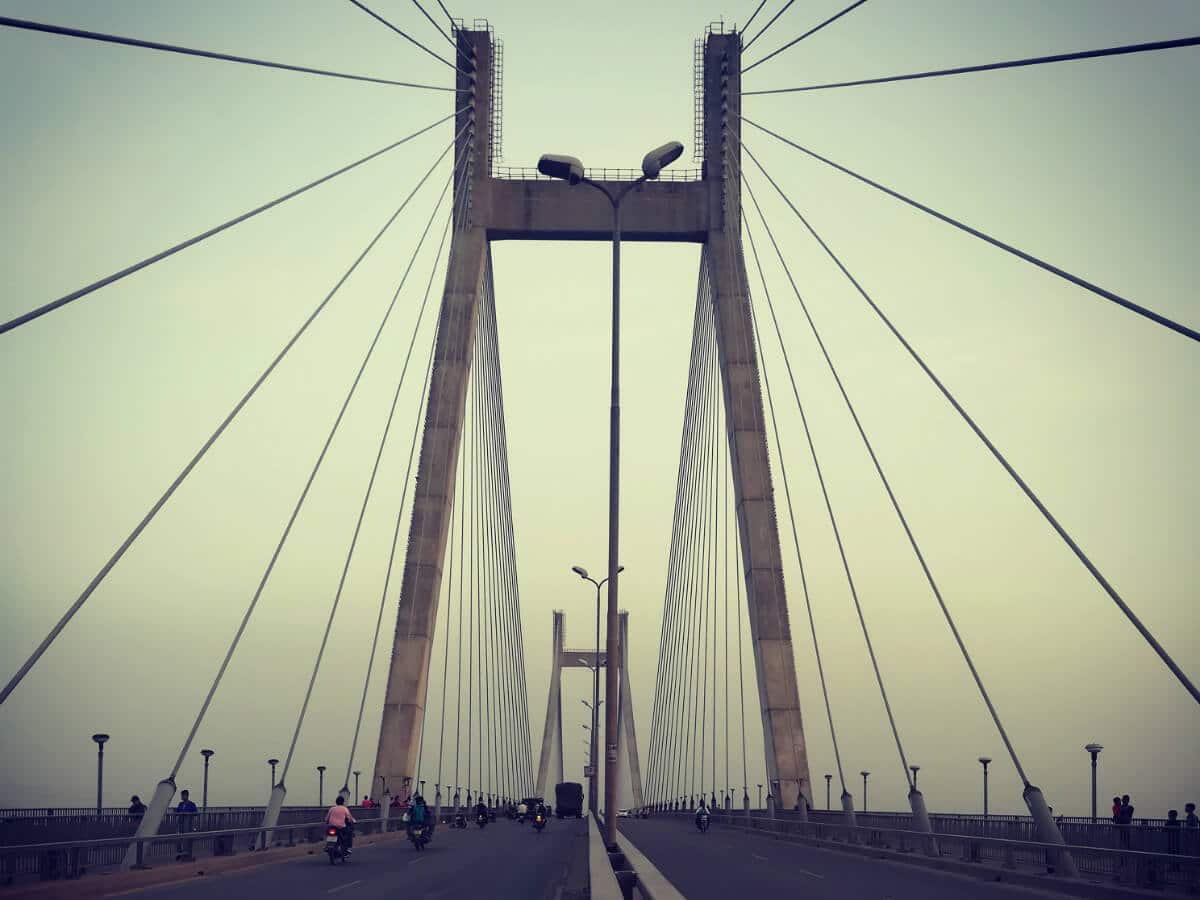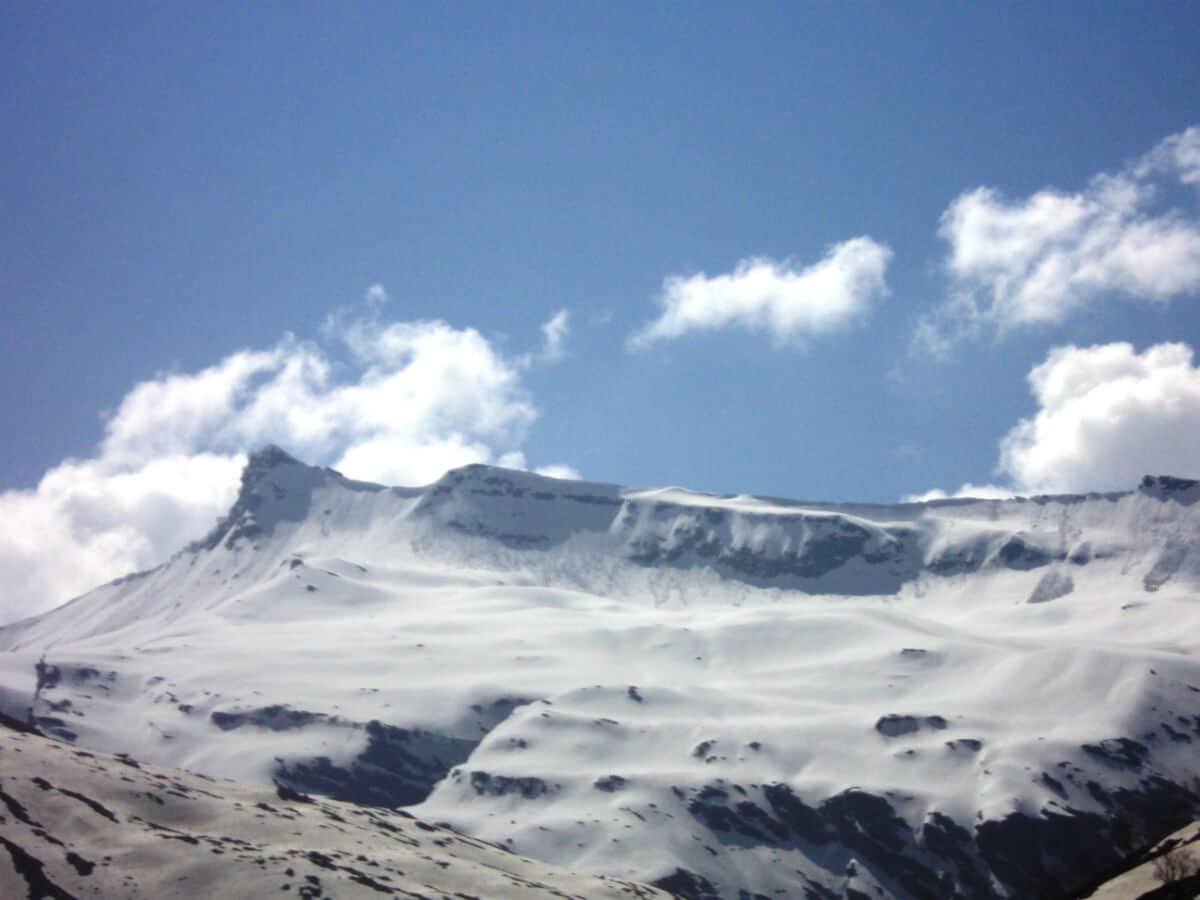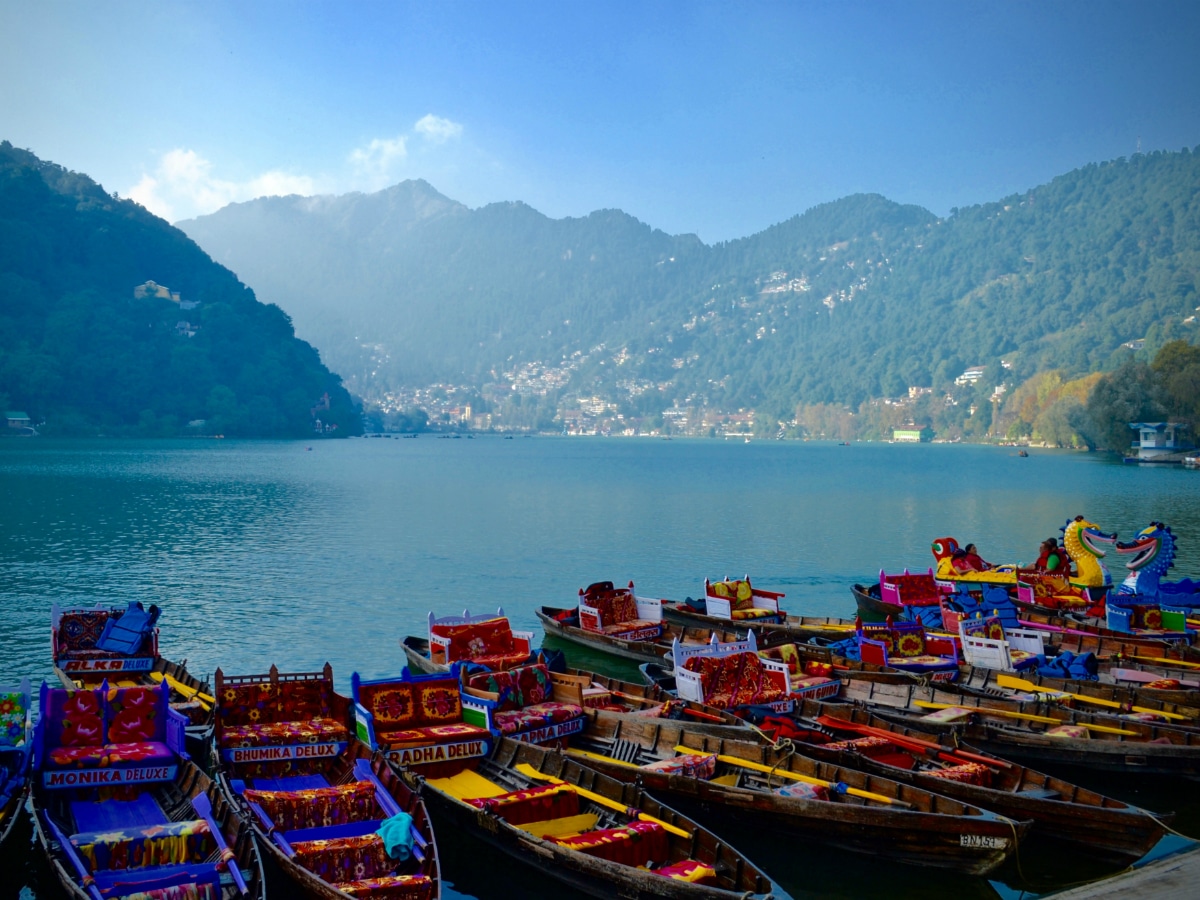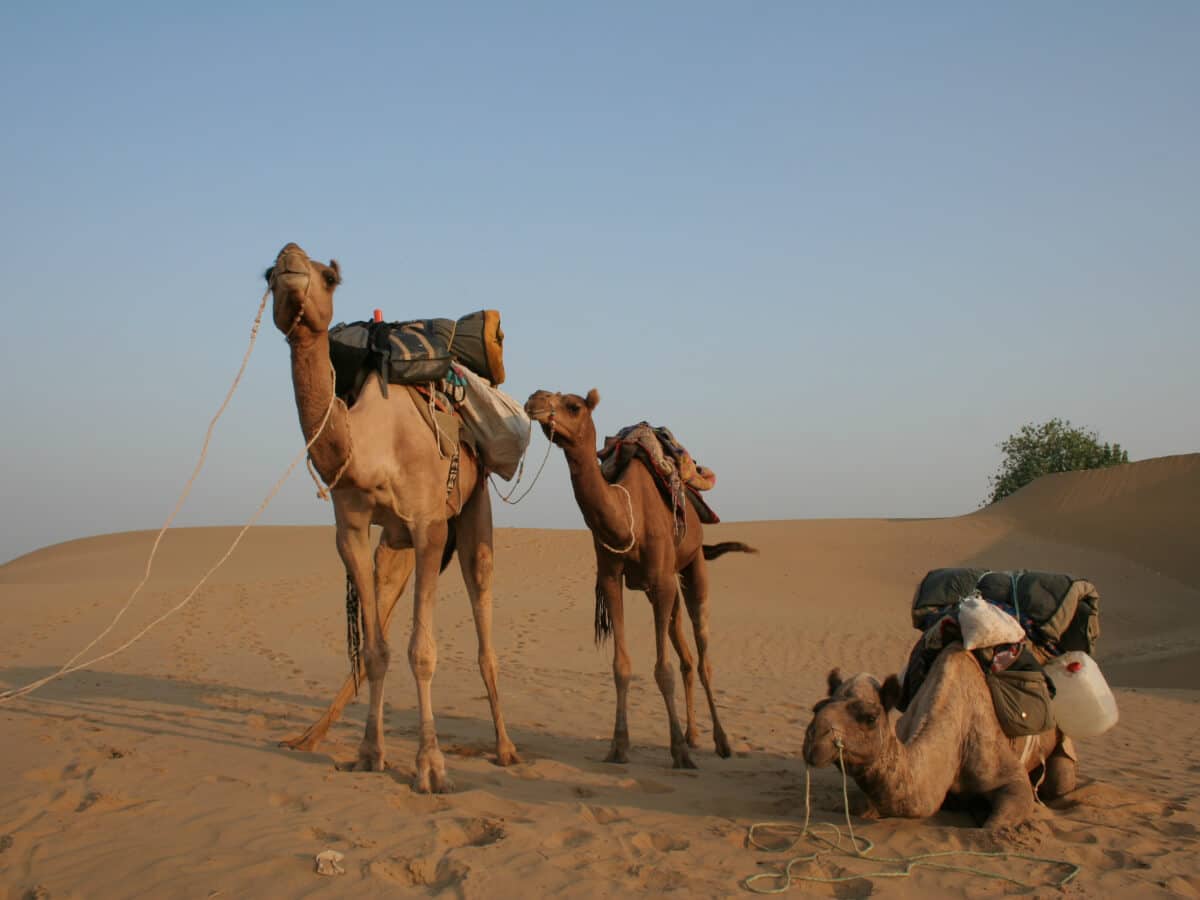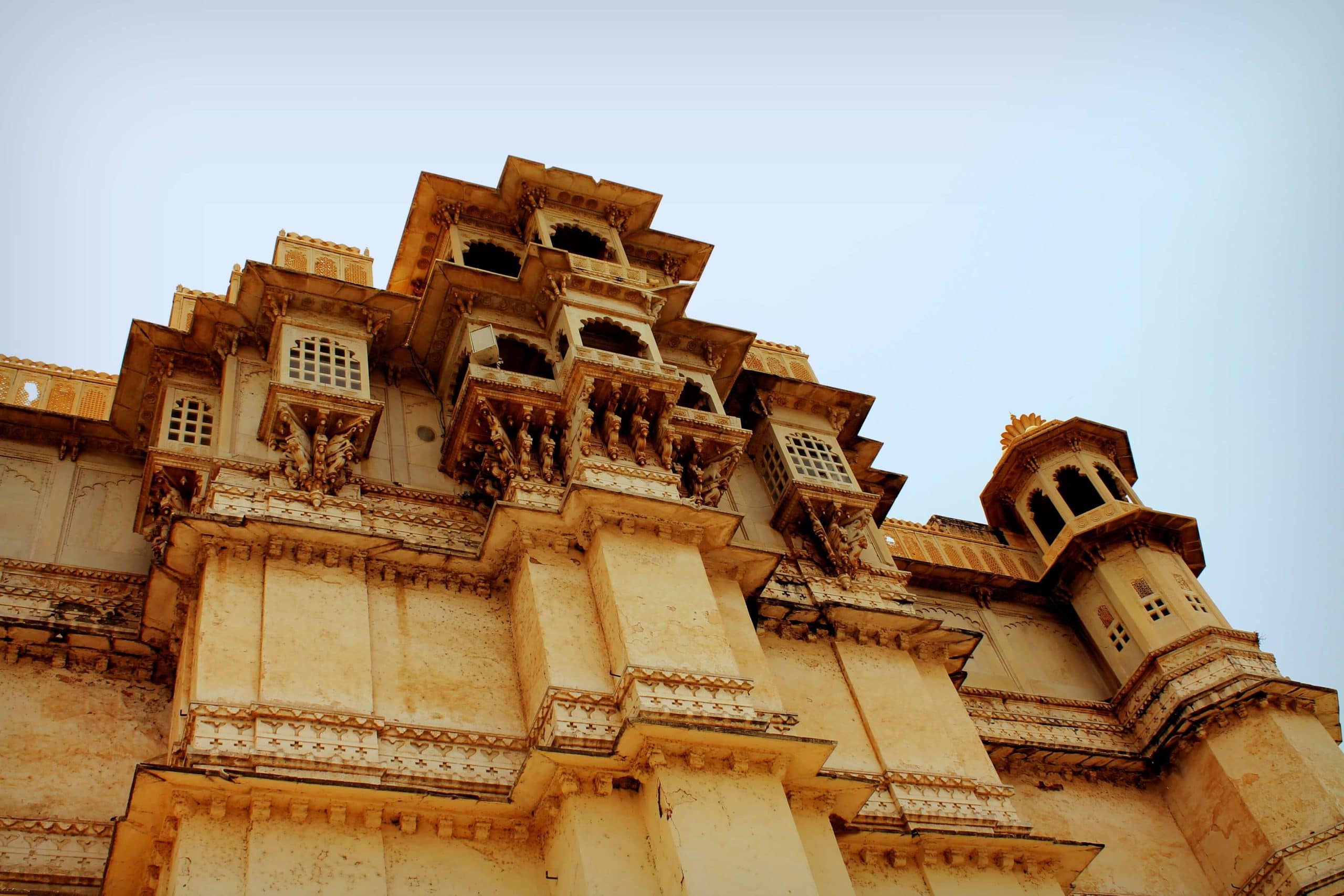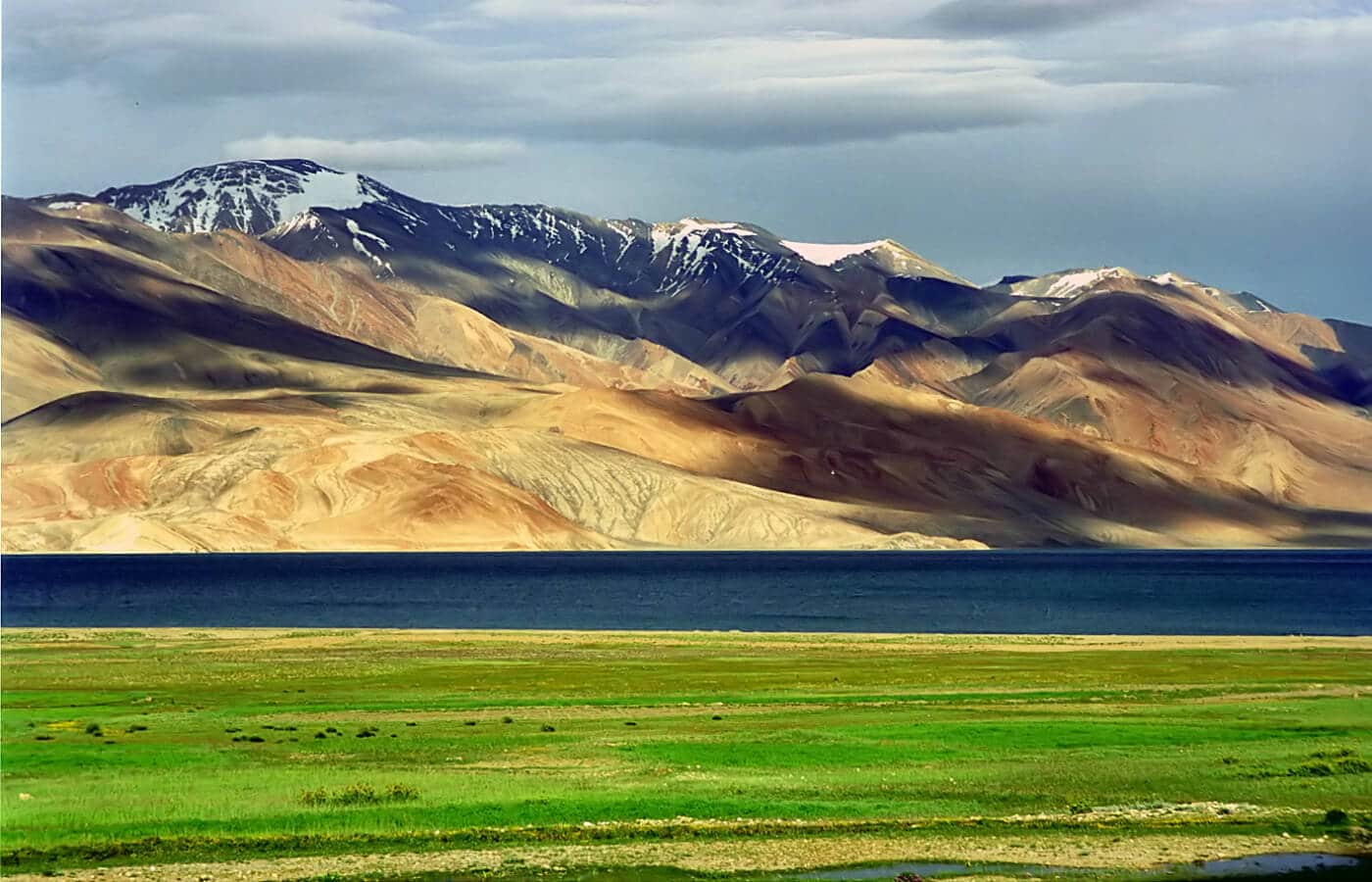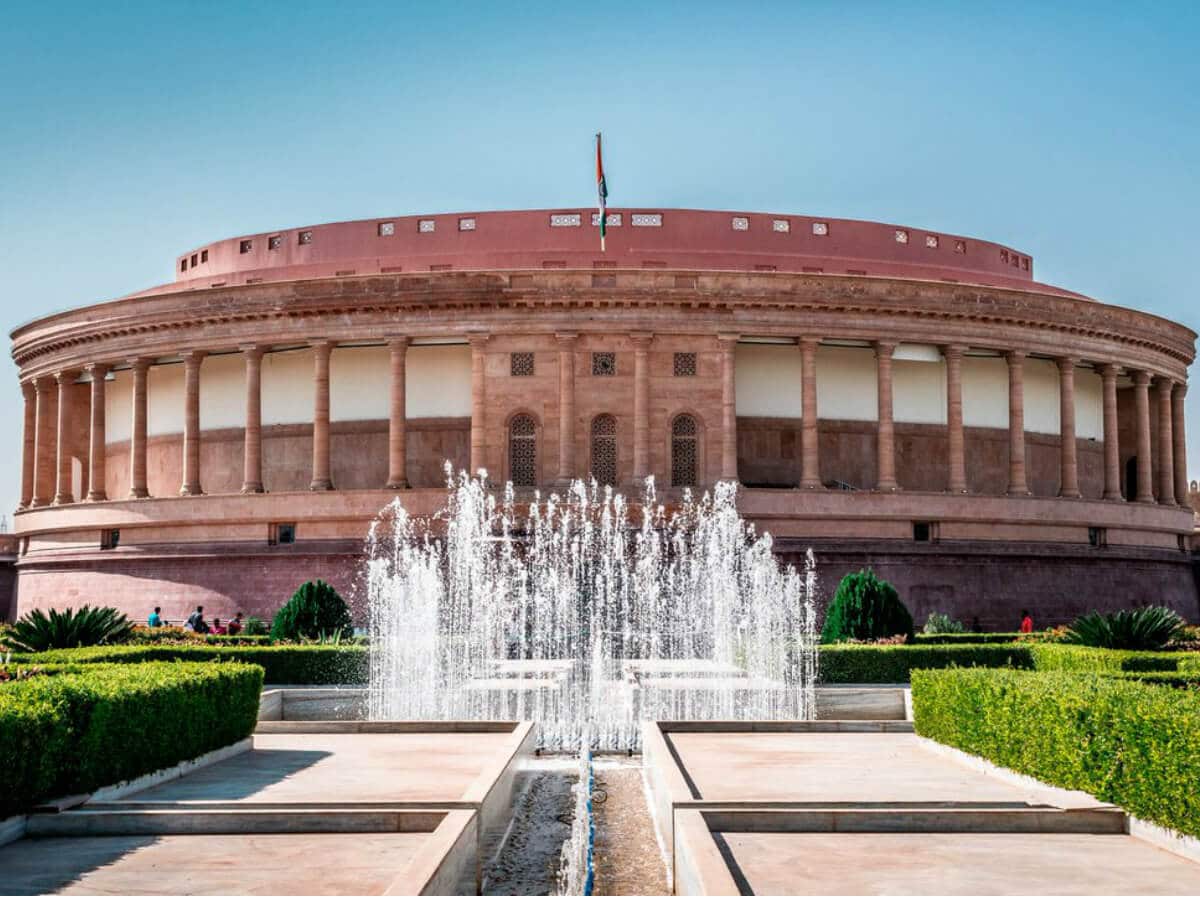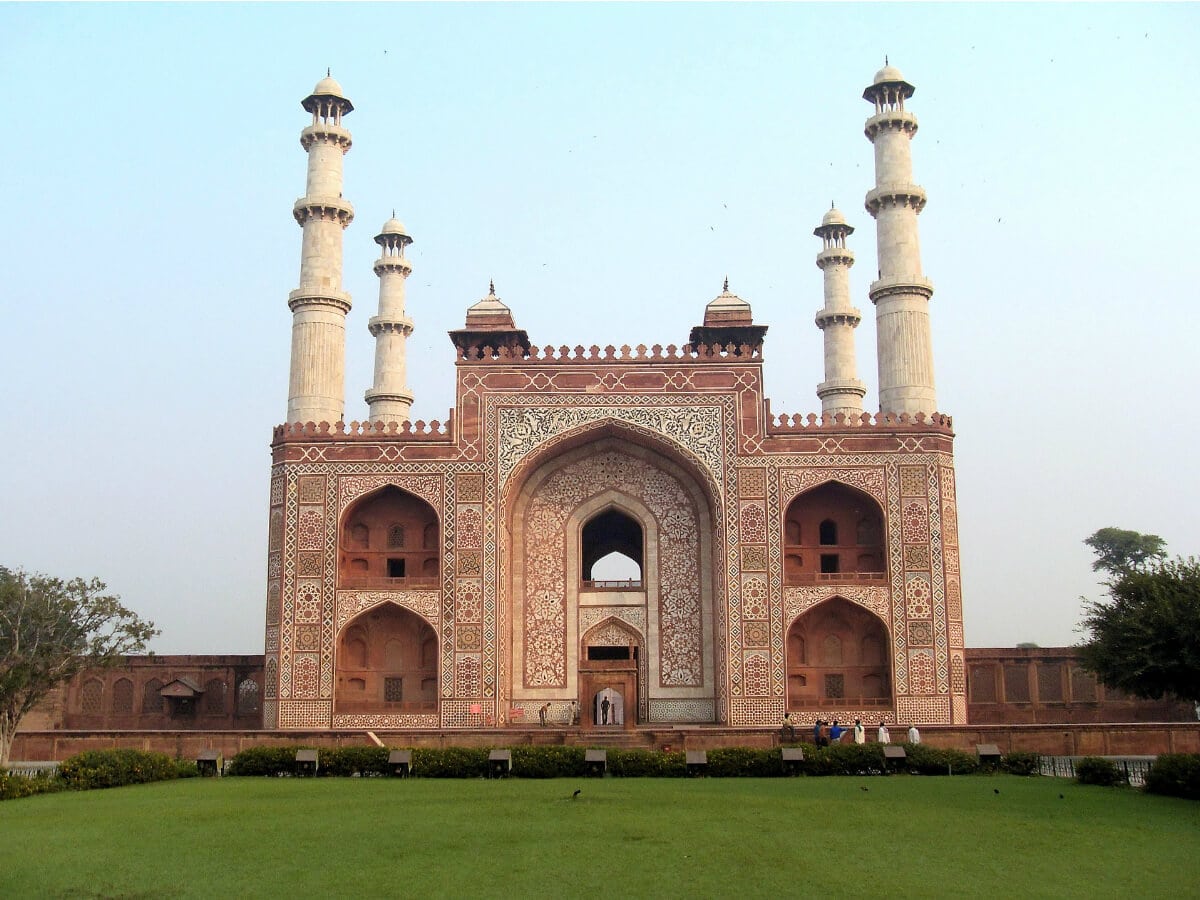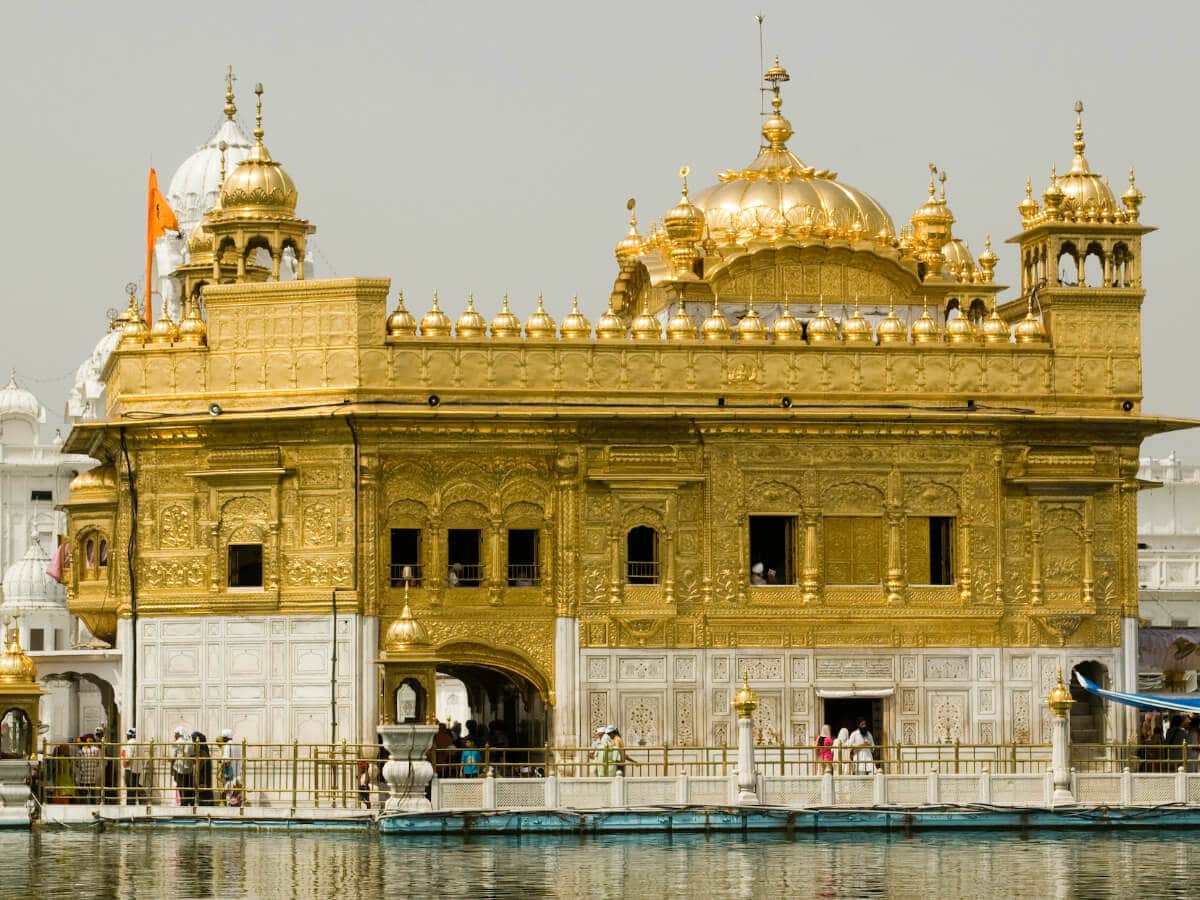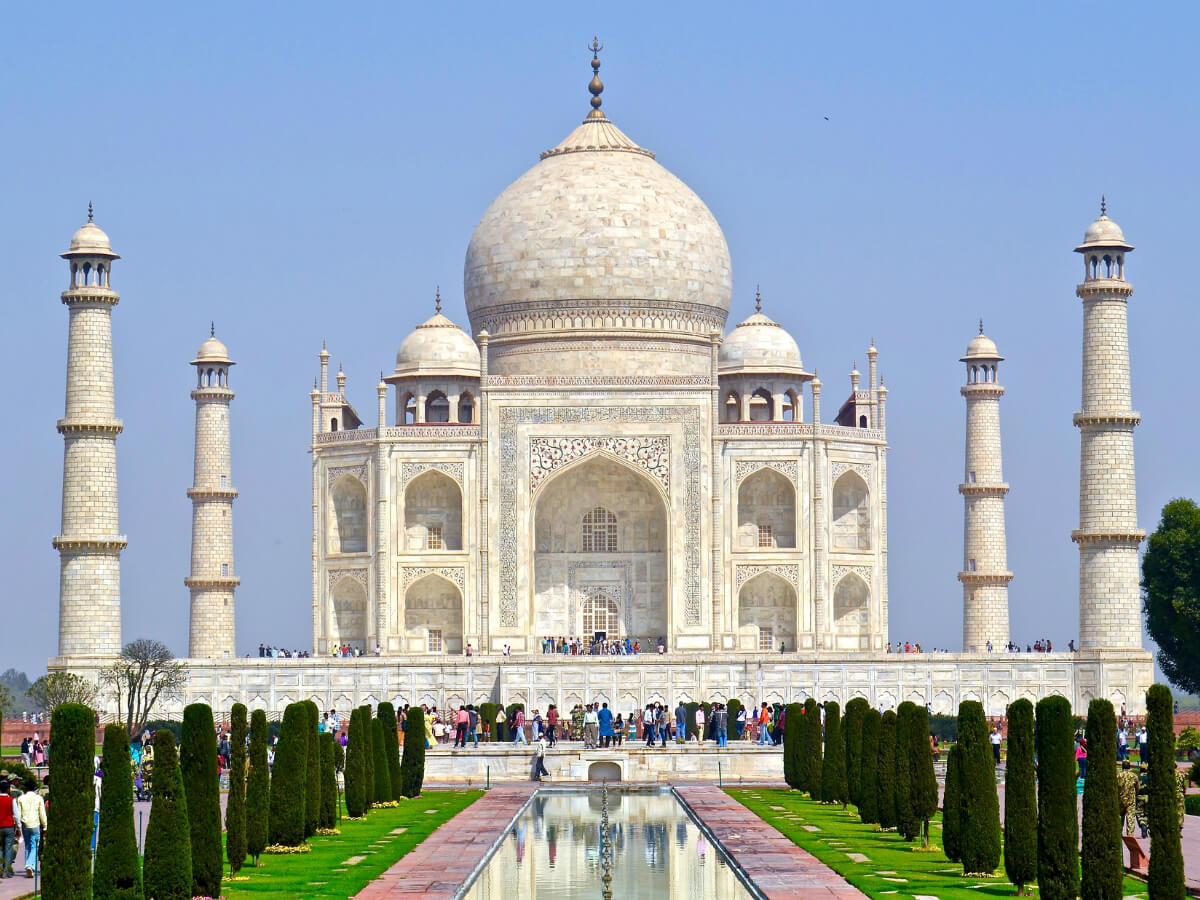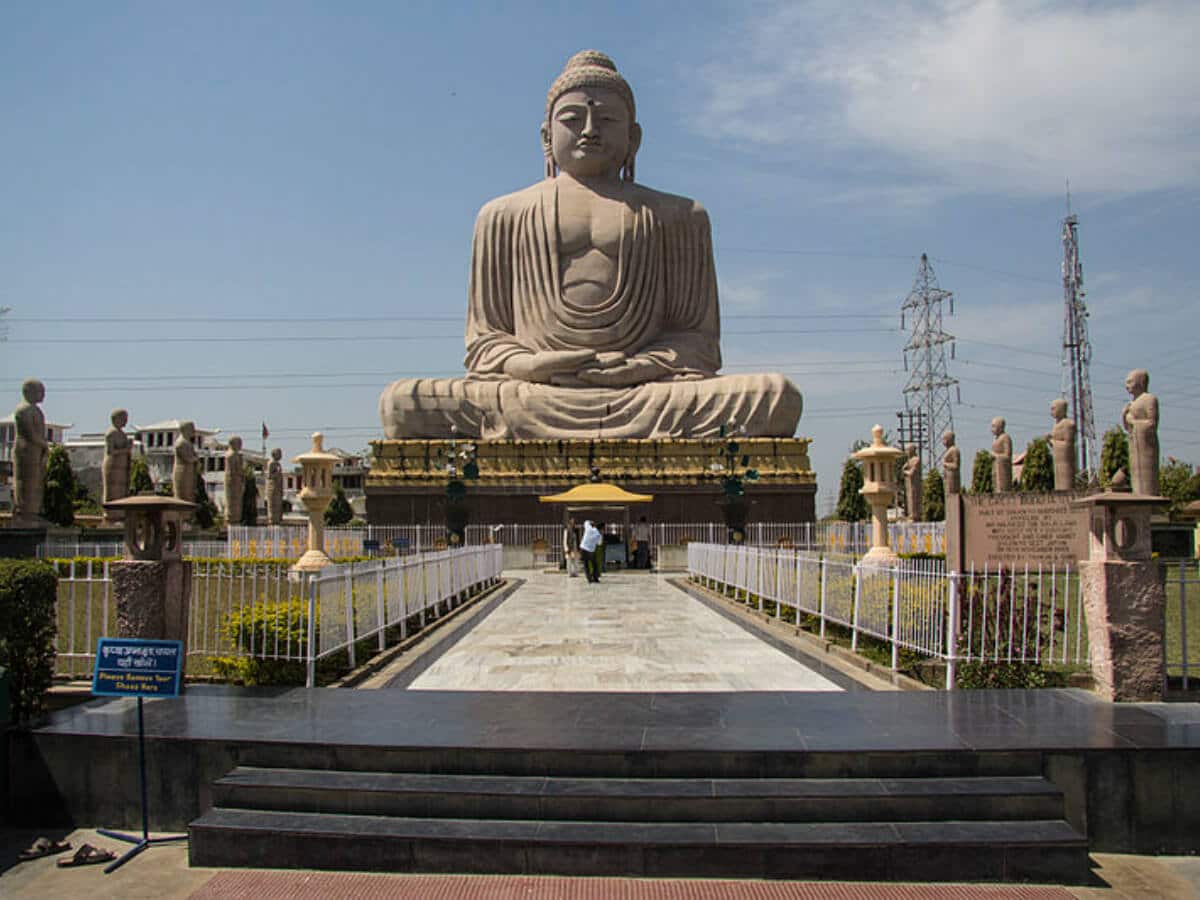Tour Packages
North India Tour Packages
SUPER DEAL PRICE
STARTS FROM
per person on twin sharing

The Ganges is India's largest river with tributaries.

Taj Mahal in Agra is a renowned majestic wonder.

Shimla becomes a winter wonderland during snowfall.

Kullu and Manali offer snow-capped mountains.

Golden Temple in Amritsar symbolizes peace and unity.

India Gate is a prime tourist destination in Delhi.
North India - Overview

By Purpose
Couples
For Newlywed Vacations
Family
For Family Vacations
Colourful Cities
Pink City: Jaipur
Blue City: Jodhpur
Red City: Bikaner
Golden City: Jaisalmer
White City: Udaipur
Popular Destinations
Agra
Delhi
Amritsar
Varanasi
Nainital
Shimla
Jaipur
Jodhpur
Kullu & Manali
Rishikesh & Haridwar
Everything You Need to Know About North India
North India is the country’s most populous region, pulsating with extraordinary culture and natural beauty. It is home to one of the world’s oldest urban cultures, the Indus Valley Civilisation and the birthplace of the Vedas. However, North India is geographically, culturally, and economically diverse. While we have snow-capped Himalayas on the one side, we have desert lands in Rajasthan on the other. The fertile Indo-Gangetic plains are home to the Indian subcontinent’s most affluent and populated areas, once ruled by dynasties like the Mauryas, Guptas, Palas, and the Nandas. Choose from our North India tour packages to explore this vast and diverse region. Call or message us on Instagram for a customised itinerary – we’ll be happy to help.
Table of Content:
- About North India
- Titbits
- Things To Know Before Visiting North India
- North India At A Glance
- Top Reasons To Choose North India Tour Packages
- The Seven States Of North India
- Jammu and Kashmir
- Punjab
- Haryana
- Rajasthan
- Ladakh
- Delhi
- Himachal Pradesh
- Uttarakhand
- Uttar Pradesh
- Dos and Don’ts Of Visiting North India
About North India
While Northern India may seem a homogenous region to an outsider, it is as varied as it comes, with each state fiercely preserving its regional language, customs, attire, and artistic expression. For instance, if Uttar Pradesh is proud of its rich historical past and spiritual heritage, Punjabis are no match when it comes to physical prowess. Rajasthanis are known for their warm hospitality and cultural traditions.
The landscape is equally diverse, with the Himalayas in the north, covering the states of Uttarakhand, Himachal, and Jammu & Kashmir, and the vast Indo-Gangetic plains of Punjab, Haryana, Uttar Pradesh, Delhi, and Bihar. The Thar Desert covers almost 62% of Rajasthan and is called the Great Indian Desert. Uttar Pradesh is home to the Vindhya Range, which is traditionally considered a border between north and south India. The states of Rajasthan, Haryana, and Gujarat are home to the Aravalli Range.
A major reason for the fertile lands of the North is the abundant rivers that dot the landscape. The Indus River is among the primary rivers in North India and a lifeline to over 270 million people in three countries: China, India, and Pakistan. Within India, it flows through Jammu and Kashmir, Himachal, Punjab, Rajasthan, Haryana, and Chandigarh. The river has five tributaries: Jhelum, Chenab, Ravi, Beas, and Sutlej. The Indus River was once home to the great Sapta-Sindhu Civilisation or the Indus Valley Civilisation, a culture that flourished in the region around the Indus and its tributaries.
The Ganges or Ganga, is India’s largest river along with its tributaries, viz., Yamuna, Ghaghara, Gandak, Kosi, Son, Gomti, Alaknanda, Bhagirathi, Ramganga, etc., flowing through 11 states, including Uttarakhand, Uttar Pradesh, Bihar, Haryana, Chhattisgarh, Himachal, Delhi, and Rajasthan in North India.
States That Form North India
North India comprises seven states: Jammu and Kashmir, Punjab, Haryana, Rajasthan, Uttarakhand, Himachal Pradesh, and Uttar Pradesh.
It also includes the union territories of Delhi, Chandigarh, and Ladakh.
Some definitions would also include Bihar, Chhattisgarh, Madhya Pradesh, and Jharkhand, although they would be classified as East and Central India.
History of North India
North India’s history begins around 55,000 years ago when Homo Sapiens who moved from Africa settled here. Several thousand years later, human settlements around Mehrgarh and Bhirrana developed into the Indus Valley Civilisation, flourishing between 3300 BCE and 1300 BCE.
Northern India was also home to the Vedic Civilisation, which flourished between 1500 BCE and 500 BCE. It saw the composition of the four Vedas, several Upanishads, and other sacred texts of the Hindu religion. The Rigvedic period, also known as the Early Vedic Period, corresponds to the time when Rigvedic hymns were composed. The later Vedas, Samaveda, Yajurveda, and Atharvaveda, were composed much later, between 1200 BCE and 800 BCE.
The later Vedic Period saw the rise of influential kingdoms like the Kuru and Panchala clans. This was followed by different monarchical systems like rajya, sangha, and tribal principalities. This was followed by the Mahajanapadas, i.e., the rise of large kingdoms and the emergence of philosophies like Jainism and Buddhism. The four major Mahajanapadas were Magadha, Kosala, Avanti, and Vatsa, with Magadha being the dominant political and military strength.
Some important dynasties in Magadha (present-day Bihar) include Haryanka, Shishunaga, and Nanda. The latter were overthrown by the Mauryas, led by Chandragupta Maurya. Other dynasties that ruled the region include the Shungas, Kanvas, Guptas, and the Satvahanas.
North India was also marred by several Islamic conquests, with Muhammad bin Qasim being the first Muslim to conquer Sindh in the 7th century. The region was later invaded by several Muslim dynasties, including the Lodhis, Mamluks, Tughlaks, Sayyids, Khajlis, and Mughals. The latter ruled a major part of North India until the British took over.
You can request customised North India tour packages that cover historical and archaeological sites pertaining to the Indus Valley Civilisation.
Economy of North India
Agriculture is the main economic driver of North India, with major crops like wheat, rice, soya, sugarcane, and cotton being produced across the region. Uttar Pradesh is India’s largest producer of wheat, pulses, lentils, potatoes, and sugarcane. Rajasthan is the largest producer of mustard, oilseed, bajra, and pearl millet. Uttar Pradesh and Rajasthan are among the country’s largest dairy producers. The states of Punjab, Haryana, and Uttar Pradesh are together called the breadbasket of India.
Tourism is a key driver in states like Uttarakhand and Himachal Pradesh. Other sectors growing across the northern region include agro-processing, automotive components, IT service, hosiery and textiles, and sports goods.
Titbits
- Chess was invented in the 6th century during the reign of the Gupta Dynasty and was called chaturanga.
- North India makes up about 38.9% of the country’s population but contributes 26% of its GDP.
- North India is home to 14 of the 38 Indian UNESCO World Heritage Sites
- The region is home to the world’s highest motorable road – the Umling La Pass in Ladakh at 19,024 feet.
- The oldest known Indus Valley Civilisation site is in Bhirrana, Haryana, and is believed to be from around 7300 BCE.
- North India is also home to the Vedic Civilisation that lasted from 1500 BCE to 500 BCE in the Northwestern regions of Punjab, Haryana, and parts of Jammu & Kashmir.
- Punjab & Uttar Pradesh together produce over 50% of India’s wheat
Things To Know Before Visiting North India
- Travel with a tour manager if you’re Hindi isn’t your strong suit, as it is the primary language of communication in the North.
- We suggest checking the weather before booking North India tour packages, as this region experiences extreme climate changes.
- Don’t skimp on winter apparel when visiting North India during the winter months.
- To start, North India is vast and cannot be explored in a single visit – look for popular packages like the Golden Triangle, Spiritual Tour Packages, Hill Station Packages, etc..
- Keep enough cash, as ATMs often run out of money in many small towns, and UPI isn’t prevalent.
- Bring sufficient cloth bags, as many North Indian cities have banned non-biodegradable bags.
- Don’t respond to touts, as they tend to swindle money from unwitting travellers. Stick to your group and ask your tour manager for help.
North India At A Glance
| State | Food | Shopping | Popular Places | Best Time to Visit |
| Jammu & Kashmir | Wazwan, Rogan Josh, Goshtaba, Aloo Dum, Nandroo (lotus stem), Dogra Taam, Chaaman, Rajma Chawal, Khatta meat, Kahwa, Lyader Tschaman, Khambir, Sheermal, Aab Ghost, Noon Chai. | Local Basmati Rice, Saffron, Apricots, Samovar, Dress Material, Wood Carvings, Pashmina Shawl, Copper Vessels, Dry Fruits, Kahwa Tea Mix, Kashmiri Spices Like Ratan Jot, Forest Honey | Katra, Srinagar, Pahalgam, Gulmarg, Sonmarg, Patnitop | April to June to experience spring/summer. December to February for snow. |
| Punjab | Kulcha Chole, Tandoori Chicken, Makke ki roti & Sarson da Saag, Lassi, Dal Makhni, Paratha, Kadhi Pakore, Maa ki Daal, Panner dishes, Palak Paneer | Handmade Shoes, Embroidered Dupattas, Phulkari Work, Parranda, Woolen Clothes, Sports Items, Jaggery, Salwar Suits, Spices, Masalas, Jewellery, Pappad, Wadiyan, Leather Work | Amritsar, Ludhiana, Chandigarh, Patiala, Bhatinda, Pathankot, Jalandhar | October to March |
| Haryana | Kadhi Pakora, Bathua Raita, Raabri, Kachri ki Sabzi, Rajma Chawal | Phulkari, Dress Material, Brassware, Sarkanda Craft, handcrafted jutties, durries | Chandigarh, Kurukshetra, Gurugram, Ambala, Panipat, Faridabad | November to March – Winter Season |
| Ladakh | Momos, Thupka, Butter Tea, Khambir, Apricot Jam, Chhurpe, Skyu | Carpets, Rugs, Pashmina Shawls, Apricot Jam, Apricot oil, Woollen Garments, Tibetan Jewellery, Thangka Painting | Leh, Nubra Valley, Khardung La, Hemis, Zanskar, Alchi, Lamayuru, Thiksey | April to June – Summer Season |
| Rajasthan | Laal Maas, Safed Maas, Dal Baati Churma, Gatte ki Sabzi, Ker Sangri, Raab, Kachori, Bajra Roti, Khoba Roti | Jaipur Cotton, Handcrafted Mojari, Wooden Decorative Material, Blue Pottery, Meenakari, Marble Items, Jaali Work, Bandhani Work, Kundan Jewellery, Carpets, Bagru Print | Jaipur, Jodhpur, Jaisalmer, Udaipur, Amber, Bikaner, Pushkar, Mount Abu, Kumbhalgarh, Chittor | November to February – Winter Season |
| Delhi | Butter Chicken, Parathe, Chaat Items, Chole Bature, Daulat ki Chaat, Aloo Tikki, Gol Gappa, Naan, Tandoori Dishes, Paneer Dishes, Nihari, Mughlai Food, Momos, Kebabs, Jalebi | Clothes, Jewellery, Embroidered Items, Lehengas, Meenakari, Spices, Masalas, Leather Goods, Zardosi work, Attar | Lodhi Gardens, India Gate, Red Fort, Lotus Temple, Jama Masjid, Rashtrapati Bhavan, Qutub Minar, Akshardham | October to March – Winter Season |
| Uttarakhand | Chainsoo, Bhang ki Chutney, Aloo ke Gutke, Jhangora ke Kheer, Phaanu, Baadi, Mandua ki Roti, Dubuk | Angora and Pashmina Shawls, Copperware, Wooden Crafts, Jams, Forest Honey, Waxwork, Canework, Peesi Noon | Mussoorie, Nainital, Jim Corbett, Gangotri, Yamunotri, Rishikesh, Badrinath, Haridwar, Kedarnath, Dehradun, Kausani, Uttarkashi, Auli, Ranikhet, Joshimath | March to June for Summer Activities, December to February for Winter. Activities |
| Himachal Pradesh | Madra, Dham, Siddu, Tudkiya Bhaat, Trout Fish, Chha Ghost, Momos | Woollen clothes, Tibetan craft, wooden artefacts, jams, exotic pickles, Pahadi Salt, Kangra Miniature Painting | Shimla, Manali, Dharamshala, Dalhousie, Kasauli, Kullu, Solan, Bir Billing, Kangra | March to June for Summer Activities, November to February for Winter Activities |
| Uttar Pradesh | Biryani, Kebabs, Koftas, Litti Choka, Nihari, Tehri, Pedhas, Mughlai Dishes, Sheermal, Chaat Items | Agra Petha, Mathura Peda, Banarsi Saree, Chikankari, Zariwork, Parchinkari, Glassware, Carpets, Meenakari, Attar, Metalcraft from Moradabad, Khurja Pottery, Phool Pati Embroidered Dresses, Farrukkabad Prints | Varanasi, Lucknow, Agra, Fatehpuri Sikri, Prayagraj, Mathura, Vrindavan | October to March – Winter Season |
Top Reasons To Choose North India Tour Packages
North India is a captivating land filled with enchanting stories, awe-inspiring landscapes, lush valleys, and colourful festivals. Every nook and cranny of this region tells tales of magnificent kingdoms, ancient civilisations, and vast empires. Here are some reasons you must check our North India tour packages. Call us or send a message on Instagram if you’d like us to craft a personalised itinerary tailored to your unique interests and the adventures you want to embark on.
The Mesmerising Himalayas
The Himalayas have profoundly shaped India’s culture and history. These mighty mountains have also acted as a natural barrier from the cold winds of Central Asia and trap rain-laden clouds. The mountain range is sacred to Hindus and Buddhists, who consider it the abode of gods, with several pilgrimage sites located in the Himalayas.
The Himalayas stretch across five countries: India, Nepal, Bhutan, Pakistan, and China. Within India, the mighty mountains extend across 11 states and 1 Union Territory: Jammu and Kashmir, Himachal, Uttarakhand, Ladakh, West Bengal, Assam, Sikkim, Nagaland, Mizoram, Meghalaya, Tripura, and Arunachal Pradesh.
The Indian Himalayan Region extends over 2,500 km and covers over 18% of India’s land area. It is divided into three geographical regions: the Himadri Range, the lesser Himalayas, and the Shivalik Range.
The mountains are home to fantastic flora and fauna, including several endangered species like the majestic snow leopard, brown bear, and the Himalayan musk deer.
If you’re craving a quieter place away from the hustle and bustle of life, head to the many spiritual places along the Himalayas. There are so many reasons to choose a customised Himalayan North India tour package. You can
- Head out for exhilarating treks among the world’s highest mountain range
- Discover ancient and charming cities like Dharamsala
- Explore Ladakh’s glaciers, deserts, and snow-capped mountains
- Travel across the Nubra Valley
- Enjoy the toy train ride on the Kalka-Shimla Railway
- Discover high-altitude Hindu and Buddhist temples
- Find your inner peace with yoga and meditation
Romantic Hill Stations
In their bid to escape the scorching Indian summer, the British established several hill stations across the Himalayas, with Shimla being the summer capital of the erstwhile British India. These towns combined colonial-style buildings with beautiful landscapes and a colonial lifestyle that involved garden parties, picnics, cricket tournaments, and polo games. Today, these hill stations are popular tourist destinations for honeymooners and families. Some of the popular hill stations covered in our North India tour packages include:
Shimla
Fondly called the Queen of Hills, Shimla was the summer capital of British India. Before the British built it, it was a tiny village, surrounded by dense forests and sparsely populated with a few houses. The city is popular among honeymooners looking to enjoy the panoramic views of the mountains.
Some experiences you can enjoy in Shimla include a toy train ride on the Kalka-Shimla Railway, shopping on Mall Road, visiting Christ Church, visiting Viceregal Lodge and Jakhu Hill, and exploring the Himachal State Museum.
Kulu-Manali
Kullu and Manali are two towns in the Kullu district of Himachal Pradesh. The two towns are often referred to together thanks to their geographical proximity and similar scenic beauty. These hill stations are famous for their snow-capped mountains and adventure activities like paragliding, river rafting, and trekking. Some winter activities you can enjoy in Manali include snow scootering, cable car riding, skiing, etc.
Popular attractions in Kullu-Manali include Rohtang Pass, Solang Valley, Hidimba Devi Temple, Manu Temple, Old Manali, Jogini Falls, Bhigru Lake, Vashist Village, and Hamta Pass.
Mussoorie
Two British officers, Captain Frederick Young and F J Shore, are credited with establishing Mussoorie as a resort. However, the town has been inhabited for ages by tribal and ethnic communities like the Gurkhas. In Mussoorie, the British built the first church in the Himalayas in 1836.
Popular tourist attractions include Kempty Falls, Gun Hill, Mall Road, Lal Tibba, Benong Wildlife Sanctuary, Jharipani Falls, Bhatta Falls, Camel’s Back Road, Landour, and Cloud End.
Nainital
Nainital gets its name from the Naini Lake and is derived by combining two words: Naini, or eyes, and Tal, meaning lake. It is believed that Goddess Sati’s eyes fell here. And since it is surrounded by seven hills, the town is called Sapta Shring. The city is famous for its colonial buildings, apple orchards, lakes, and temples.
Some popular tourist attractions include Naina Devi Temple, Tiffin Top, Snow View, Nainital Lake, Naina Peak, and Neem Karoli Baba Ashram.
Spiti Valley
Also called Little Tibet, Spiti Valley in Himachal Pradesh is 12,500 ft above sea level. Since the region is quite close to Tibet, you can experience Tibetan culture at its best through the Buddhist monasteries, local handicrafts, and even the language called Stod Bhoti, a subgroup of the Tibetan language. This cold and barren desert is famous for surreal landscapes and beautiful mountains.
Some popular attractions in Spiti Valley include Chandratal Lake, Chicham Lake, the UNESCO World Heritage-listed Tabo Monastery, and the Lhalung Monastery.
Dharamshala
The picturesque town of Dharamshala was originally a British cantonment for their troops stationed in Kangra. It was a sleepy little town until the influx of Tibetan refugees who came here in 1959 with the Dalai Lama. The region is divided into Lower Dharamshala and Upper Dharamshala, with the latter famous for Mcleod Ganj and Forsyth Ganj. McLeod Ganj is famous for its strong Tibetan influence, especially the Tsuglagkhang Complex, which contains the residence of the Dalai Lama.
Some of the popular tourist attractions in Dharamshala include the Tsuglagkhang Temple, Church of St John in the Wilderness, Naddi View Point, Dharamshala Skyway, Namgyal Monastery, Kalachakra Temple, Kangra Fort, and the Nechung Monastery.
Kasauli
Kasauli was established as a hill station and cantonment for the British in 1842. It is now famous for its colonial remnants like cobbled streets, heritage bungalows, and scenic views.
Popular tourist attractions in Kasauli include Monkey Point, Baba Balak Nath Temple, Barog, Sunset Point, Gilbert Trail, Nahri Temple, Lovers Point, Kasauli Brewery, and the Sanjeevni Hanuman Temple.
Dehradun
The capital city of Uttarakhand carries the legacy of the colonial empire with British-era schools and heritage bungalows. But this city has been habited since ancient times and is even mentioned in the Skanda Purana. The beautiful city lies on the foothills of Mussoorie and is also called Dev Bhomi. Dehradun is famous for its educational institutions, water springs, ancient temples, and breathtaking mountainous landscapes.
Some popular tourist attractions in Dehradun include Doon Valley, Tapkeshwar Temple, Dehradun Zoo, Mindrolling Monastery, and the Santala Devi Temple.
Auli
Auli was once a sleepy village until it became a popular winter destination offering scenic views of the Himalayas. It is India’s premier ski resort, hosting several prestigious skiing competitions. Auli is also famous for Joshimath, one of the four ashrams Adi Shankara established.
Some places you can explore in this city include Nanda Devi National Park, Narasimha Temple, Badrinath Temple, Auli Lake, Chenab Lake, Gurdwara Hemkund Sahib, and the Kuari Pass Trek.
Incredible Architecture
From the ancient urban expanses of the Indus Valley Civilisation to the Indo-Islamic influences like jali work and calligraphy and the Indo-Saracenic architecture of British-era buildings like the Rashtrapati Bhavan, North India is a kaleidoscope of architectural wonders. The North Indian temple architecture, or the Nagara style, prevailed across the North, West, and Central parts of India and is classified by its multiple shikhara and the presence of a raised stone platform. Some of the important features of North Indian architecture that you will learn during our North India tour packages include:
Jali Work
Intricate latticed screens or jalis are a typical architectural decoration in Hindu and Indo-Islamic buildings. This work involves carving geometric patterns into stone or wood, providing aesthetic and practical benefits. These decorations helped with light diffusion and cut down on direct sunlight, thereby allowing only cool breeze to enter. And it provided much-needed privacy in the women’s quarters.
Some famous jalis in North Indian architecture include jali panels in Hawa Mahal, jali screens in the Taj Mahal, jali work in the tomb of Salim Chishti in Fatehpur Sikri, and jali screens in the tomb of Akbar near Akbar.
Mural Art and Frescos
North India has some great fresco and mural traditions. These traditions depict mythology scenes, narrate people’s daily lives at the time, or immortalise historical events on the walls. For instance, the intricate patterns and vibrant colours on Shekhawati havelis often elevate storytelling to a whole new art form.
Some famous mural and fresco art sites you can find across North India include the Shekhawati murals of Rajasthan, Mehrangarh Fort, Rajasthan, and the Thakurdwara Dariana Mal in Amritsar.
Domes and Arches
North India is resplendent with Indo-Islamic-inspired monuments, characterised by their onion-shaped domes, and horseshoe-shaped and pointed arches. These shapes aren’t random; they carry a spiritual message and even serve a practical purpose. Aesthetically striking domes, called qubba in Arabic, are believed to represent the vault of heaven, symbolising the divine and infinite. Similarly, arches are considered portals to the divine.
Some of the iconic representations of these architectural styles can be found in the Taj Mahal, Jama Masjid, Fatehpur Sikri, etc.
Wooden Buildings
Blessed with the Himalayas, North India had surplus timber resources, which led to the prominence of wooden architecture in the region. Unfortunately, much of this ancient and medieval wooden architecture is not present as wood rots away or burns. But early modern architecture has some hidden gems. Wooden architecture is prominent in three regions of North India: Kashmir, which has a predominantly Islamic influence; Ladakh, which has a Buddhist influence; and the southern Himalayan mountainside region, which has Hindu influences.
The best examples of wooden architecture include the Kamru Fort in Himachal Pradesh and the Hidimba Devi Temple in Manali. You can also find intricately carved wooden entrances in the old havelis of Amritsar.
Forts and Palaces
India’s rich history comes alive not just in its majestic temples but also through its magnificent forts and palaces, each telling tales of a vibrant past. If you’re a fan of grand forts, you must commit to exclusive North India tour packages that explore the region’s multiple castles and stately homes. We’ve listed some of the most famous below:
Agra Fort
This UNESCO World Heritage Site is also called Lal Qila and was built by Emperor Akbar in the 16th century. The fort served as his military base and residence and was the seat of his government. The fort reflects the grandeur of Mughal architecture and was rightly designated as a UNESCO World Heritage Site in 1983. The fort’s primary attractions include the Jahangir Palace, the private residence of Akbar’s son Prince Salim, Diwani-i-Aam, Moti Masjid, and the Diwan-i-Khas. The breathtaking view of the Yamuna River and the Taj Mahal from the balconies is another highlight.
Hawa Mahal, Jaipur
The Palace of Winds, or Hawa Mahal, was built in 1799 by Maharaja Sawai Pratap Singh for the royal women in his court, allowing them to observe everyday life and the festival processions in the streets of Jaipur. The highlight of the palace is the exquisite jali work on its 953 windows, which helped maintain the purdah system. Hawa Mahal is a five-storey, tier-shaped building rising up to 50 feet and resembling a honeycomb-like structure. The exterior resembles Lord Krishna’s crown, of whom the Maharaja was an ardent devotee. The latticed windows also served a practical purpose – they allowed cool air to enter the building, avoiding the harsh sunlight.
Red Fort, Delhi
The Red Fort in Old Delhi was built in the 17th century by Emperor Shah Jahan and was originally called Qila-i-Mubarak. The palace, made of red sandstone, was declared a UNESCO World Heritage Monument in 2007 and resembles the Agra Fort in architecture and style. It is one of the best representations of Indo-Islamic architecture, with its massive enclosing walls, exquisite indoor canals and baths, and ornate mosques. Every year, the Indian Prime Minister hoists the flag from the Red Fort on Independence Day – a tradition started by the first Prime Minister, Jawaharlal Nehru.
Fatehpur Sikri Fort, Fatehpur Sikri
This beautiful fort is a UNESCO World Heritage Site and located in Fatehpur Sikri, about 36 km from Agra. The fort and the town where it is located was built by Emperor Akbar to honour the Sufi saint Salim Chishti who resided in the Chishti village. The highlight of the fort is the Bulund Darwaza or the Victory Gate made of red sandstone. Other top attractions within the fort include the Jami Masjid, Hawa Mahal, the Palace of Jodha Bai, Daulat Khana-i-Khas, and the Diwani-i-Aam.
Hill Forts of Rajasthan
The Hill Forts of Rajasthan are a series of six forts: Chittorgarh Fort, Kumbhalgarh Fort, Ranthambore Fort, Gagron Fort, Amber Fort, and Jaisalmer Fort. Together, they are listed as UNESCO World Heritage Sites. These forts, built between the 7th and 16th centuries, are famous for their grand architecture, ornate designs, frescos, and fine marble carvings. Kumbhalgarh, the largest of these forts, is famous for its massive 20-mile wall enclosure that’s second only to the Great Wall of China.
Indo-Islamic Monuments
As the name suggests, Indo-Islamic refers to a blend of Islamic and Indian architectural styles that probably developed around the 12th century when rulers of the Ghurid Dynasty incorporated local Indian traditions with Islamic architectural styles. But it was Emperor Akbar who was the key promoter of this style. He blended Turkish and Persian influences to create a distinct Mughal architectural style.
Indo-Islamic architecture can be classified into the Imperial Style, the Provincial Style, the Mughal Style, and the Deccani Style. Some of the best examples of Indo-Islamic architecture you can visit with your North India tour packages include:
Taj Mahal
We all know Emperor Shahjahan built the Taj Mahal to symbolise his love for his wife, Mumtaz. But not many know that the inlay work in the building used precious and semi-precious stones like agate, lapiz lazuli, jade, etc. The British Army forces, however, ripped these stones after the 1857 rebellion. The marbles are colour-changing, i.e., pinkish in the morning, white in the evening, and golden at night. It took 17 years and 22,000 workers for Shahjahan to complete this monument, leaving his treasury virtually empty and even inspiring a rebellion by his son Aurangzeb. Did you know that the families of the artisans who worked on the Taj Mahal still live in Agra and continue their pachikari or inlay work?
Jama Masjid
There are two Jama Masjids, one in Agra and the other in Delhi. Emperor Shahjahan built the latter, while his daughter Jahan Ara built the one in Agra. The 17th-century Agra mosque features detailed carvings, colourful tiles, inscriptions, and exquisite jaali work. The Jama Masjid in Delhi is the largest mosque in India, holding up to 25,000 worshippers in the magnificent courtyard. It has architectural significance and sacred relics, such as the hair of the Prophet Muhammad and the Quran written on deer skin. The Masjid is not only famous for its intricate carvings but also for the nearby Meena Bazaar, where you can shop for local handicrafts, spices, and souvenirs.
Qutub Minar
Qutbu’d-Din Aibak built this UNESCO World Heritage Site as a minaret, i.e., a tower where the muezzin announces a call for prayer. He built the first storey, but his son, Shaumsu’d-Din Iltutmish, added the remaining storeys. Another highlight of the Qutub Minar is the Iron Pillar, constructed by Chandragupta II in the 4th century. The minar is part of the Qutub Complex, a series of monuments and buildings of the Delhi Sultanate.
Humayun’s Tomb
The tomb of Emperor Humayun was initially commissioned by his widow, Hamida Banu Begum, in the 16th century but was later used as a burial place for several members of the royal family. Humayun’s Tomb is a UNESCO World Heritage Site for its grand architecture, innovative garden layout, and exquisite artefacts that provide insight into Humayun’s life. It is one of the earliest specimens of Mughal architecture, especially the double dome elevation that later evolved during the construction of the Taj Mahal, Fatehpur Sikri, and the Agra forts.
Spiritual Rejuvenation
Four of India’s major religions, Hinduism, Buddhism, Sikhism, and Jainism, originated in North India. The region is home to several ancient cities that served as the spiritual seat of various philosophies. Join us as we trace the country’s religious history through our spiritual North India tour packages. Some of the important places we will cover in this journey include:
Kashi Vishwanath Temple, Varanasi
The Kashi Vishwanath Temple is dedicated to Lord Shiva, who is worshipped as Vishveshwar or Lord of the Universe. The temple is believed to be over 2500 years old and was built by King Vikramaditya. It has been destroyed by invading forces and rebuilt several times, including in 1785 by Maharani Ahilyabai Holkar of Indore. Kashi is among the most sacred religious pilgrimages for Hindus, as a dip in the Ganges ensures moksha or liberation from rebirths.
Vaishno Devi Temple, Katra
The Vaishno Devi Temple is an important temple for Shakti devotees. The main deity here, Mata Vaishno Devi, is worshipped as Tridevi, i.e., a manifestation of the Goddesses Parvati, Lakshmi, and Saraswati. The cave she resides in is said to be a million years old and was even mentioned in the Rig Veda. In the Kalyuga, the shrine was discovered over 700 years ago by Pandit Shridar when Mata Vaishno Devi revealed herself in a dream. Navratri is the best time to visit the temple.
Golden Temple, Amritsar
The Golden Temple is one of the holiest shrines for Sikhs and is called Sri Darbar Sahib. It was built in 1601 during the time of Guru Ram Das Ji. It is famed for its golden dome covered in 400 kilos of pure gold leaf and its symbolic architecture. For instance, the temple complex is purposely kept below the surrounding land level to signify egalitarianism and humility. The four entrances to the temple suggest that people from all walks of life are welcome. The temple’s kitchen, or langar, holds the record for running the world’s largest free kitchen, serving over 100,000 to 300,000 people every day.
Badrinath Temple, Badrinath
Badrinath is one of the Char Dhams, or four holy places sacred to Hindus. The temple, situated in Uttarakhand, is dedicated to Lord Vishnu and gets its name from a badri tree or jujube tree that protected the lord while he was meditating. The site is mentioned in the Vishnu Purana and the Mahabharata. The temple was built by Adi Shankara when he found a black Saligrama stone in the Alaknanda River. A major attraction in the temple is the Tapta Kund, a hot spring believed to have medicinal properties.
Kedarnath Temple
This old Shiva temple in the Rudraprayag District of Uttarakhand is part of the Panch Kedar and one of the 12 Jyotirlingas. While many legends surround the temple, it is believed that Adi Shankara established it in the 8th century. Another popular legend attributes the origin of the temple to the Pandavas, who came to this spot seeking pardon from Lord Shiva for killing the Kauravas. The temple is shut for six months in the winter, and the deity is shifted to the Omkareshwar Temple in Ukhimath. Did you know the Kedarnath Temple was submerged under snow for 400 years and later emerged after the natural recession of glaciers?
Amarnath Caves
The Amarnath Cave Temple is in the Sind Valley of Jammu and Kashmir and is dedicated to Lord Shiva. The cave is covered in snow throughout the year, except for a short period in summer when the entrance is accessible. The main deity of the temple is an ice linga, which stands with two ice stalagmites representing Goddess Parvati and their son, Lord Ganesha. The ice Shivalinga is said to wax and wane depending on the lunar cycle, reaching its maximum height around the month of Shravan. Visiting the cave temple is not easy – one has to pre-register with the Shri Amarnath Ji Shrine Board and provide a certificate for physical fitness to trek the arduous journey to the temple.
Gangotri Temple
The Gangotri Temple is dedicated to the holiest rivers in the Hindu religion, Goddess Ganga. The temple is located in Gangotri in Uttarkashi on the banks of the Bhagirathi River. It is believed that the foundation for the temple was laid by Adi Shankaracharya. The original temple was a small structure made of Deodhar wood but was destroyed in the 1803 Garhwal earthquake and renovated by a Gorkha general Amar Singh Thapa. The origin of the Ganga, the Gaumukh Glacier, is only 19 km from this place, where it is called Bhagirathi. To visit the temple, you must register and seek a permit.
Jwalamukhi Temple
The famous Jwalamukhi Temple in Kangra does not house an idol; the Mother Durga manifests as a blue flame emanating from the fissured rocks. The temple is over 600 metres above sea level and part of the Shivalik Range. The temple is one of the 51 Shakti Peethams and is believed to be where Goddess Sati’s tongue fell. Another legend associated with the temple is the story of Akbar’s golden umbrella. It is believed that Emperor Akbar tried to put out the flames of the temple, and when he couldn’t do so, he gifted a golden umbrella which mysteriously changed colour and metal.
Mansa Devi Temple
The Mansa Devi Temple in Haridwar is dedicated to Goddess Mansa Devi, a manifestation of Mother Goddess or Shakti. It is one of the 51 Shakti Peethams as Goddess Shakti’s right hand is believed to have fallen here.
Culinary Heritage
North Indian cuisine is known for its robust flavours, rich and creamy gravies, and wheat-based carbs. While meat is not prominently featured in their cuisine, poultry and goat meat (mutton) are the staple non-vegetarian proteins. Many North Indians are vegetarians who use dairy and lentils as their primary protein sources.
North Indian cuisine is especially influenced by the Mughals, which in turn a fusion of Turkish, Persian, and Indian culinary traditions. But it is also varied with regional variations like Rajasthani cuisine, which uses lentils, dried vegetables, pickles, and dairy to compensate for the lack of green vegetables.
In contrast, Pahadi cuisine, i.e., the cuisine of Himalayan states like Himachal and Uttarakhand, uses potatoes, beans, lentils, and other hyperlocal ingredients like fiddle fern, garlic shoots, galgal, sisak ka saag, and even bhang ke bheej to create fascinating dishes.
Kashmiri cuisine is influenced by migrants, traders, and invaders from Persia, Afghanistan, and other parts of Central Asia. The region has two distinct culinary traditions: Kashmiri Pandit cuisine and the culinary traditions of Kashmiri Muslims. Wazwan or Kashmiri banquet food is a feast of kings, comprising over thirty-six courses with 50 or more dishes.
North Indian food is also distinct for its variety of breads. Kashmir alone has over 15 varieties of bread. Punjabis cannot live without their parathas, kulchas, naans, roomali roti, and bhaturas.
Some iconic North Indian dishes include butter chicken, palak paneer, paneer tikka, tandoori chicken, rogan josh, and malai kofta.
Another integral aspect of North Indian food is pickling. Given that most regions enjoy abundant seasonal vegetables, pickling helps preserve them for the harsh winters. For instance, the pahadis of Himachal and Uttarakhand can pickle any fresh vegetable, like cauliflower, carrots, fiddle ferns, and mushrooms. Aachars or pickles also play an important role in Rajasthani cuisine. People from Jammu and Kashmir sun-dry their vegetables to use them in winter. Any vegetable, from brinjal and tomato to beetroots and even bottle gourds, is sun-dried for winter use.
Festivals and Celebrations
North India, being a region rich in culture and heritage, is known for its diverse and colourful festivals. Fun and traditions are an important element in all these festivals. For instance, Holi is a festival of colours celebrated across North India to celebrate spring and the eternal love of Radha and Krishna. But even more important is Choti Holi, where Hindus light a bonfire to symbolise the burning of the demoness Holika. The cities of Barsana and Nandgaon celebrate the unique festival of Lathmar Holi, where women playfully beat men with sticks, who, in turn, protect themselves with shields to commemorate the rasleela of Krishna and his friends.
With agriculture as the primary profession across North India, plenty of harvest festivals exist. Lohri is celebrated to thank the Sun for a bountiful harvest in Punjab, Haryana, Jammu, Kashmir, and Himachal Pradesh. Across other states, the same festival is celebrated as Sankranti, Uttarayan, Maghi, and Lal Loi. Baisakhi is another harvest celebrated in Punjab and Haryana.
Diwali is another important festival celebrated with fanfare across North India. Unlike in the South, it lasts for five days, beginning with Dhanteras and ending with Bhai Dhooj.
Some common festivals and celebrations you can enjoy with your North India tour packages include:
Janmashtami
Across North and West India, Hindus celebrate Janmashtami or the birth of Krishna by reenacting Krishna’s childhood tales, called Ras Leela, and Dahi Handi, a popular event where people form a human pyramid to break open a pot of curd suspended in mid-air.
Raksha Bandhan
This is another popular festival celebrated to commemorate the bond between Lord Krishna and Draupadi, who protected his sister in the court of the Kauravas. On this day, sisters visit their brothers to tie a rakhi or sacred thread, with brothers promising to protect their sisters in return.
Diwali
This is one of North India’s most popular festivals, celebrated for 5 days, to commemorate the slaying of Narakasura and welcome Lord Rama, who returned from Vanvaas after 14 years. Celebrations begins a day ahead as Naraka Chaturthi or Choti Diwali and ends with Bhai Dhooj to celebrate the bond between brothers and sisters.
Navratri
This is another popular festival celebrated to commemorate the nine aspects of Goddess Shakti. On the 10th day, Navratri culminates into Dussehra where Goddess Durga slays the demon Mahishashur. In some states, Dussehra signifies the Lord Rama’s triumph over Ravana.
Teej
Teej is an important festival celebrating the marriage of Lord Shiva and Parvathy and the latter’s dedication to her husband. It is celebrated by women in Haryana, Rajasthan, Uttar Pradesh, and Bihar. Women observe a day-long fast, apply mehndi, wear traditional clothes in red, green, or orange, dance to folk music, offer prayers, and gather around to narrate stories of Goddess Parvati’s dedication.
Colourful Cities
North India is full of vibrant cities, leaving your heart brimming with joy and warmth. Some of the cities you will visit with your North India tour packages include:
Jaipur
Jaipur is called Pink City because of the buildings that are painted in pink. The city first gained its nickname in 1876 when Maharaja Sawai Ram Singh II of Jaipur ordered all the buildings in the city to be painted a shade of pink to welcome Prince of Wales Albert Edward.
Jodhpur
Jodhpur is called the Blue City because of the blue-painted houses throughout the city. The colour choice isn’t a mere architectural embellishment but is deeply rooted in the city’s history and culture. The houses were originally painted blue in the 15th century by the Brahmins to signify their connection with the divine and their social status. One of the best things to do in the city is to experience the panoramic view of the Blue City from the iconic Mehrangarh Fort.
Udaipur
Udaipur is called White City because of the large Rajput palaces and havelis painted white. This is because, back then, Rajput princes and kings, built palaces made of marbles, hence the choice of name. Some of the popular buildings that give the city its name includes Moti Mahal or Palace of Pearls, Kanch ki Burj or Glass Tower, and Dilkush Mahal or Heart’s Delight.
Wildlife
North India is blessed with abundant nature and verdant greenery, thanks to the Himalayan Mountain range that’s home to some rare endemic animals and plants. If you’re planning an exciting wildlife adventure with your North India tour packages, here are some must-visit places:
Ranthambore National Park
This beautiful national park is located in Sawai Madhopur, Rajasthan and is famous for its tiger population. It is one of the best places to watch these majestic cats in their natural habitat. Other animals you can watch in the park include crocodiles, gazelles, jackals, deer, monkeys, blue bulls, pythons, and monkeys.
Jim Corbett National Park
This famous national park in Nainital is dedicated to Jim Corbett, a famed hunter who later turned conservationist. It is India’s oldest national park and home to several species of Himalayan animals and birds, including 25 species of reptiles, 600 species of birds, and the majestic Bengal tiger.
Bharatpur Sanctuary
Also called Keoladeo National Park, this sanctuary is a UNESCO World Heritage site and a haven for several bird species, including the Siberian crane, bar-headed geese, and painted storks. Once a hunting ground for the Maharaja of Bharatpur, this 18th-century park attracts a large number of aquatic migratory birds from Afghanistan, Turkmenistan, China, and Siberia.
Hemis National Park
A visit to Ladakh is incomplete without exploring the Hemis National Park, the largest in India and the only one north of the Himalayas. It is home to the elusive snow leopard and several other rare and endemic animals, such as the Tibetan wolf, red fox, Eurasian brown bear, and Himalayan blue sheep or bharal. Within the national park is the 17th-century Hemis Monastery, one of the wealthiest and most prominent monasteries of Ladakh.
Valley Of Flowers
With the Himalayas in the backdrop, the Valley of Flowers offers visitors an ethereal view. The park is located in the Chamoli District and is part of Nanda Devi Biosphere Reserve, a UNESCO World Heritage Site. The region is home to several rare flora and is loved by botanists and nature lovers. Some rare flowers in this valley include vajradanti, jalkutre, and the Himalayan Venus.
Authentic Village Life
North India is full of unique villages hidden from the world. These villages practice ancient traditions and customs and are brimming with stunning natural landscapes. You can include some of these villages in your customised North India tour packages itinerary.
Malana
This small and remote village in the Parvati Valley is home to a unique group of people who believe themselves to be descendants of Alexander the Great’s soldiers. They speak a unique language called Kanashi and pray to a mysterious god called Jamlu who villagers identify as Rishi Jamdagni, the father of Parashurama. The villagers have unique customs wherein alcohol and non-vegetarian food is strictly prohibited. Also, it is prohibited for outsiders to touch anything or anyone in the village, or incur a fine.
Kafnu
With just 1000 residents, the tiny hamlet of Kafnu is truly mysterious. Yet, it attracts tourists who come here to explore the breathtaking vistas and the Pin Bhaba Pass trek. You can also catch a bird’s eye view of the Karcham Wangtoo Hydroelectric Plant.
Chamba
Chamba in Himachal Pradesh is often called the Mini Switzerland of India, thanks to its verdant meadows, thick deodar forests, and a panoramic backdrop of snow-clad Himalayan peaks. The Chamba folk have a well-documented history dating back to the 5th century. The village is home to several ancient temples, including the 1100-year-old Chandrashekar Temple and the 300-year-old Chamunda Devi Temple.
Kuldhara
This deserted village in Rajasthan is famous for its mysterious past. It is only 17 km from Jaisalmer but allows visitors only from 8 a.m. to 6 p.m. every day, as the locals consider it a haunted place. You cannot stay overnight because of the paranormal stories surrounding the village. The village was established in 1291 by the Paliwal Brahmins, who lived here in peace until they were forced to abandon it to protect a girl who was forced to marry an evil Prime Minister.
Chiraigaon
This tiny village in Uttar Pradesh is close to Varanasi and the perfect place to experience rural North India. It is famous for its special variety of guava. Don’t miss the jams, pickles, and spreads from the village.
Thrilling Adventures
North India is not only a place for honeymooners but also an excellent destination for adventure lovers and nature enthusiasts. Thanks to its natural landscapes, you don’t have to travel abroad to enjoy adventure. If you love a thrill, here are some activities you can enjoy with your North India tour packages.
Activities in Rajasthan
With its desert topography, there’s so much to do for adventure lovers. You can go camping in the desert, enjoy a desert safari, and drive through the sand dunes of the Thar Desert. Udaipur is great for hot air ballooning, paramotoring, and paragliding. Polo is also popular in the state thanks to the royals who patronise the sport.
Activities in Uttarakhand
With its Himalayan background, Uttarakhand is a great place for adventure activities, including river rafting, paragliding, rock climbing, trekking, ziplining, bungee jumping, kayaking, and skiing. Some of India’s best skiing destinations are in Uttaranchal.
Activities in Himachal Pradesh
Few places in the world are as blessed by nature as Himachal Pradesh. From deep gorges and ski slopes to placid lakes and pristine rivers, there are plenty of opportunities to enjoy outdoor activities. You can enjoy paragliding, river water rafting, paragliding, angling, ice skating, and skiing. It’s also a great place for trekking.
Activities in Leh-Ladakh
Leh-Ladakh has always been a favourite destination for motorbikers thanks to Khardung La, the world’s highest motorable pass and the Nubra Valley. You can also sign up for a jeep safari or go quad biking. If you visit Ladakh during winter, don’t miss playing ice hockey. The terrain is also perfect for rock climbing.
The Seven States Of North India
Jammu and Kashmir
Jammu and Kashmir were recently declared a Union Territory and consist of two divisions: Jammu and Kashmir. It shares borders with Himachal, Punjab, and Ladakh. While not much is known about the history of Jammu before the 18th century, Kashmir was mentioned in several ancient texts, including Mahabharata. Pannini called the people of Kasmir, Kashmirikas. It is believed that Kashmir was once a lake and was drained by Sage Kashyapa, hence the name Kashmir, meaning to desiccate water. It was under the rule of several dynasties, including the Mauryas, Kushans, and Karkotas. The state was later ruled by Sultan Zian-ul-Abdin, a great and benevolent ruler.
Agriculture is a major industry in the state, employing over 70% of the people. The state’s agricultural produce includes rice, saffron, honey, walnuts, apples, cherries, apricots, and even silk. Tourism is also a major driver thanks to the scenic locales of Kashmir and spiritual places like the Vaishno Devi temple, Amarnath, etc.
The best time to book a Jammu and Kashmir tour package to experience the beauty of Jammu and Kashmir is from March to August. The weather is pleasant, and the valley is blooming with a variety of flowers. But if you’re looking for snowfall, visit the valley between December and January.
Some key attractions in Jammu and Kashmir include:
Temples and Mosques:
The region of Jammu and Kashmir is influenced by Shaivism and Shakta traditions. No wonder Katra in Jammu is home to the famous Vaishno Devi Temple, one of the 51 Shaktipeeths where Goddess Sati’s skull is believed to have fallen. The Amarnath Cave Temple is a famous Shiva temple known for its ice linga, which is formed naturally by the melting glaciers. The Shankaracharya Temple was originally built in 200 BC, but the current structure was likely built in the 9th century and dedicated to Lord Shiva. While Vaishnavism is not popular in the region, the Raghunatha Temple is very famous and one of the largest Rama temples in India.
Kashmir is also famous for its mosques. The Hazratbal Shrine is believed to house the hair of Prophet Mohammed. The Khanqah-e-Moula mosque is noted for its wooden architecture that draws inspiration from Buddhist, Hindu, and Islamic architectural styles. It is also the oldest mosque in Kashmir.
Ski Destinations:
With its high altitudes and snowcapped mountains, Jammu and Kashmir is a great skiing destination. Gulmarg in Kashmir is one of the most popular ski resorts in the country and one of the first when British Army Officers established the Ski Club of India in 1927. The skiing season here commences by the end of November and lasts until mid-April.
Patnitop in Jammu is another popular destination for skiing, especially for beginners and amateurs. The gentle snowclad slopes are ideal for people who have never skied before. The best time to enjoy skiing in Patnitop is from January to early February. The nearby Madha Top is located 5-6 km from Patnitop and is ideal for beginners and experienced skiers. You can enjoy these destinations even if you are not into skiing. These snow-clad mountains are perfect for winter activities like sledding, cable car riding, and snowboarding.
Exploring Gardens:
The beautiful valleys of Kashmir have inspired many creative thinkers – some wrote poetry, some became painters, and some created gardens. Long ago, the Mughals travelled from their dusty plains to Kashmir, encamping near the springs and lakes and commissioning grand gardens in the midst of these beautiful settings. Akbar was the first emperor to establish the tradition of Mughal gardens. Successive emperors set up over six gardens in the state: Achabal, Shalimar, Nishat, Verinag, Chasme Shahi, and Pari Mahal. Don’t miss the Tulip Garden, the largest tulip garden in Asia. The government organises a Tulip Festival between late March and April every year when tulips are in full bloom. Bagh-e-Bahu in Jammu is another beautiful garden located near the 300-year-old Bahu Fort. The spring season between March to May and the autumn season between September and November are perfect for visiting these picturesque gardens.
Shikara Rides And Houseboat Experience:
Shikaras are gondola-type boats mostly found on the Dal Lake. Riding on one is a must on your Kashmir tour package itinerary. The locals mostly use shikaras for everyday activities like fishing, harvesting seaweed, and transportation. But the beautifully decorated ones are mostly used to ferry tourists on the lake.
Living on a houseboat facing the majestic Himalayas with the pleasant sound of rolling waters is one of the best experiences of a Kashmir tour package itinerary. These houseboats are complete on their own with a deck, living room, and bedroom and come fully furnished. You can stay in one of these with our North India tour packages.
Delectable Cuisine:
Kashmiri cuisine is a beautiful blend of Central Asian, Persian, and traditional Indian influences. The food is a delightful interplay of spices and methods of preparation. Some spices commonly used in Kashmiri cuisine include asafoetida, Kashmiri red chilli, dried ginger, fennel, saffron, and a unique spice called ratan jot which gives rogan josh its unique red colour. Some iconic Kashmiri food you must try include dum aloo, rogan josh, goshtaba, yakhni, harissa, and tabak maaz. You can sample all of these in a traditional wazwaan. Don’t miss to end the feast with a traditional kahwa or Kashmiri tea infused with cardamom, cinnamon, saffron, and almonds.
Top Cities In Jammu and Kashmir
Some of the places you must visit with your North India tour packages include:
Jammu:
Jammu is the largest city and the winter capital of Jammu and Kashmir, on the banks of the Tawi River. The city lies on the Shivalik Range and may have even been linked to the Harappan Civilisation. Some popular tourist attractions in Jammu include Shri Raghunath Temple, Bagh-e-Bahu, Mansar Lake, and Bahu Fort.
Katra:
Katra is the base station for pilgrims visiting Vaishno Devi Temple, which is 13 km uphill. You can walk from here or take a ropeway to the temple. You can shop at the markets to stock up on dry fruits, garments, leather goods, Kashmiri embroidery, carpets, brassware, and pashmina and cashmere shawls.
Srinagar:
The capital of Kashmir, Srinagar, is like the jewel in the state’s crown and was described by Jehangir as Heaven on Earth. Some tourist attractions in the city include Dal Lake, Nigeen Lake, Tulip Garden, Shalimar Garden, Hari Parbat, Chasme Shahi Garden, and Doodh Patri.
Pahalgam:
This is a popular tourist destination and hill station in Kashmir famous for its lush meadows, apple orchards, snow-capped peaks, and adventure activities. It also serves as the base camp for Amarnath yatris. Popular tourist places in Pahalgam include the Sun Temple of Martand, Aishmuqam, Betab Valley, Hajan Valley, and Chandanwari.
Gulmarg:
Gulmarg is a ski resort in the Pir Panjal Valley of Kashmir famous for its snow-capped mountains, placid lakes, colourful meadows, and pine covered slopes. But what attracts tourists to the town is the snow slopes. Popular attractions include cable car ride, Kongdori, Afarwat, Strawberry Valley, and Vare-Kanoul Nag, and Nalla Ferozpora.
Sonmarg:
This beautiful city is perfect for adventure lovers and is also called Meadow of Gold thanks to its picturesque valleys and lakes. The forests are famous for their sycamore and alpine trees like birch, fir, and pine. Some tourist attractions in Sonmarg include Thajiwas Glacier, Zoji La Pass, Vishansar Lake, Krishansar Lake, and Nichnai Pass.
Punjab
Punjab translates to Land of the Five (Punj) Rivers (Aab): Jhelum, Ravi, Sutlej, Beas, and Chenab. Today, after partition, only three of the above, i.e., Sutlej, Beas, and Ravi, flow through the Indian side of Punjab. The remaining two flow through Pakistan’s Punjab region. It is the birthplace of Sikhism and home to its holiest shrine, Sri Darbar Sahib. Punjab’s prehistory dates back to several million years ago, thanks to sites like Masol near Chandigarh, where over 1500 fossils and 200 stone tools were found.
The state is also well connected to the Harappan Civilisation on the banks of the River Sutlej in Rupnagar and Ganweriwala. In Vedic times, the state was called Sapta Sindhu, or Land of the Seven Rivers, wherein the Sindhu and the (now dry) Saraswati Rivers flowed through the state in addition to the five mentioned above.
Several dynasties, including the Mauryas, Greeks, Sakas, Kushans, Guptas, Ghoris, Khiljis, and the Mughals once ruled Punjab. Maharaja Ranjit Singh first founded the Sikh Empire. Punjab played a huge role in the Indian independence struggle, with several freedom fighters in this region.
Agriculture is the state’s main industry, with wheat, dairy, and cotton being the principal crops. Punjab is also called the Wheat Granary of India. The state is also a significant producer of textiles, sports goods, hosiery, bicycles, and pharmaceuticals.
Punjabis are lively people full of zest and zeal. Their songs and dance styles are full of energy and melody. Besides bhangra, where people dance to the tune of dholak, Punjabis also love giddha, jhumar, and gatka.
The best time to visit Punjab is the winter season, from November to February, but March is still pleasant with an average temperature of 22°C.
Check out our North India tour packages if you’d like to visit this amazing state. And if you are looking for reasons to explore Punjab, read on:
Top Reasons To Include Punjab In Your North India Tour Packages
Historical Monuments:
Given Punjab’s strategic location and the fact that it played a crucial role in the Indian freedom struggle, it’s a given that the state has plenty of landmark monuments that stand testament to Punjab’s history. The Attari-Wagah Border is famous for the daily Beating the Retreat ceremony, where guards from India and Pakistan perform a flag-lowering ritual.
Jallianwala Baugh is another poignant site that commemorates the massacre of unarmed freedom fighters. Qila Mubarak in Bhatinda is an 18th-century fort built by Baba Ala Singh of the Patiala Dynasty. It is believed that Razia Sultan, the first female ruler of the Delhi Sultanate was imprisoned at Qila Mubarak.
Don’t miss the Punj Qilas or Five Forts built by Guru Gobind Singh: Keshgarh Fort, Anandgarh Fort, Lohgarh, Holgarh, and Fatehgarh. Maharaja Ranjit Singh’s Museum in Amritsar is equally interesting. It was his summer palace and now contains his possessions, including swords, armour, coins, jewellery, manuscripts, and paintings.
Temples:
Given that Sikhism was founded in Punjab, the state is home to several gurudwaras or Sikh temples founded by the different Gurus. It is also home to several Hindu temples dedicated to Goddess Shakti and Mahadev. The most famous of all Sikh temples, the Sri Darbar Sahib or Golden Temple, is in Amritsar and receives millions of tourists every year. Amritsar is also home to the Guru Baba Atla Sahib Gurudwara, a 17th-century temple dedicated to Guru Hargobind Singh’s son.
The Durgiana Temple in Amritsar, also called Lakshmi Narayan Temple, is dedicated to Goddess Durgiana. The Devi Talab Temple in Jalandhar is dedicated to Goddess Durga and is one of the 51 Shaktipeeths. The Mukteshwar Mahadev Temple in Pathankot is a famous Shiva temple.
Cuisine:
Punjabi cuisine is known for its hearty dishes, heavily garnished with dollops of butter or ghee. While you can sample the Amritsari chole anywhere in the world, it tastes different in the city where ghee and butter are never measured. This chole goes well with kulcha and is an iconic breakfast option in Amritsar. Punjabis are also known for their hearty parathas, paneer dishes, and the legendary butter chicken. You cannot complete your Punjab tour packages without sampling chicken tikka, a tall glass of lassi, and winter dishes like makki roti, sarson da saag, palak paneer, and panjeeri. Not to forget the famous tandoori chicken.
Shopping:
If you’ve ever wondered why Punjabis are always well-dressed and put together, the reason is not hard to find. The state is blessed with a dazzling array of handicrafts where everyday essentials are turned into objects of art. Phulkari is a traditional embroidery technique used on shawls, dupattas, salwars, and even sarees – you can find them across Punjab’s traditional markets. Punjab is also a great place to buy jutties or closed-toe, handcrafted shoes, carpets or durries, pashmina shawls, and woolen textiles.
Top Cities In Punjab
Amritsar:
Punjab’s second-largest city is home to famous Sikh temples, including the Golden Temple. Guru Ramdass ji founded Amritsar in the 16th century. It is the seat of the Akal Takht, or the chief centre of the Sikh religion, and a major commercial and economic centre. Some of the places you can visit in Amritsar include the Golden Temple, Jallianwala Bagh, Wagah Border, and the Partition Museum, which offers a comprehensive narrative of one of India’s most tumultuous events.
Ludhiana:
This is Punjab’s most populous state, founded in the 15th-16th century by the Lodhi Dynasty. It is situated on the banks of the Sutlej River and is famous for its hosiery industry. Some of the places you can visit in Ludhiana include the Phillaur Fort, Ranjit Singh War Museum, Anandpur Sahib, and Lodhi Fort.
Patiala:
Patiala gets its name from Baba Ala Singh, the founder of the Patiala Dynasty. It was originally called Ale di Patti, the Land of Ala Singh. The city is famous for its palaces, forts, museums, and rich cultural heritage. Some places you can visit in Patiala include Moti Bagh Palace, Qila Mubarak Complex, and Gurudwara Dukh Niwaran Sahib.
Pathankot:
Pathankot is an ancient city that is even mentioned in the Mahabharata. The city gets its name from the Pahadi Rajputs called Pathania, who ruled here and built a fort—hence the name Pathankot or Fort of Pathanias. The city is famous for its military station, which is the biggest in Asia. Some popular tourist attractions in Pathankot include Mukteshwar Mandir, Nurpur Fort, Ranjit Sagar Dam, and the Kathlour Wildlife Sanctuary.
Chandigarh:
Chandigarh is India’s first planned city and the vision of renowned French architect Le Corbusier who wanted to create a green, modern, and functional city. The city is famous for its malls, nightclubs, and modern architecture. Some of the city’s top attractions include Rose Garden, Sukhna Lake, Rock Garden, and Nek Chand’s Rock Garden, and the Japanese Garden.
Jalandhar:
Jalandhar is an ancient city named after the demon Jalandhara who is believed to have been born from Shiva’s third eye. It is also believed to be the capital city of Rama’s son Luv. The city was believed to be an outpost in the Indus Valley Civilisation and was inhabited since 900 BCE. Some of the popular tourist attractions in Jalandhar include: Devi Talab Mandir, Baba Harballah Ji, and Nurmahal.
Bhatinda:
Bhatinda is one of Punjab’s oldest cities dating back to 7000 BC. The city is famous for its temples, forts, and historic monuments. Some of its famous monuments include Qila Mubarak, Bhatinda Fort, and the Maiser Khana Temple.
Call us if you’d like to book exclusive Punjab tour packages for an affordable rate.
Haryana
Haryana was carved out of Punjab in 1966 as a linguistic reorganisation to accommodate Hindi-speaking groups who did not want Punjabi as their state language. Although a modern state, Haryana has a very ancient history—the region was the birthplace of the Vedic Civilisation. Some of the Mahabharata’s major battle sites, such as Kurukshetra, Swarnprastha (Sonipat), and Panduprastha (Panipat), are in Haryana.
But civilisation flourished even before the Indo-Aryans settled here. Archaeologists have discovered several sites associated with the Indus Valley Civilisation some pre-Harappan, some early Harappan, and some mature Harappan.
Rakhigarhi, for instance, is one of the largest Harappan sites and may even be larger than Mohenjo-daro. Bhirrana, another Harappan site, is likely the oldest of all, dating back to approximately 7500 –6200 BCE. The region has been ruled by several dynasties, including the Mauryas, the Guptas, the Huns, the Turks, the Sikhs, and even the Marathas.
Haryana is a landlocked state bordered by Punjab and Himachal in the north, Rajasthan in the west and south, and Uttar Pradesh in the east, with Yamuna forming a river border with the state. It’s rich alluvial soil helps establish Haryana’s reputation as a major agricultural producer. Along with Punjab and Uttar Pradesh, Haryana is referred to as the wheat bowl of India. Other major crops in the region include rice, bajra, mustard, sunflower, sugarcane, cotton, and vegetables. Haryana is also a major dairy producer.
Haryana is famous for its festivals, fast-paced cities, and rich cultural heritage. Some of the reasons you should include Haryana in your North India tour packages include:
Festivals:
Given that Haryana was the epicentre of the Vedic Civilisation, it’s no surprise that the state celebrates multiple festivals with fanfare. Since Haryana shares cultural heritage with neighbouring states like Punjab and Himachal, many festivals are common. For instance, Haryana celebrates Lohri, Baisakhi, and Basant Panchami with Punjab. Similarly, Teej is another common festival shared with Uttar Pradesh.
Haryana is also famous for its fairs. The Surajkund International Mela is the world’s largest craft fair, attracting culture lovers and artists from around the world. Don’t miss some of the local melas dedicated to local deities like Masani, Bhaironath, and Bhumeshwari Devi. Every year, the Gita Utsav convenes at Kurukshetra, the place where the Gita was first recited, to promote the teachings of the Bhagavad Gita.
Temples:
There are plenty of temples in Haryana dedicated to local deities and other primary goods. For instance, Sheetla Mata is commonly worshipped across North India as the goddess of epidemics like small pox and measles. The Sheetla Mata Devi Mandir in Gurugram is famous and visited by pilgrims for good health. The Deviroop Bhadrakali Temple is a Shaktipeeth and visited by pilgrims as the deity is believed to fulfill wishes.
The most famous temple in Haryana is the Mansa Devi Temple in Panchkula, with people visiting the deity for wish fulfilment and prosperity. The Staneshwar Mahadev Temple in Kurukshetra is Haryana’s oldest temple and dedicated to Lord Shiva.
Cuisine:
Haryanvi cuisine is mainly vegetarian and influenced by the abundant vegetables found in the region. Dairy also plays a huge role in the cuisine with ghee being used generously in all dishes. Some of the locally available vegetables include kachri, a variety of cucumber, cholia or fresh chickpeas, and singri, a variety of bean found in the desert.
While ghee is used generously, most dishes use very little oil, thereby preserving the ingredient’s natural flavour. Some of Haryana’s famous dishes include Bajra roti, kadhi pakora, hara cholia, tamatar chutney, and mithe chawal.
Top Cities To Visit In Haryana
Chandigarh:
Chandigarh is the capital of Punjab and Haryana and is a Union Territory. It is independent India’s first planned city, designed by Le Corbusier and conceptualised by Pandit Jawaharlal Nehru. Besides the city’s well planned layout, it is known for the famous Rock Gardens and the Sukhna Lake. If you love flowers, dont miss the Rose Garden, which is home to over 1500 varieties of roses. This modern city is also a great shopping destination, offering a mix of boutiques, high-end shopping malls, and vibrant street markets.
Kurukshetra:
This ancient city was the site of the 18-day war between the Kauravas and the Pandavas in the Mahabharata. It is also known as Dharmakshetra, as it is where Lord Krishna first revealed the Gita to Arjuna. Some of the top tourist destinations in the city include Shri Staneshwar Mandir, Bramha Sarovar, and Krishna Museum.
Gurugram:
Gurugram is often considered the second commercial capital of India after Mumbai, thanks to the multiple IT and IT-enabled companies that have set up shop here. The city, however, is very ancient. It was part of the Kuru Kingdom and is believed to be the birthplace of Guru Dronacharya. People often visit Gurugram for its cosmopolitan culture, nightclubs, and the Sultanpur Bird Sanctuary.
Ambala:
Ambala was founded in the 14th century by Amba Rajput. It is called Twin City because of its two subregions: Ambala Cantonment and Ambala City. Thanks to its proximity to Punjab, the city has numerous Sikh temples, like the Panjokhra Sahib Gurudwara and the Sri Manji Sahib Ji.
Panchkula:
Panchkula borders Punjab and Himachal Pradesh and gets its name from the five irrigation canals distributing water from the Ghaggar River. The city is famous for the Morni Hills, a hill station known for its serene atmosphere and beautiful landscape. The Pinjore Gardens, a famous 17th-century Mughal Garden, is another popular attraction.
To book exclusive Haryana tour packages, call us at +91 9940882200.
Rajasthan
Rajasthan, or the Land of Kings, is a northwestern state bordering Pakistan and the Indian states of Punjab, Haryana, Uttar Pradesh, Gujarat, and Madhya Pradesh. It is India’s largest desert state, with the Thar Desert covering almost 62% of the region.
Rajasthan is also called Rajputana or the Land of the Rajputs. The word Rajput is derived from the Sanskrit word Son of a King. True to its name, the state is full of palatial havelis, palaces, and forts. The region was part of the Indus Valley Civilisation, with the Kalibangan site established as a planned city around 2900 BCE. Archaeologists have also found evidence of early Chalcolithic human settlements along the Banas River. Parts of Rajasthan were also part of the Vedic civilisation and was called the Matysa Kingdom.
Over the years, Rajasthan has been ruled by several dynasties, including the Mauryas, the Kushans, the Sakas, and the warrior community of Rajputs. After the defeat of Prithviraj Chauhan, the land was ruled by the Delhi Sultanate and the Mughals.
Despite the desert covering around 61% of the state, Rajasthan has a diverse landscape, ranging from arid deserts to river-drained plains of Ghaggar and Chambal. The Aravalli Range runs diagonally from northeast to southwest, and the Thar Desert, which runs from north to south, are the two important geographical features of the state.
Rajasthan is famous for its hospitality, cultural heritage, palatial homes, traditional arts and crafts, and delicious cuisine, which attracts people to the state.
The best time to visit Rajasthan is the winter season, which lasts from November to February. The monsoon, which lasts from July until September, is also a good time to visit, as the rain transforms the arid landscape into lush greenery.
Here are some reasons you must include Rajasthan in your North India tour package itinerary.
Forts and Palaces:
The massive forts that are now integral to Rajasthan were once built out of necessity to protect the Rajput clans from invading armies and local rivals. The Rajput kings and jagirdars lavished their riches on palaces and temples to demonstrate their wealth and generosity. Today, the state is home to over 250 forts and palaces that help preserve Rajasthan’s heritage and bring tourists from across India and the world. Some notable forts that stand tall even today include the Chittorgarh Fort, the largest in India; the Kumbhalgarh Fort, famous for the world’s second-longest wall; and the Amber Fort. These palaces combine the best of Mughal and Indian architecture and are resplendent with beautiful gardens, vibrant colours, and ornate decorations.
Cuisine:
Rajasthani food is as lavish as its culture – rich, fragrant, and elaborately prepared. The food here is borne out of its climate – unlike other regions where vegetables dominate the palate, Rajasthani cuisine features hardy grains and millets like bajra and jowar. These are eaten with berries, roots and beans that grow abundantly in the desert region. Credit must go to the Rajasthanis who have used desert vegetables like ker (a caper-like fruit), kachri (a type of cucumber), sangri (desert beans), and babul fali (acacia seeds) creatively, thereby elevating them to gourmet status.
Dairy is another important feature of Rajasthani cui. It is used as buttermilk, ghee, yoghurt, and mawa in dishes like kadhi pakoda, dahi subji, and ghevar. In fact, ghee not only flavours the food but is also used for frying.
While Rajasthani cuisine is primarily vegetarian, meat isn’t unheard of. The royals ate mutton and game meat such as venison, rabbits, quails, ducks, and pheasants. In the past, women were barred from preparing meat, making it a domain of the men, who even had their version of a barbeque—khad. Food was cooked in a pit dug in the ground and filled with hot sand or stones. Baati, or bread dumplings, is a famous dish cooked in a khad and served with dal.
Rajasthani women are known to create rich gravies without vegetables, using mundane kitchen essentials like papad, gram flour, and green gram.
Cultural Heritage:
Rajasthan’s rich culture and heritage are reflected through its festivals, traditions, temples, folk dance and art, and everyday rituals. Music and dance are integral to the state, with community dances like ghoomar and chari and folk dances like kachi ghodi and kalbeliya. With over 25 festivals throughout the year, you can experience a celebration at any time during your Rajasthan tour. For instance, the Pushkar Camel Fair in November attracts millions of tourists who want to watch large-scale livestock trading, cultural performances, games, and competitions.
Holi is also celebrated with much fanfare in the state, with different cities celebrating the festivals in their unique style. For instance, Jaipur celebrates Dhulandi with colour, while men from over 12 villages near Ajmer gather to perform the Gair dance during Holi. Women from Bhilwara and Ajmer celebrate Koda Mar Holi, where they hit men with sticks to commemorate Lord Krishna’s Ras Leela.
The phrase “Athithi Devo Bhava” finds true meaning in Rajasthan, where guests are treated as God. Rajasthani hospitality is best witnessed in the many palaces/havelis turned hotels, where guests are welcomed with garlands, offered sumptuous food, and treated with great respect. To experience true Rajasthani hospitality, we suggest booking Rajasthan tour packages from GT Holidays.
Wildlife:
Rajasthan is home to diverse wildlife, with over a dozen national parks and sanctuaries. The Ranthambore National Park in Sawai Madhopur is famous for its Bengal tigers, leopards, sloth bears, deer, and various bird species. Don’t miss the UNESCO World Heritage-listed Desert National Park in Jaisalmer to watch blackbucks, the great Indian bustards, gazelles, and other reptiles. The Bharatpur Sanctuary houses migratory cranes, pelicans, geese, ducks, and painted storks. It is a UNESCO World Heritage Site and a popular tourist attraction.
Colourful Cities:
Each city in Rajasthan has a unique colour profile that defines it. For instance, Jaipur is called Pink City because of the pink-coloured buildings painted to welcome Edward, Prince of Wales, in 1921. Jodhpur is nicknamed the Blue City because of the blue-coloured houses in the older parts of the city. Similarly, Jaisalmer is called the Golden City because of the sandstone used to build homes and forts within the fort, which emit a golden glow against the sun.
Shopping:
Rajasthan is best known for its colourful handicrafts and intricate arts. The state has exquisite jewellery, hand-woven sarees, intricate miniature paintings, handmade leather accessories, and unique pottery art. Rajasthani mojaris or jhuttis are handmade and adorned with colourful embroidery. The Alwar region is famous for its kagzi pottery, or paper-thin pottery, while regions like Ajmer, Dungarpur, and Kota are famous for stone artefacts. If you visit Bikaner, don’t miss the painted pottery shops in the city. Places like Sanganer, Mahalan, and Neota are famous for blue pottery. Sanganer is also famous for its block print fabrics. Bandhej or bandhani is also a famous fabric art form in Rajasthan.
Top Cities Included In Your North India Tour Packages
Jaipur:
Rajasthan’s capital city was founded in the 18th century by Maharaj Sawai Jai Singh II. This beautiful Pink City is famed for its majestic forts and palaces, vibrant markets, and unique heritage. Jaipur is also a developing metropolis growing beyond the original walled city. The latter is a UNESCO World Heritage Site for its exceptional planning, inspired by the Prastara principles mentioned in Vastu Shastra. Some key attractions in Jaipur include Hawa Mahal, Amber Palace, Jantar Mantar, Albert Hall Museum, Nahargarh Fort, Jaigarh Fort, City Palace, Jal Mahal, Sisodia Palace, Vidyadhar Garden, Gaitore, and Birla Temple.
Jodhpur:
Fondly called Blue City, Jodhpur is Rajasthan’s second-largest city and is famous for its majestic forts, markets, gardens, and temples. Rao Jodha founded it in the 15th century as a new capital for his kingdom. The city’s buildings are painted blue for several reasons, ranging from using copper sulphate as a fungicide in the lime mixture to blue being a social class colour. Some key attractions in Jodhpur include Mehrangarh Fort, Umaid Bhavan, Moti Mahal, Sheesh Mahal, Phool Mahal, Chamundi Mata Temple, Ranisar and Padamsar Lakes, Government Museum, Ghanta Ghar, Sardar Samand Lake and Palace, Mandore, Chokhelao Bagh, and adjacent villages like Khejrli, Salawas, and Osiyan.
Udaipur:
The city of Udaipur was once the capital of the Royal Kingdom of Mewar. Founded in the 16th century by Maharaja Udai Singh II, the city is famed for its lakes, palaces, grand Havelis, and historic alleyways. Udaipur was named the most favourite city in by Travel + Leisure in 2024. Some key attractions in Udaipur include Moti Magri, City Palace, Lake Palace, Jag Mandir, Monsoon Palace, Ahar Museum, Fateh Sagar Lake, Lake Pichola, Saheliyon ki Bari, Bagore ki Haveli, Udai Sagar Lake, Shilpgram, Nagda, and Sahastra Bahu Temple.
Jaisalmer:
Jaisalmer is often called Golden City because of its yellow sandstone architecture, giving the city its yellowish-golden hue. The city was founded by Rawal Jaisal in the 12th century. Its location close to the Thar Desert provided its rulers a viable source of income from the traders who used this route to travel to Turkey and Europe. Some key attractions include Gadisar Lake, Jaisalmer Fort, Nathmal ji ki Haveli, Salim Singh ki Haveli, Patwon ki Haveli, Badal Mahal, Bada Bagh, Desert National Park, Amar Sagar Lake, and the village of Kuldhara.
Ajmer:
Ajmer is situated on the foothills of the Aravali Mountains and is famous for its pilgrimage sites, forts, and lakes. The city was founded in the 7th century by Raja Ajaypal Chauhan and was the home of the Chauhan dynasty until Prithviraj Chauhan lost the town to Mohammed Ghori. The city is frequented for its pilgrimage sites like the Ajmer Sharif Dargah and the Brahma Temple in Pushkar, besides other attractions like Anasagar Lake, Pushkar Lake, Foy Sagar Lake, and the Soniji ki Nasiyan Jain Temple.
Mount Abu:
This is the only hill station in Rajasthan located in the Aravali Range and the summer capital of the state. The city houses British-style bungalows, royal holiday lodges, and the rustic abode of the local tribals, which is surrounded by lush green vistas and serene lakes. The mount is an important pilgrimage place for Jains and is the international headquarters of the Brahma Kumaris. Some local attractions include Nakki Lake, Guru Shikhar, Dilwara Jain Temple, Mount Abu Sanctuary, Trevors Tank, Achleshwar Mahadev Temple, and the Achalgarh Fort.
Kumbhalgarh:
Kumbhalgarh is located 85 km from Udaipur. It was founded in the 15th century by Rana Kumbha of the Sisodia dynasty. The city is famous for its iconic Kumbhalgarh Fort, which, in turn, is known for its massive walls that extend over 36 kilometres, making it the second-longest in the world. The fort is also a UNESCO World Heritage Site. Kumbhalgarh is the birthplace of Maharana Pratap. Some of the main attractions in the city include the Kumbhalgarh Wildlife Sanctuary, Badal Mahal, Vedi Temple, Muchhala Mahavir Temple, and the Ganga Govardhan Museum.
Bikaner:
Fondly called Purple City, Bikaner is famous for its palaces, forts, temples, and bustling markets. The city was founded in the 15th century by Rao Bika of the Rathore dynasty. The prince chose to convert a barren land called Jangladesh into a prosperous city as he had no hopes of inheriting Jodhpur, his ancestral city. The city gets its nickname from the purple-hued havelis of the Rampuria brothers. Major tourist attractions in Bikaner include Junagarh Fort, Rampuria Haveli, Karni Mata Mandir, Laxmi Nivas Palace, Prachina Museum, Lalgarh Palace, and Kote Gate.
Chittor:
The historic city of Chittor is famous for its majestic fort and one of the most contested seats of power. The city is believed to have been built by the Mauryans, who also built the Chittorgarh Fort (a UNESCO World Heritage Site) in the 7th century. Bappa Rawal, Mewar’s legendary ruler, received the city and its fort as part of his dowry. Today, it is the largest fort in India, covering 700 acres with temples, towers, and palaces within the fortification. Some of the key attractions in Chittor include Kalika Mata Temple, Rana Kumbha Palace, Meera Temple, Padmini Palace, Ratan Singh Palace, Fateh Prakash Palace, and Jauhar Place.
Ladakh
Ladakh, which was, until 2019, a part of the state of Jammu and Kashmir, is now a Union Territory. This beautiful landscape encompasses the Western Himalayas and includes five mountain ranges: the Great Himalayan, Zanskar, Ladakh, Pangong, and Karakoram. With its remote monasteries, stupas, and remote mountains, and strong influence of Tibetan culture, Ladakh is often nicknamed Little Tibet. The region lies at an elevation of 2750 m to 7672m and comprises two districts: Leh, the capital, and Kargil.
Ladakh has been occupied since the Neolithic Period by Khampa nomads who brought with them their yaks. Buddhist monks travelling from India to Mount Kailash later settled here permanently, building monasteries and stupas and making Buddhism an important religion of the region. Over the years, Ladakh was attacked by several Muslim invaders and Tibetan armies. The Dogra Army from Kashmir invaded and annexed Ladakh in the 19th century. Local Ladakhis constantly fought against this invasion until the British annexed it. The region was part of Jammu and Kashmir until it was granted a Union Territory status in 2019.
Although a cold desert, Ladakh draws millions of tourists from across the world because of its unique lunar-like landscape, pristine lakes, unspoilt nature, and adventure opportunities like mountain biking, trekking, jeep safari, and rock climbing. Ladakh’s unique monasteries and mystical traditions also attract spiritual tourists.
Top Attractions
Here are some attractions often included in your Ladakh itinerary with your North India tour packages.
Beautiful Nature:
Situated between the Karakoram and the Great Himalayas ranges, Ladakh is abound with majestic mountains, pristine rivers, glaciers, lush forests, and perennial streams that attract photographers, nature enthusiasts, and travel vagabonds from across the world. The Pangong Lake, for instance, is iconic as the world’s highest saltwater lake. It is known to change colours, shifting from red, blue, and green depending on the time of day and the position of the sun. Another popular attraction is Yarab Tso Lake, which the locals consider holy because of its beautiful surroundings.
Surreal Landscape:
Ladakh is placed on the leeward side of the Himalayas, making it a rain-shadow zone. Thus, the southeastern winds that sweep the rest of the country evade the region. This cold desert ecosystem has helped create a unique landscape with vast barren lands, jagged peaks, and shimmering lakes. For instance, Lamayuru village is also called Moonland because of its odd geographical formations resembling the lunar surface. A 11th-century monastery in the background accentuates the region’s unworldly ambience. Nubra Valley’s rolling hills and distant peaks also provide a similar surreal experience.
The region is also home to unique mountain passes like Khardung La, Bara-lacha, Chang la, and Taglang la that offer gorgeous views and are some of the world’s highest motorable roads.
Adventure Tourism:
Ladakh’s high-altitude deserts offer more than just scenery. The unique landscape offers thrilling escapades for adventure lovers. For one, Ladakh is home to Khardung La, the world’s highest motorable road. But if you’re not in the mood for motor riding, consider camel riding, where you can ride a double-humped Bactrian camel through Nubra Valley’s sand dunes. The valleys of Nubra, Indus, Markha, and Stok are famous for trekking.
If you love river rafting, join us for a ride on the Zanskar or Padum Rivers. The harsh terrain is also ideal for mountain biking and quad biking. You can camp along famous tourist places like Tso Moriri, Pangong Tso, and Hunder Village. Paragliding, horse riding, and ice climbing are some of the popular activities you can enjoy with your North India tour packages.
Wildlife:
Ladakh’s unique landscape is home to some of the world’s rarest animals and plants. Some of Ladakh’s animals, like the snow leopard, Tibetan wolf, Tibetan argali, and black-necked crane, are endangered. The region also attracts thousands of exotic migratory birds, including the Eurasian Golden Oriole, Chukar Partridge, and Tibetan Lark. The Bharal, or blue sheep, isn’t a sheep but a cross between a sheep and a goat.
Other animals commonly found in Ladakh include the Himalayan marmot, Himalayan vulture, golden eagle, Eurasian lynx, Asiatic ibex, Ladakh pika, Ladakh urial, bearded vulture, red fox, antelopes, and gazelles. You can spot these animals and more at Hemis National Park.
Spirituality:
Tibetan Buddhism is deeply interwoven in Ladakhi culture, with ancient monasteries at the centre of this spiritual practice. These monasteries are not only places of worship but also custodians of ancient practices, including tantric rituals and spiritual practices. The region is full of hidden meditation caves where ascetic monks live in isolation for months and years and even gain supernatural abilities.
Here, you will find two groups of Buddhist followers: the Yellow Hat or Gelupa Buddhists and the Red Hat or Kagyu and Nyingma Buddhists. These groups have established ancient monasteries dating back to the 9th-10th centuries. For instance, the Alchi Monastery is home to murals that could date back a thousand years. The Thiksey Monastery is also called Mini Potala Palace, after the original palace in Tibet. The Hemis Monastery is the wealthiest in the region, while Lamaryuru is the oldest.
Culture And Heritage:
With Buddhism forming the backbone of Ladakhi culture, it is no surprise that the religion has a major influeone in its daily life. Here, you will find dancing monks wearing colourful facial masks, signifying gods, goddesses, and guardians. Festivals form a major part of Ladakhi cul,ture where people engage in prayers, masked dances, and play games like archery and racing.
Ladakh is home to the Indo-Aryan community, known as the Brogpa tribe, an ancient and ethnic group in the Batalik sector following ancient and unique traditions. You can get a firsthand experience of these ancient tribes with our North India tour packages.
Local Cuisine:
The region’s unique ecosystem has contributed to creating a distinctive cuisine, utilising locally produced vegetables and fruits. While mutton and yak are commonly used meat, chicken is also used. Some popular dishes you must try with your North India tour package include momos, thupka, skyu and tingmo. Thupka is a soupy dish consisting of an assortment of vegetables and minced meat served in a warm broth with noodles made from barley or wheat. Don’t miss tingmo, a Tibetan bread served with meat. And if you’re in the mood for something unique, don’t miss chhurpe or dried yak cheese and butter tea, also called gurgur chai. The latter is prepared using butter, milk, and salt and is churned until thoroughly mixed with boiled tea leaves.
Don’t miss the variety of fruits like apricots, apples, cherries, and peaches. Apricots are a popular fruit and are often made into jams, which are then eaten with khambir, a local bread.
Top Places To Visit In Ladakh
Leh:
Leh is the largest city and capital of Ladakh. The city’s history dates back to the 1st century, and it was even an important trade stop for traders travelling between India and China. The now-ruined Leh Palace still dominates the city’s landscape. Some of Leh’s top attractions include Leh Palace, Shanti Stupa, Khardung La, the Hall of Fame, and Gurudwara Pathar Sahib.
Nubra Valley:
Nubra Valley is most famous for the Khardung La Pass, the highest motorable pass in the world. However, this beautiful valley has more to offer and is even known as the Valley of Flowers due to its unique flora, which includes wild roses, lavenders, and seabuckthorns, adding colour and fragrance to the area. The stunning landscape is also known as the Orchard of Ladakh due to the vast apricot and willow plantations in the region. Some of the attractions in the valley include the Diksit and Samstanling monasteries, the Panamik hot spring, the Yarab Tso lake, and the double-humped Bactrian camels.
Lingshed:
Lingshed is an isolated village in one of the remotest regions of Ladakh. It was, until now, only accessible only by a long and arduous trek. But better roads have made it popular among tourists looking for an authentic Ladakhi experience. The village is famous for the Lingshed monastery and the variety of festivals celebrated in the region. The Lingshed to Padum trail is also popular among trekkers because of its picturesque valleys and remote villages.
Hemis:
This quaint village in the Leh district is home to the famous Hemis Monastery and the Hemis National Park. This 11th-century village attracts tourists during the Hemis Festival, which is celebrated to commemorate the birthday of the revered Buddhist saint, Lord Padmasambhava. The Hemis Monastery contains 17th-century mural paintings of Buddhist Mahasiddhas. Don’t miss watching the snow leopards in their natural habitat at Hemis National Park. The Gotsang and Stakna monasteries are equally famous.
Lamayuru:
This beautiful village is often referred to as Moonland due to its lunar-like landscape, characterised by rugged terrain and moon-like craters. It is home to Ladakh’s oldest monastery, established in the 11th century. The locals also celebrate Yuru Kabgyat, a popular festival involving masked dancers, prayers, and rituals dedicated to Lord Yama and Padmasambhava.
Alchi:
Alchi village in Leh district is famous for its monastery, one of the oldest in Ladakh. Located on the banks of the Indus River, Alchi is full of apricot plantations. The place is also famous for the Sumtsek Temple, Vairocana Temple, Lo Twasa Temple, and the Kangyur Temple. Beautiful wood carvings, stupas, and mural paintings adorn these temples and monasteries.
Changthang:
This beautiful village is situated amid the cold desert and is famous for its nomadic tribe, the Changpa people, who are renowned for producing the finest pashmina shawls in the world. The plateau has a harsh climate but is home to some rare and endangered species like the Tibetan antelope, the Tibetan wild ass, Himalayan marmot, and the snow leopard. You can also explore some of Chanthang’s iconic lakes, such as Pangong, Tso Moriri, and Tso Kar. Don’t miss the opportunity to indulge in some adventure activities at the Changthang Wildlife Sanctuary.
Thiksey:
Thiksey is home to one of the largest monasteries in Ladakh, notable for its mural paintings, important manuscripts, and sculptures. The Thiksey Monastery is also famous for its resemblance to the Potala Palace in Tibet. Don’t miss the beautiful view of the Indus Valley from monasteries like Shey, Stok, and Matho.
Likir:
The village of Likir was once home to an 11th century that was destroyed by fire. A new structure replaced the old structure in the 18th century. However, you will find a collection of ancient manuscripts and religious and domestic costumes here. The village is famous for its woollen carpets, rugs, and floor coverings.
For customised Ladakh tour packages, including riding on India’s highest motorable roads, call us at +91 9940882200.
Delhi
India’s capital city, Delhi, is a Union Territory and referred to as NCT or National Capital Territory. The city is divided into two sections: Purani Dilli, or Old Delhi, and Nayi Dilli, or New Delhi. While the latter is famous for its government offices, historical monuments, and wide avenues, Old Delhi is renowned for its vibrant markets, iconic landmarks, and delectable street food.
Delhi is bordered by the states of Haryana and Uttar Pradesh. The city is located on the Indo-Gangetic Plains, with the Yamuna River serving as a border between Uttar Pradesh and Delhi. It experiences extreme temperatures, with summer temperatures ranging from 40°C to 45°C and winter temperatures ranging between 25°C and 5°C.
Delhi is one of the world’s oldest continuously inhabited cities. Its history dates back to the ancient Mahabharata, when it was known as Indraprastha. The city has witnessed several dynasties, including the Mamluks, Tughlaks, Lodis, Mughals, and Khiljis. Old Delhi was founded by Shah Jahan, who named it Shahjahanabad. New Delhi was founded by the British in 1911 as a planned capital city of British India.
Delhi is renowned for its historical monuments, memorials of Indian freedom fighters, the homes of the President and Prime Minister, Parliament, Mughal gardens, and distinctive museums. Here are some reasons to include Delhi in your North India tour packages itinerary.
Historical Monuments:
With its eventful history, there’s no dearth of historic monuments built by the Mughals, the British, and the rulers of the Delhi Sultanate. Some of the popular buildings you can explore include the Red Fort, Qutub Minar, India Gate, Jama Masjid, Humayun’s Tomb, Old Fort, Jantar Mantar, Hauz Khas Fort, Tughlaqabad Fort, Agrasen ki Baoli, Mehrauli Archaeological Park, Jahanpanah Fort, and Siri Fort.
Government Buildings:
Delhi, being the capital of the country, is home to residences and offices of government officials. Some important buildings you can visit with your North India tour packages include Rashtrapati Bhavan, Parliament, Sansad Bhavan, Supreme Court, and Teen Murti Bhavan. Not to mention, the memorials of famous Indian statesmen – Raj Ghat (Mahatma Gandhi), Shanti Van (Jawaharlal Nehru), and Shakti Sthal (Indira Gandhi).
Lively Markets:
Delhi is famous for its diverse markets, which cater to different budgets and tastes. Some famous markets in the city include Chandni Chowk, Sarojini Market, Palika Bazaar, Dilli Haat, Khan Market, Paharganj, Janpath Market, and Rajouri Garden Market. You can purchase ethnic clothing, winter wear, coats, shoes, accessories, electronic gadgets, attar, handicrafts, spices, and dried fruits. Chandni Chowk is especially popular for wedding shopping, especially for lehenga.
Street Food:
Delhi’s sumptuous street food is a major contributor to its reputation as a city of generous people. With ghee, oil, spices, cream, and butter added generously to every dish, no wonder the town is called Dillwalon ki Dilli. When in Delhi, don’t miss sampling some chole kulche, gol gappa, dahi Bhalla, kachori, Daulat ki chaat, Ram laddoo, paranthe, momos, kebabs, aloo tikki, and paneer tikka. Some of the places to sample these foods include Chandni Chowk, Connaught Place, Delhi Haat, C R Park, Chawri Bazaar, Lajpat Nagar, and INA Market.
Gardens:
Delhi is unique for its abundant green cover, including public gardens that date back several centuries. Even the newer gardens are expansive and feature a variety of unique plants and flowers. Some of Delhi’s famous gardens include Lodi Garden, Talkatora Garden, Mughal Garden, Sunder Nursery, Nehru Park, Roshanara Baugh, and the Japanese Park.
For an exclusive Delhi tour package, call us at +91 9940882200.
Himachal Pradesh
Situated in the heart of the Himalayas, Himachal Pradesh is known as Dev Bhumi due to the numerous pilgrimage sites and temples scattered throughout the state. Himachal is a popular tourist attraction with its pine forests, ancient temples, and picturesque valleys. This landlocked state is bordered by Jammu and Kashmir and Ladakh to the North, Haryana to the southwest, Punjab to the west, Uttarakhand to the southeast, and Uttar Pradesh to the south.
Blessed with fertile soil and amicable weather, agriculture is the main occupation in Himachal. The state is a premium producer of fruits, including apples, pears, plums, peaches, apricots, nuts, and citrus fruits. Besides vegetables, crops like wheat, maize, rice, and barley are grown in abundance.
While there is archaeological evidence of human settlements in the foothills of the Himalayas, the region was mainly inhabited by the people of the Indus Valley Civilisation between 2250 and 1750 BCE. Mention of the Himachal regions can be found in the Mahabharata and the Vedas, where they are referred to as Dasas, Dasyus, and Nishadas. Over time, the region has been ruled by the Guptas, Audumbras, Harshas, Rajput, and the Mughals, until the British took over.
Himachal Pradesh is renowned for its lush greenery, diverse adventure activities, and vibrant culture. But there’s so much to explore here.
Himachal Attractions
Here are some Himachal attractions covered in our North India tour packages.
Hill Station:
The British popularised the many picturesque villages of Himachal, converting them into grand hill stations, replete with colonial architecture, grand bungalows, and a European lifestyle. Shimla, the most popular of these hill stations, was the summer capital of British India. Other hill stations in the state include Kullu, Manali, Kufri, Dharamshala, Chail, Kasauli, McLeodganj, Chamba, Palampur, and Kinnaur. Most of these hill stations are renowned for their vintage bungalows, cobblestone streets, Gothic churches, picturesque valleys, and snow-capped mountains.
Religious Pilgrimage:
Amidst the verdant hills and mountain peaks are ancient temples that trace back to the Vedic and Puranic times. Some of the famous temples you must visit here include the Naina Devi Temple, an important Shaktipeeth built in the 8th century; the Shree Chintapuri Devi Temple; the Shree Jwalaji Temple; the Sree Bajreshwari Temple; the Shree Chamunda Devi Temple, which is over 400 years old; and the Baijnath Shiva Temple. Don’t miss the Baglamukhi Temple in Kangra and the famous Hadimba Devi Temple in Manali. The Sankat Mochan Temple and the Manu Temple are equally famous.
Adventure Activities:
With its mountainous and scenic terrain and rapidly flowing rivers, it is no surprise that Himachal is an excellent place for adventure lovers. From driving to Rohtang Pass to paragliding over the Solang Valley and white-water rafting in the Beas River, there’s so much to experience here. Some of the activities you can enjoy in Himachal include quad biking, zip-lining, skiing, trekking, dirt jumping, mountain biking, rappelling, hot air ballooning, abseiling, and ice climbing. Don’t miss a wildlife watching tour as part of your North India tour packages. Did you know that Bir-Billing in Kangra is often referred to as the Paragliding Capital of India?
Cuisine:
Himachal Pradesh is renowned for its distinctive Pahari cuisine, which derives its name from the word “Pahar,” meaning hills and mountains. Blessed with abundant fresh vegetables and legumes, Pahari cuisine includes a variety of vegetarian dishes. Dham, Himachal’s vegetarian meal platter is a recommended experience with your North India tour packages. The Dham thali includes multiple dishes served with rice and chapathi. In the highlands of Kinnaur, Spiti, Lahaul, etc., you will find Tibetan influences with dishes made of buckwheat, millet, barley, etc. Butter tea, thupka, and momos are staples in these regions. Meat is also found, although not as much as in other North Indian regions. Goat meat and poultry are common non-vegetarian ingredients, with cold water fishes like trout and mahseer being the local favourites.
Top Cities In Himachal Included In Your North India Tour Packages
Shimla:
Himachal’s capital city was founded in 1864 and was the summer capital of British India until 1947, when India gained independence. This beautiful hill station is renowned for its grand bungalows, cobblestone streets, ancient temples, and various adventure activities.
Some of Shimla’s iconic attractions include Jakhoo Temple, the Toy Train Ride from Kalka to Shimla, Mall Road, Viceregal Lodge, Ropeway Ride, Botanical Gardens, Chadwick Falls, and Annadale.
Manali:
Manali gets its name from Sage Manu, who is believed to have codified Hindu social and legal norms. This beautiful hill station is popular for its picturesque sights, temples, adventure activities, and neighbouring attractions like Rohtang Pass and Solang Valley. Top attractions in Manali include the Hidimba Devi Temple, Solang Valley, Rohtang Pass, Jogini Falls, Manu Temple, Tripura Sundari Temple, Atal Tunnel, Brighu Lake, and the Great Himalayan National Park. Don’t miss the neighbouring Vashist Temple, where Guru Vashisht, the Kulguru of the Ikshvaku Dynasty, meditated. The hot water spring in this village is very popular. When in Manali, be sure to shop for Tibetan goods, such as rugs and wall hangings.
Dharamshala- McLeodganj:
The quaint town of Dharamshala is often nicknamed “Little Lhasa” due to the large number of Tibetans who fled Tibet. But even more popular is McLeod Ganj, 5 km from Dharamshala. McLeod Gang is famous for the Dalai Lama Temple and is home to the Dalai Lama and the current Tibetan Government In Exile.
Other attractions in Dharamshala-McLeod Ganj are the Namgyal Monastery, the Kalachakra Temple, and the Bhagsu Nag Waterfall.
Dalhousie:
As the name suggests, this beautiful hill station was founded by Lord Dalhousie. The place is renowned for its colonial architecture, pine and deodar trees, and vibrant rhododendrons. Dalhousie is the perfect holiday destination with the River Ravi meandering through the city and the Dhauladhar Range in the background.
Some of the main attractions in the town include Dainkund Peak, the Kalatop Wildlife Sanctuary, Chamera Lake, and the many Tibetan markets selling handcrafted items.
Kasauli:
If your idea of a hill station vacation involves picturesque valleys, lush landscapes, wooden houses, and ancient markets, you must visit Kasauli. No wonder the British loved Kasauli.
Some of the attractions in Kasauli include Sunset Point, Manki Point, Timber Trail, Sunrise Point, Lovers Point, Anglican Church, Nahri Temple, and Gilbert Trail, Sanjeevni Hanuman Temple, and the Baba Balaknath Temple.
Palampur:
Situated in the Kangra Valley, Palampur is renowned for its tea estates, pine forests, and scenic locations, including Neugal Khand and Bundla Stream. If you’re not too keen on touristy places like Manali and Shimla, Dalhousie is the perfect alternative.
Some of Palampur’s significant attractions include tea gardens, Masroor rock-cut temples, Baijnath Temple, and the Chamunda Devi Temple. The neighbouring Bir-Billing village is famous for being one of the top paragliding sites in the world.
Kullu:
Kullu is often synonymous with its neighbouring town, Manali, but it also offers plenty of adventure opportunities, such as river rafting and trekking. The town, situated on the banks of the River Beas, has long attracted filmmakers, honeymooners, and photographers. The Kullu Valley is also revered among Hindus as the cradle of humankind. Sage Manu is believed to have stayed here besides Lord Parshuram and Shringi Rishi. Kullu is also referenced in the Mahabharata and the Ramayana. Tourists visit Kullu for its winter activities like snow scootering and skiing.
Popular attractions include the Great Himalayan National Park, Bijli Mahadev Temple, Raghunath Temple, and the Basheshwar Mahadev Temple.
Solan:
Solan is one of the 12 districts of Himachal Pradesh and is famous for its picturesque vistas, colonial heritage, and renowned hill stations like Kasauli and Chail. It is also famous for its tomato and mushroom production, earning it the nickname “Mushroom City of India.” The place derives its name from Shoolini Devi, the patron deity of the place. It has the oldest brewery in India, Mohan Meakin’s Brewery, set up in 1855.
Top attractions in Solan include Maa Shoolini Devi Temple, the Menri Monastery, Jatoli Shiv Mandir, Solan Brewery, Ramgarh Fort, and Kuthar Fort.
Spiti Valley:
This high-altitude valley is home to unique and ancient Tibetan monasteries, such as Tabo and Key, as well as stunning places like Chandratal Lake and Chicham Bridge. This cold desert is also well-known for its adventure activities.
Some of the popular activities you can enjoy in Spiti Valley include Kaza, the Key Monastery, Chandratal Lake, and Pin Valley National Park.
Kinnaur:
While everyone knows that Kinnaur is famous for apples and apricots, not many know that this beautiful place is also home to Chitkul, the last village on the Indian side of the Indo-Tibetan border. Kinnaur is also famous for Mount Kinner Kailash, believed to be the abode of Lord Shiva and Parvati. It is home to the Kinner tribe, a friendly group of people who are mythologically considered demi-gods, standing halfway between mortals and gods.
Some of the popular tourist attractions in Kinnaur include Kamru Fort, Chitkul, Kalpa, Rupin Pass, and Baspa.
For exclusive Himachal Pradesh tour packages, call us at +91 9940882200.
Uttarakhand
Uttarakhand was formed on 9 November 2000 after being carved out of Uttar Pradesh. It is also known as Uttaranchal, meaning “northern region.” The land is often referred to as Dev Bhumi because of its rich cultural and spiritual heritage. The state is home to several temples and pilgrimage sites and is even considered Lord Shiva’s Karma Bhoomi.
Located in the foothills of the Himalayas, Uttarakhand shares borders with Tibet and Nepal in the north and east, respectively. In the Northwest, the state shares borders with Himachal Pradesh, while in the South, it borders Uttar Pradesh. This mountainous state is part of the Greater Himalayas and is characterised by glaciers, high peaks, and dense forests. Some of these glaciers and snow-covered peaks are the source of the state’s major rivers, like the Ganga and the Yamuna.
Agriculture is the main occupation of the state, with almost 90% of the population relying on farming. Rice, wheat, sugarcane, pulses, oilseeds, and fruits like apples, strawberries, and litchis are primarily grown in Uttarakhand. The state is also rich in mineral deposits.
Uttarakhand has been inhabited since the Mesolithic Period, as evidenced by rock paintings and shelters in districts such as Pithoragarh and Singhal. The region is also referred to in the Mahabharata as the land of the Audumbaras and the Uttarakurus, both early Vedic tribes. It is believed that Sage Ved Vyasa wrote the Mahabharata in this region. The region was ruled by several dynasties, including the Guptas, the Kunindas, the Katyuris, the Gorkhas, and later, the British.
People visit Uttarakhand as part of their Char Dham pilgrimage and to explore the state’s various hill stations. The beautiful forests of Uttarakhand are home to the Jim Corbett National Park, India’s first national park.
Top Reasons to Visit Uttarakhand
Here are some reasons to include Uttarakhand in your North India tour package itinerary.
Pilgrimage Sites:
With Uttarakhand being closely associated with the Vedic Age, the land being the source of the Ganga, and its connection to Tibet, the region has been a significant pilgrimage site since ancient times. Archaeologists have discovered an early Vedic altar, the Syena Chitti, which is believed to be at least 1,900 years old. It is also associated with the Mahabharata, with several shrines dedicated to Karna and Dhuryodhana. Uttarakhand is the land of Hari and Hara, with several pilgrimage sites dedicated to each of these gods. While Tungnath, Kedarnath, Baijnath, Madhmaheshwar, Rudranath, Kalpeshwar, and Jageshwar are the famous Shiva temples in the region, there are over 200 temples built between the 7th and 10th centuries.
As for temples dedicated to Vishnu, Badrinath is the most famous of all. The Kumaon region is named after the Kurma avatara of Lord Vishnu, in which he assumes the form of a turtle to support Mount Meru.
Uttarakhand is most famous for the Chota Char Dham Yatra, which comprises the temples of Kedarnath, Badrinath, Gangotri, and Yamunotri. Badrinath is also part of the Bada Chota Char Dham circuit.
Here, you will find sites like Gaurikund and Satikund, which are associated with Parvati and Sati, the wives of Shiva. Mount Nanda Devi, the second-highest mountain in India, is revered by Hindus as a manifestation of Goddess Parvati and is the patron deity of the Garhwal and Kumaon regions.
The serene surroundings and remote caves have long attracted sages. Sages like Vashist, Ved Vyas, and Agasthiya meditated in the mountains. Even today, the numerous mountains and caves continue to attract spiritual seekers and meditators from around the world.
Popular pilgrimage cities in Uttarakhand include Rishikesh, Haridwar, Rudraprayag, Uttarkashi, Devprayag, and Karnaprayag.
Hill Stations:
With the picturesque Himalayas in the backdrop, it is hardly surprising that Uttarakhand is blessed with beautiful hill stations that attract tourists from far and wide. Mussoorie, Uttarakhand’s most popular hill station, is often referred to as the Queen of the Hills due to its stunning scenic beauty and lush greenery. Other hill stations in the region include Nainital, Dehradun, Auli, Ranikhet, Kausani, Mukteshwar, and Almora. Some of these are unexplored and maintain their pristine environment. The people are extremely friendly and happy to guide visitors interested in their land. Some climates are the perfect base for a variety of adventure activities.
Adventure Sport Destination:
The beautiful valleys, gushing rivers, glaciers, and snow-capped mountains of Uttarakhand offer a range of adventure activities throughout the year. You can choose activities based on the level of challenge you’re willing to take on.
You can trek through the jungles of Bedni Bugyal or explore Hem Kund with your trekking group. The Valley of Flowers in the Chamoli District is not only a UNESCO World Heritage Site but also a popular trekking destination opens during the monsoon.
Mukteshwar and Ranikhet are perfect for paragliding. And if you love ziplining, visit Rishikesh, Mussoorie, and Nainital.
If you are travelling with family, check the cable car rides in Auli, Bandar Punch, Trishul, and Om Parvat. For the ultimate adrenaline rush, sign up for bungee jumping in Mohan Chatti.
Auli is the winter capital of the state, offering a range of snow-based activities like skiing, snow lodging, snow trekking, and snowboarding. The Auli ropeway is a must-have experience offering a stunning aerial view of snow-covered landscapes. Don’t miss water-based activities like kayaking, paddling, water rowing, and whitewater rafting, offered with customised North India tour packages.
Wildlife And Himalayan Landscape:
Uttarakhand is a paradise for nature lovers, offering pristine rivers, snow-capped peaks, lush forests, and crystal-clear lakes. Even a small town like Rishikesh has interesting places, such as Laxman Jhula, Ram Jhula, and Rajaji National Park.
The Valley of Flowers and the Nanda Devi National Park are UNESCO World Heritage Sites, renowned for their alpine flower meadows, endangered animals, and breathtaking landscapes.
The Jim Corbett National Park is the oldest and the most popular national park in India. It is home to tigers, leopards, wild elephants, and a variety of bird species.
The serene lakes of Bhimtal and Sattal are paradise for birdwatchers, thanks to the hundreds of migratory birds that visit here. It is believed that Bhimtal was created by Bhima, hence the name.
Uttarakhand is home to two conservation reserves, Asan Barrage and Jhilmil Tal besides six national parks, each of which are home to 15 mammals and 150 bird species, some of which are endemic to the region and even endangered.
Fairs And Festivals:
With a culture that is centuries old, it’s natural that Uttarakhand celebrates a multitude of festivals that reflect the region’s unique history and heritage. The most famous of all is the Kumbh Mela, held every 12 years in Haridwar. Similarly, Ganga Dussehra is very popular in Haridwar and Rishikesh.
Nanda Devi, the presiding deity of most people in Uttaranchal, is revered, making the Nanda Devi Mela a significant fair in the state. The Uttarayani Mela, held in the Kumaon Region, marks the moving of the sun from the Southern and Northern hemispheres. If you’d like to visit any of these festivals or participate in any of these fairs, sign up for a customised North India tour package.
Cuisine:
Uttarakhand is famous for its Garhwali and Kumaoni cuisines, each with its distinct flavour and aroma. However, both use local ingredients to create simple vegetarian fare. The food does not use complex spices or rich ingredients, but a lot of the things that have been in a Uttarakhandi’s everyday cuisine are now considered superfoods by scientists.
Some typical Pahari dishes include Pahadi raita, tempered with jhakia, a mustard-like seed native to this region. Finger millets, maize, banyard millets, urad, horse gram, black soybeans, soybeans, rajma, foxtail millets, buckwheat, and others are commonly used to create amazing dishes. These ingredients are often paired with local specialties like bhang or hemp chutney, jhakiya or wild mustard subzi, and kandali or nettle leaves saag.
Some of the ingredients, like wild radish (Pahadi mooli), wild red spinach (linguda), molu, wild bayberry (kafal), Himalayan lemon (galgal), and hemp seeds (bhang ke beej), are hyperlocal and can be found nowhere else.
But what gives the dishes a unique flavour is the pisyun loon or flavoured salt, where salt is mixed with herbs like green garlic shoots or spices like jeera, coriander, hemp seeds, ginger, and ginger.
The best thing about these dishes is that you can eat them to your heart’s content without watching your diet.
However, if you would rather prefer general fare, there are plenty of restaurants offering momos, maggi, and other typical north Indian food.
Top Cities In Uttarakhand Included In Your North India Tour Packages
Nainital:
Nainital is often nicknamed the Lake District and gets its name from the Naini Lake. The Naina Devi Temple in Nainital is one of the 52 Shakti Peeths and the spot where Sati’s eyes are said to have fallen. This beautiful town is surrounded by seven hills, which add to its charm. Some of Nainital’s popular tourist attractions include Naina Devi Temple, St John Church, Naini Peak, Tiffin Top, G.B. Pant Zoo, Gurney House, and Eco Cave Gardens. Nainital is also close to neighbouring attractions like Bhimtal, Sattal, Hanumangarhi, Naukuchiatal, and Ghorakal.
Dehradun:
Dehradun, the capital of Uttarakhand, is an ancient city with a history that dates back to the Vedic times. This beautiful hill station is nestled in the Doon Valley and is renowned for its iconic institutions, including Welham and Doon School, as well as the Indian Military Academy. Tourists also visit the area to experience the quaint cafes and lounges in the city, in addition to exploring the lush Sal forests surrounding Dehradun. Popular attractions in Dehradun include Guchhu Pani, Sahastradhara, Tapkeshwar, Maldevta, Dehradun Mussoorie Ropeway, Forest Research Institute, Tapovan, and Assan Barrage. Don’t miss Paltan Bazar in the heart of the city.
Mussoorie:
Mussoorie is one of the most popular hill stations and is often referred to as the Queen of Hills. The beautiful hills are renowned for their diverse flora and fauna, and are famous for their scenic viewpoints, colonial architecture, and various adventure activities. The surrounding forests are filled with pine, cedar, oak, and deodar trees. Some of the popular attractions in Mussoorie include Lal Tibba, Surkhanda Temple, Landour, George Everest Home, Bhatta Falls, Jharipani Falls, Mall Road, and Gun Hill.
Rishikesh:
Hrishikesh is literally the abode of the sages, as suggested by its name, which means “locks of hair of a sage.” The city is also known as the Yoga Capital of the World, thanks to the many sages who meditated and practiced yoga here. Rishikesh is known for its suspension bridges, Ram Jhula and Laxman Jhula, which span the sacred Ganga. Some of the city’s attractions include Neelkanth Mahadev Temple, Sivananda Ashram, Triveni Ghat, Parmarth Niketan, Beatles Ashram, and the Tera Manzil Temple. Some of the popular places around Rishikesh include Narendra Nagar, Byasi, and Shivpuri. You can also enjoy activities like river rafting, bungee jumping, paragliding, and ziplining.
Haridwar:
Haridwar is a popular pilgrimage destination and is famous for hosting the Kumbh Mela every 12 years. This ancient and sacred city has attracted sages and saints for centuries as this is where the Ganga enters the plains after flowing 250 km from Gaumukh, its origin. The main attraction in Haridwar is Har ki Pauri, a Ganga ghat where priests perform Ganga aarti to the chants of Har Har Gange. Other Ganga ghats in Haridwar include Gau Ghat, Ashti Parvath Ghat, and Subhash Ghat. Pilgrims also visit Bramha Kund, a sacred pond where a tiny drop of the celestial nectar fell during Samudra Manthan. Other attractions in Haridwar include Mansa Devi Temple, Maa Chandi devi Temple, and Maya Devi Temple.
Jim Corbett National Park:
Established in 1936, the Jim Corbett National Park is India’s first national park. Named after famed conservationist Jim Corbett, the national park is home to tigers, Asian elephants, leopards, sloth bears, deers, and over 600 species of birds. At the park, you can enjoy various activities, including jungle safari, elephant rides, bird watching, nature walks, jeep safari, and canter safari.
Kedarnath:
Kedarnath is situated on the banks of the Mandakini River and was historically called Kedar Khand. The highlight of this town is the Kedarnath temple, one of the 12 Jyotirlingas. The temple is believed to have existed since the time of the Mahabharata. The temple is constructed from stone slabs, while the deity is a conical rock formation worshipped as Sadashiva. The temple is part of the Chota Char Dham pilgrimage circuit and the first site in the Panch Kedar tour. Top activities you can enjoy in Kedarnath include Adi Shankara Samadhi, Sumeru Parbat, Mayali Pass, Vasuki Tal, Gandhi Sarovar, and Kedarnath Wildlife Sanctuary.
Auli:
Auli is India’s premier ski destination, offering slopes suitable for both amateur and professional skiers. The city is also home to a man-made lake that provides a serene atmosphere for visitors. At Auli, you can enjoy thrilling adventures, romantic vistas, cable car rides, and verdant greenery. Some of the local attractions in and around Auli include Saildhar Tapovan, Kwani Bugyal, Chattrakund, and Gorson Bugyal. The Auli Ropeway, which connects Joshimath to Auli, is a must-have experience. Don’t miss the beautiful scenery in Chenab Lake.
Badrinath:
Badrinath is famous for the Badrinath Temple, one of the Char Dhams and Chota Char Dhams that attract millions of pilgrims from far and wide. The town is located on the banks of the Alaknanda River and between the Nar and Narayan Mountain ranges. The Badrinath Temple, dedicated to Lord Vishnu, was established by Adi Shankaracharya and is open only from May to November. Some local attractions around Badrinath include Vyas Gufa, Mana Village (the last Indian village on the Indo-Tibetan border), Hemkund Sahib, Satopanth Tal, Vasundhara Falls, and the hot springs of Narada Kund, Surya Kund, and Tapt Kund.
Ranikhet:
This beautiful hill station literally means ‘Land of Queens’ and was once a cantonment, established by the British as the headquarters of the Kumaon Regiment. The region is renowned for its pine, oak, and deodar forests, as well as its diverse wildlife, including the Indian red-faced monkey, jackal, leopard cat, mountain goat, and pine marten. Some of the places you must visit in Ranikhet include the Army Museum, Jhula Devi Temple, the Bhaludham Lake, Sitlakhet, and the Katarmal Sun Temple. If you love camping, we can arrange one at Majkhali, a beautiful village near Ranikhet, as part of our North India tour packages.
Uttarkashi:
Uttarkashi literally means Kashi of the North. It gets its name from the Vishwanath Temple in the district. The town serves as the gateway to popular pilgrimage sites, including Gangotri and Yamunotri. In the past, sages and seers visited Uttarkashi to perform penance or study the Vedas. Uttarkashi is also popular among trekking enthusiasts; some of the most renowned treks in the area include the Dodi Tal trek, Sat Tal trek, Kedar Tal trek, Tapovan trek, and Har Ki Dun trek.
Joshimath:
Also known as Jyotirmath, Joshimath is one of the four mathas (spirituality centres) established by Adi Shankaracharya in the 8th century. The city is a significant pilgrimage destination due to the numerous temples located in and around Joshimath. Some of the famous temples in the town include the Narsingh Temple, dedicated to Lord Vishnu, the Adi Shankaracharya Temple, and the Bhavishya Kedar Temple. You can also trek to the Valley of Flowers National Park, a UNESCO World Heritage Site known for its breathtaking landscape.
Kausani:
This beautiful, picturesque valley is often nicknamed the Switzerland of India. The town is renowned for its breathtaking panoramic view of Himalayan peaks, including Nanda Devi, Trishul, and Panchchuli. You can trek in the dense pine forests surrounding Kausani. When in Kausani, picture-perfect sunrise views of the Someshwar Valley are the norm. Some popular attractions in and around Kausani include the Someshwar Mahadev Temple, Anasakti Ashram, Baijnath Temple, and the Kausani Tea Estate.
Gangotri:
This small town is one of the Chota Char Dhams and is popular for the Lord Shiva temple. People also visit Gangotri to trek to Gaumukh, the origin of the Ganga River, which is only 19 km from this town. However, the river is called Bhagirathi here until it meets Alaknanda in Devprayag. Legend has it that several notable figures, including Lord Ram and Hanuman, have visited Gangotri. However, the current temple was built in the 18th century by Gorkha General Amar Singh Thapa.
Yamunotri:
Yamunotri is one of the Chota Char Dhams and is renowned for its temple dedicated to the Goddess Yamuna, the daughter of Lord Surya, the Sun God. The temple is open from Akshaya Tritiya, April, to Yama Dwitiya, November. The town is also famous for being the source of the River Yamuna, the second most sacred river after the Ganga. People also visit the thermal spring at Janki Chatti, which is believed to have therapeutic properties. Verdant forests and natural springs surround Yamunotri. You can also trek to the Saptarshi Kund, the actual source of the Yamuna.
Pithoragarh:
Pithoragarh is Uttarakhand’s easternmost district, surrounded by Nepal and Tibet. The town is widely known as Little Kashmir for its picturesque valleys. It is also known for being the base camp for Mansarovar pilgrims. You can view the Nanda Devi and the Appi peaks from Pithoragarh. The town is in the heart of the Kumaon region and is famous for its diverse flora and fauna. Some attractions in Pithoragarh include the Pithoragarh Fort, Kasni Temple, Jagir Khet Waterfall, Munsyari, and the Tungnath Temple.
Chopta:
Popularly known as Mini Switzerland, Chopta is a beautiful paradise in the Garhwal Valley, surrounded by alpine meadows and pristine, snow-capped peaks. People also visit the town on their way to Tungnath, the world’s highest Shiva temple. The Kanchula Korak Musk Deer is located near Chopta and is renowned for its lush greenery and the endangered Himalayan musk deer, famous for its distinctive scent glands.
Devprayag:
Devprayag is part of the Panch Prayag or Five Holy Confluences of sacred rivers in Hinduism. It is here that the Alaknanda River and Bhagirathi meet to form Ganga. But Devprayag is also famous for its adventure activities like white water river rafting, cliff jumping and trekking. Popular attractions in the city include Raghunath Temple, Dasrathshila, and Teen Dhara.
Call us at +91 9940882200 for us for exclusive Uttarakhand tour packages.
Uttar Pradesh
India’s fourth-largest state is also the largest wheat-producing region. It is famous for its ancient Vedic civilisation. Uttar Pradesh is India’s heartland and at the centre of the Indo-Gangetic Plains. It is home to three UNESCO World Heritage Sites and the world’s oldest continually inhabited city, Varanasi. It is also India’s most populous state and is known for its historical and cultural heritage. Until it was renamed Uttar Pradesh in 1950, the region was known as the United Provinces of Agra and Oudh.
Although archaeological evidence suggests that settlements date back from 10,000 BCE, the region flourished during the Vedic Age and was known as Madhya Desh or Brahmarshi Desh. It was also the setting of the Ramayana and the Mahabharata, with Ayodhya being the birthplace of Lord Rama and Hastinapur being the capital of the Kuru clan. The city of Mathura in Uttar Pradesh is considered the birthplace of Lord Krishna.
Uttar Pradesh is also associated with two religions – Jainism and Buddhism. While Buddha is believed to have preached his first sermon in Sarnath, he attained samadhi in Kushinagar. Several Jain tirthankars were born in the Uttar Pradesh region.
It later came under Muslim rule, leading to a synthesis of Hindu and Islamic cultures, also known as the Ganga-Jamuni Tehzeeb. This synthesis led to the growth of Hindi and spiritual saints like Kabir, Tulsidas, and Surdas. During the British period, it was the centre of the Sepoy Mutiny.
Uttar Pradesh is one of the largest agricultural producers in India, accounting for a significant portion of the country’s wheat, sugarcane, potatoes, pulses, and oilseeds.
It is the land of temples and festivals. It hosts the biggest congregation of Hindus, the Kumbh Mela in Prayagraj. The Jhoola Mela is also held in Mathura, Vrindavan, and Ayodhya. If you are planning to include Uttar Pradesh in your North India tour packages itinerary, here are a few attractions.
Top Reasons To Include Uttar Pradesh In Your North India Tour Packages
Incredible Architecture:
Uttar Pradesh is home to three UNESCO World Heritage Sites: the Taj Mahal in Agra, the Agra Fort, and Fatehpur Sikri. In fact, Agra is part of the Golden Triangle (tourist) Circle along with Jaipur and Delhi. Fatehpur Sikri, the 16th-century city founded by Akbar, is renowned for its architectural wonders, including the Diwan-i-Khas, Jodha Bai Palace, Jama Masjid, Lotus Throne, Panch Mahal, Buland Darwaza, Aankh Micholi, the Tomb of Salim Chisti, and the Khawabgah.
Some of the other notable tourist attractions in Uttar Pradesh include the Bara Imambara, Chota Imambara, the Dhamek Stupa in Sarnath, and the Indo-Saracenic architecture in Lucknow and Allahabad.
Ancient Cities:
With Uttar Pradesh being at the centre of the Vedic Civilisation, it is no surprise that the state is home to several ancient cities. Varanasi, for instance, is the oldest continually inhabited city, while Ayodhya’s history stretches back to at least the 5th or 6th century BCE. Mathura could easily be over 2500 years old and is believed to be the birthplace of Lord Krishna. The nearby town of Vrindavan is equally old and is where Lord Krishna spent his childhood.
Lucknow, the city of Nawabs, still retains its old charm, while Kanpur’s history dates to the 13th century. Don’t miss Jhansi, the famous town where Rani Lakshmibai ushered the Great Rebellion of 1857.
Meerut, another ancient city, has archaeological sites dating back to the Indus Valley Civilisation. The Buddhist towns of Kapilavastu, Sarnath, and Kushinagar are equally famous for their ancient stupas.
Religious Places:
Uttar Pradesh is famous for its spiritual tourism. Kashi is considered the ultimate spiritual destination for Hindus who believe that taking a dip in the Ganga here ensures liberation from the cycle of birth and death. Some of the other famous temples in Uttar Pradesh include the Ram Janmabhoomi Temple in Ayodhya, the Krishna Janmabhoomi Temple in Mathura, the Banke Bihari Temple in Vrindavan, Sankat Mochan Temple in Varanasi, the Dashavatara Temple in Deogarh, the Maa Vindhyavasini Temple in Mirzapur, the Dharma Stupa in Sarnath, and the Garhmukteshwar Temple in Hapur.
Cuisine:
You cannot visit Uttar Pradesh and not sample some of the state’s sumptuous cuisine. Awadhi biryani is among the most classical biryanis in the world. Awadhi cuisine is famous for its Mughal influences with dishes like galouti kebab, nargisi kofta, shami kebab, korma, nihari, sheermal, tunde kebab, and kakori kebab.
Some of the other famous food from Uttar Pradesh include Mathura pedas, Agra pethas, the chaats of Kashi, sweets like jalebis, malpuas, barfis, and balushahi, baati choka, and vegetarian delicacies like puri-aloo, kachori, dum pukht, and tehri.
Handicrafts:
Given its rich cultural history, it is no surprise that Uttar Pradesh is home to famous handicrafts. From the chikankari embroidery of Lucknow to the Banarasi silk weaving techniques, the phool pati ka kaam of Aligarh, Farrukhabadi print, and zardozi work in Agra, there are plenty of authentic embroidery work in Uttar Pradesh.
Varanasi Ghat paintings are equally famous and feature artists rendering the famous Benaras Ghats. Other notable painting styles from Uttar Pradesh include Braj paintings, Sanhji paintings, and miniature Mughal paintings.
Uttar Pradesh is also famous for parchin kari work, also called pietra dura art or marble inlay. Families of artisans who worked on the inlay work in the Taj Mahal still live in Agra and practice the craft.
Uttar Pradesh is famous for pottery, especially Khurja pottery which could be over 600 years old. Firozabad is called the city of bangles because of its intricate glass bangles and jewellery, while Bhadohi is famous for carpets.
Moradabad is famous for brassware while cities like Varanasi and Saharanpur are famous for glasswork.
Fairs and Festivals:
Uttar Pradesh is home to several ancient fairs and festivals. The Kumbh Mela is the most famous of all, welcoming millions of Hindus from across the world. Lathmar Holi is another famous festival celebrated in Barsana and Nandgaon in Mathura. The Magh Mela in Prayagraj is celebrated annually during the month of Magh.
Top Cities Of Uttar Pradesh Included In Our North India Tour Packages
Varanasi:
Varanasi is called by different names, including Kashi and Benares and is one of the oldest living cities in the world. It is believed that taking a dip into the Ganga in Varanasi absolves a Hindu of all karma. It is also believed that Lord Shiva appeared as a cosmic light in the city. The Kashi Vishwanath Temple was destroyed and rebuilt several times. Some of the other temples in Kashi include Sankat Mochan Hanuman Temple, Maa Annapurna Temple, Kal Bhairav Temple, and the Tulsi Manas Temple. Sarnath, near Varanasi, is an important Buddhist religious place.
Agra:
Agra is home to the world famous Taj Mahal, a monument dedicated to Mumtaz Mahal, Emperor Shahjahan’s wife who died of childbirth. Besides the iconic mausoleum, Agra is home to several other incredible architectural wonders like the Agra Fort, Itmad-ud-Daula, Mehtab Bagh, Akbar’s Tomb, Ram Bagh, Chini ka Rauza, Mariam’s Tomb, Jama Masjid, and Guru ka Tal. The city is also renowned for its handicrafts, mainly marble inlay work, zari and zardozi work, leatherwork, glass bangles, and carpets. Agra is also renowned for its sweets, including petha and bedhai, as well as its Mughlai cuisine and chaat.
Lucknow:
Lucknow is famous for its Ganga-Jamuni Tehzeeb, a culture that fosters harmony between Hindus and Muslims, characterised by shared festivals, culinary traditions, fairs, and languages. The city is believed to have existed since the time of the Ramayana and was even known as Lakshmanapuri. Lucknow was the capital of the Awadh province and became famous for its architecture, cuisine, and handicrafts. Lucknow is famous for the Bara Imambara, Chota Imambara, Rumi Darwaza, the Chandrika Devi Temple, and the 15th century Jama Masjid.
The food is equally famous, particularly for its biryani, kebabs, koftas, chaats, and parathas. Don’t miss visiting the Hazratganj Market to shop for handicrafts.
Fatehpur Sikri:
This is one of the first planned Mughal cities built by Emperor Akbar in the 16th century. It was, however, abandoned after a decade due to multiple factors. Akbar built multiple monuments in the city, which have contributed to Fatehpur Sikri being listed in the UNESCO World Heritage list. Some notable monuments in the city include Jama Masjid, Buland Darwaza, Sheikh Salim Chisti’s tomb, Panch Mahal, Jodha Bai’s Palace, Diwani-i-Khas, Diwani-i-Aam, Anup Talao, Ibadat Khana, Naubat Khana, and Sunehra Makan.
Prayagraj:
This beautiful city was once called Allahabad and was founded by Emperor Akbar. However, there is evidence of human settlements as early as 1200 – 1000 BCE. The town is famous for the confluence of three rivers: Ganga, Yamuna, and the mythical Saraswati. Prayagraj is famous for hosting the Kumbh and the Maha Kumbh melas, major Hindu spiritual gatherings. Some popular attractions in Prayagraj include Anand Bhavan Museum, Alop Shankari Devi Shakti Peeth, Khusro Bagh, Ulta Qila, and Allahabad Fort.
Ayodhya:
Ayodhya is a quiet town on the banks of the Sarayu River, famous for being the birthplace of Lord Rama. It was earlier called Saket and was renamed Ayodhya by Skandagupta. The city is famous for being the Ram Janmabhoomi Temple, Hanuman Garhi, Kanak Bhawan, and Sarayu Ghat.
Mathura:
Mathura is an important spiritual town famous for being the birthplace of Lord Krishna. Mathura is an ancient city mentioned in the Ramayana and Mahabharata, situated on the banks of the Yamuna River. It is part of Braj Bhoomi, where Lord Krishna spent his childhood. Some of the local attractions in the city include Dwarkadheesh Temple, Vishram Ghat, Shri Krishna Janmabhoomi, ISKCON temple, and Govind Dev Temple. Some of the places you must visit near Mathura include Nandgaon, where Lord Krishna spent his childhood; Barsana, the birthplace of Radha; Govardhan, the mountain lifted by Shri Krishna; and Gokul, the village where Lord Krishna played with his friends.
Vrindavan:
Vrindavan literally means Forest of Tulsi, also called holy basil. The plant is considered sacred among followers of Vaishnavism. Vrindavan is famous for Nidhivan, a small, forest-like enclosure with basil trees. People visiting Nidhivan notice that the basil trees found here are twisted and in pairs. The trees are believed to turn to Gopis along with Krishna and Radha to perform Raasleela. Therefore, nobody is allowed to stay in Nidhivan after 7 p.m.
Some of the local attractions in and around Vrindavan include the Govind Dev Temple, Madan Mohan Temple, Garud Govind Temple, Banke Bihari Temple, Ranga Ji Temple, Rang Mahal, and the Sri Radha Ras Bihari Ashta Sakhi Temple.
Dos and Don’ts Of Visiting North India
- Carry bottled water while travelling across North India
- Be careful when eating street food – Delhi Belly is a common problem across North India
- Wash your hands regularly, especially before eating and after using the washroom
- Stick to hot and fresh food
- Dress modestly, especially when travelling in small towns and villages
- Do not roam alone, especially after sunset and in lonely places
- Respect local traditions regarding eating non-vegetarian food, visiting temples, etc.
- Do not entertain strangers who are offering to sell things – check with your tour guide before engaging with them.Bargain for things, but respectfully.
View All North India Packages
Travel Tips

Visa Information
Check visa requirements before traveling, ensuring a smooth entry and compliance with destination regulations.

Health and Safety Tips
Prioritize health, stay hydrated, follow safety guidelines, and maintain personal hygiene for a secure journey.

Currency and Tipping
Familiarize with local currency, consider customary tipping practices for respectful and seamless travel experiences.
Book Your Dream Vacay Today!

